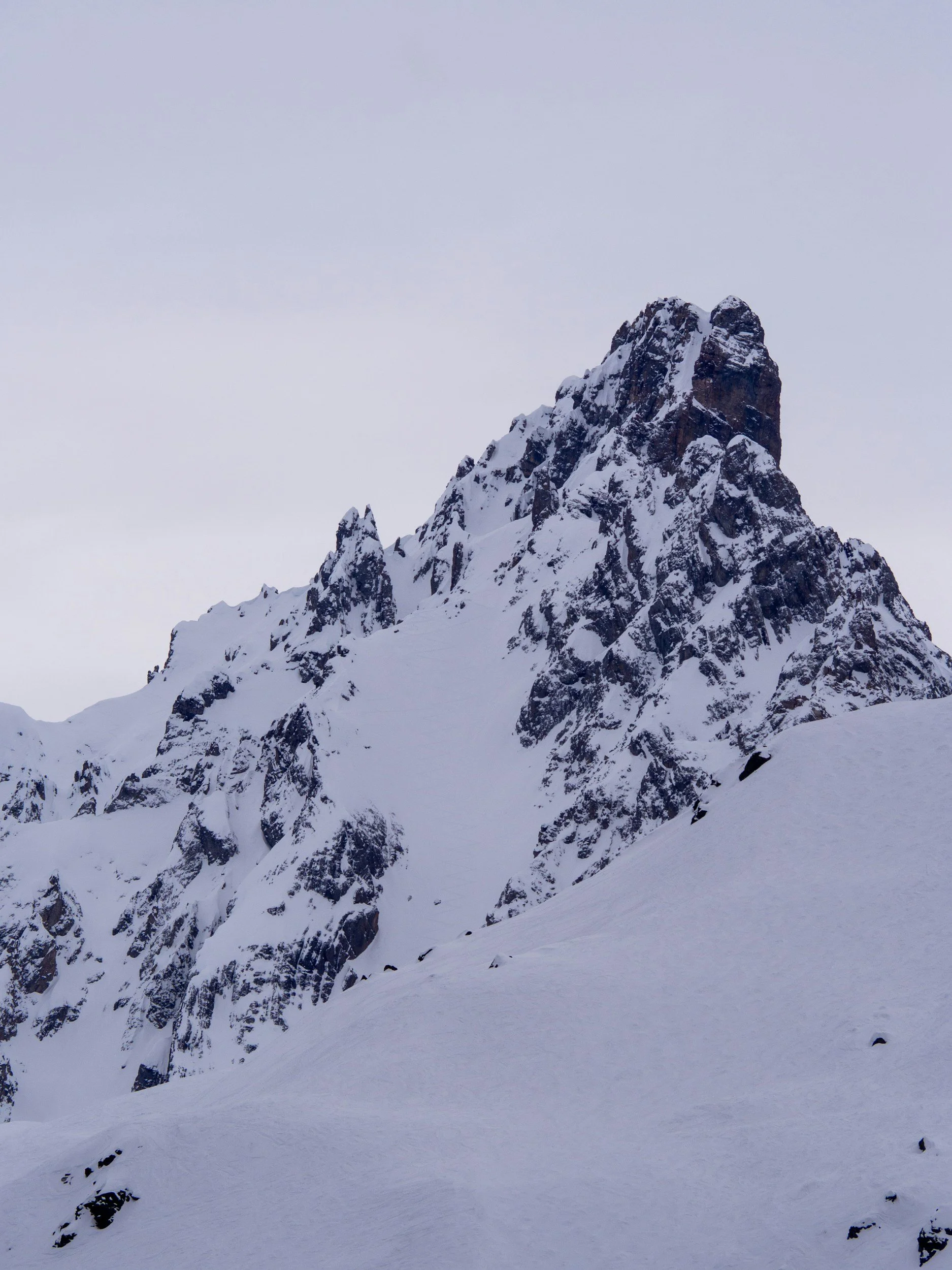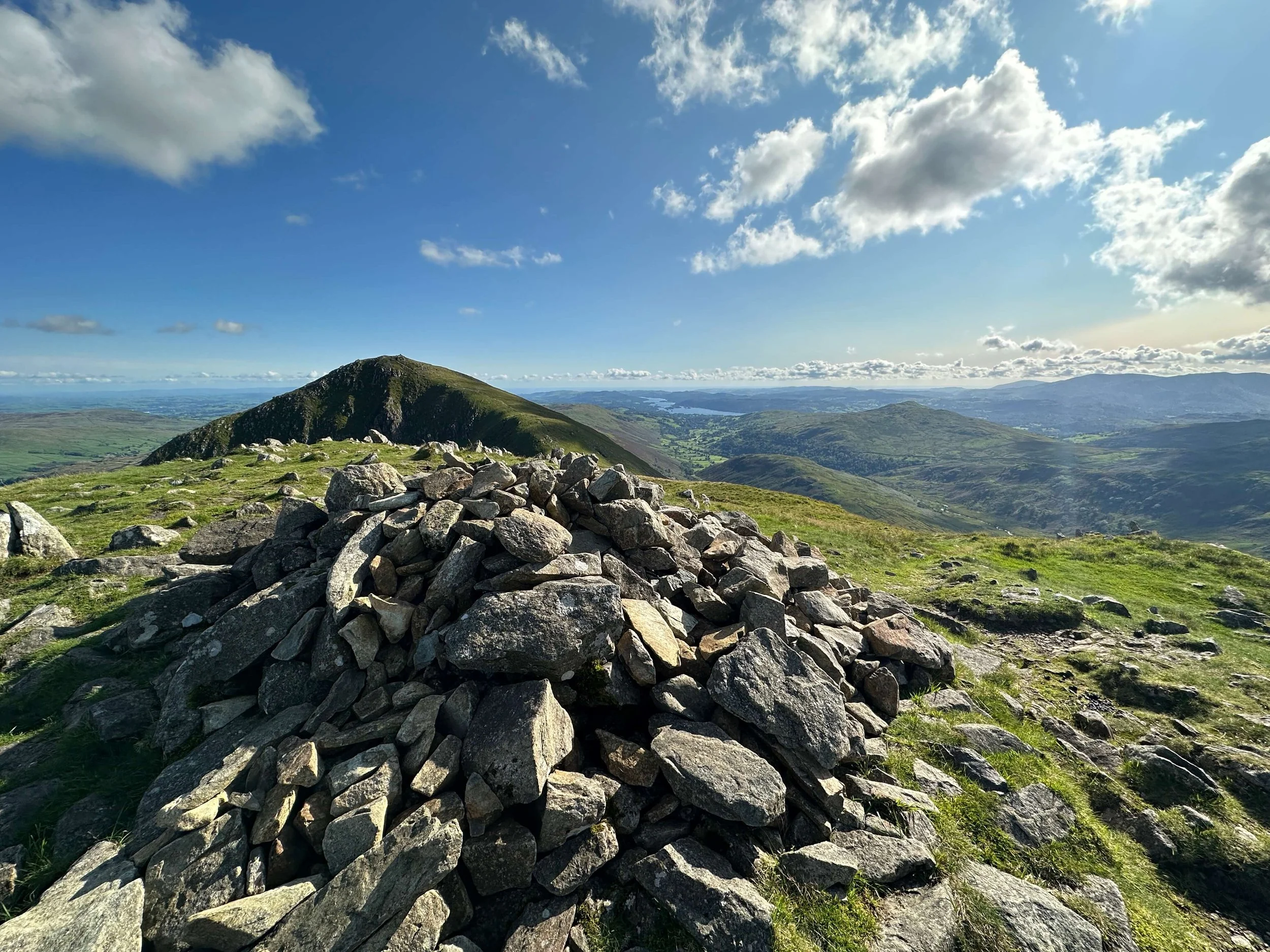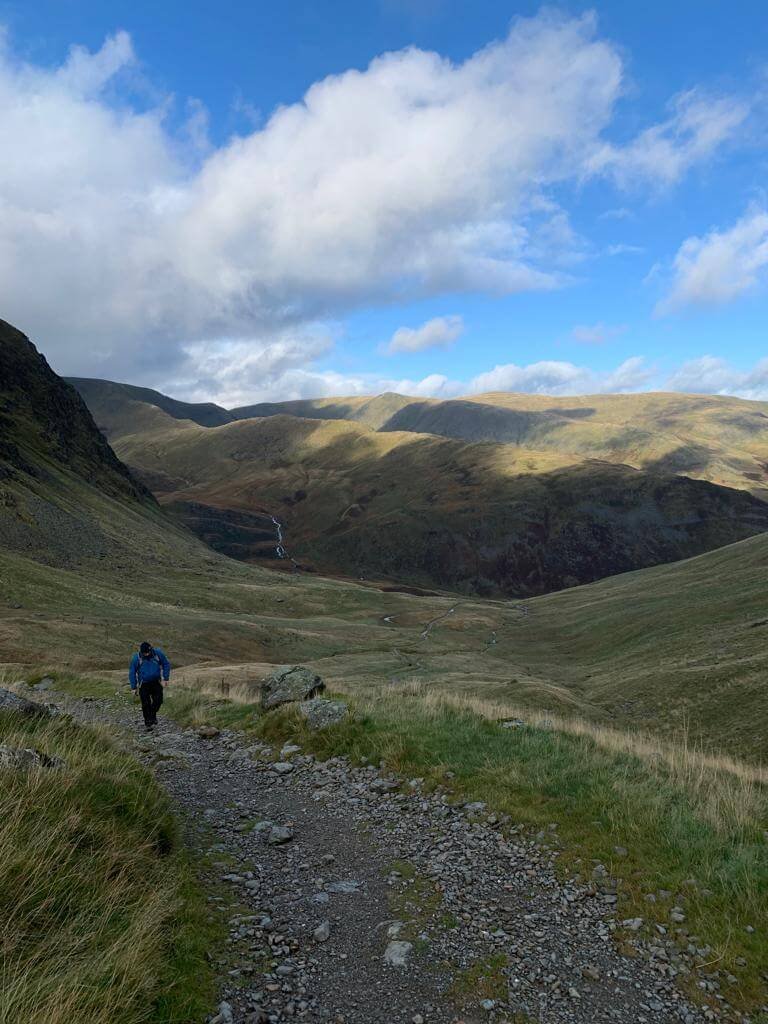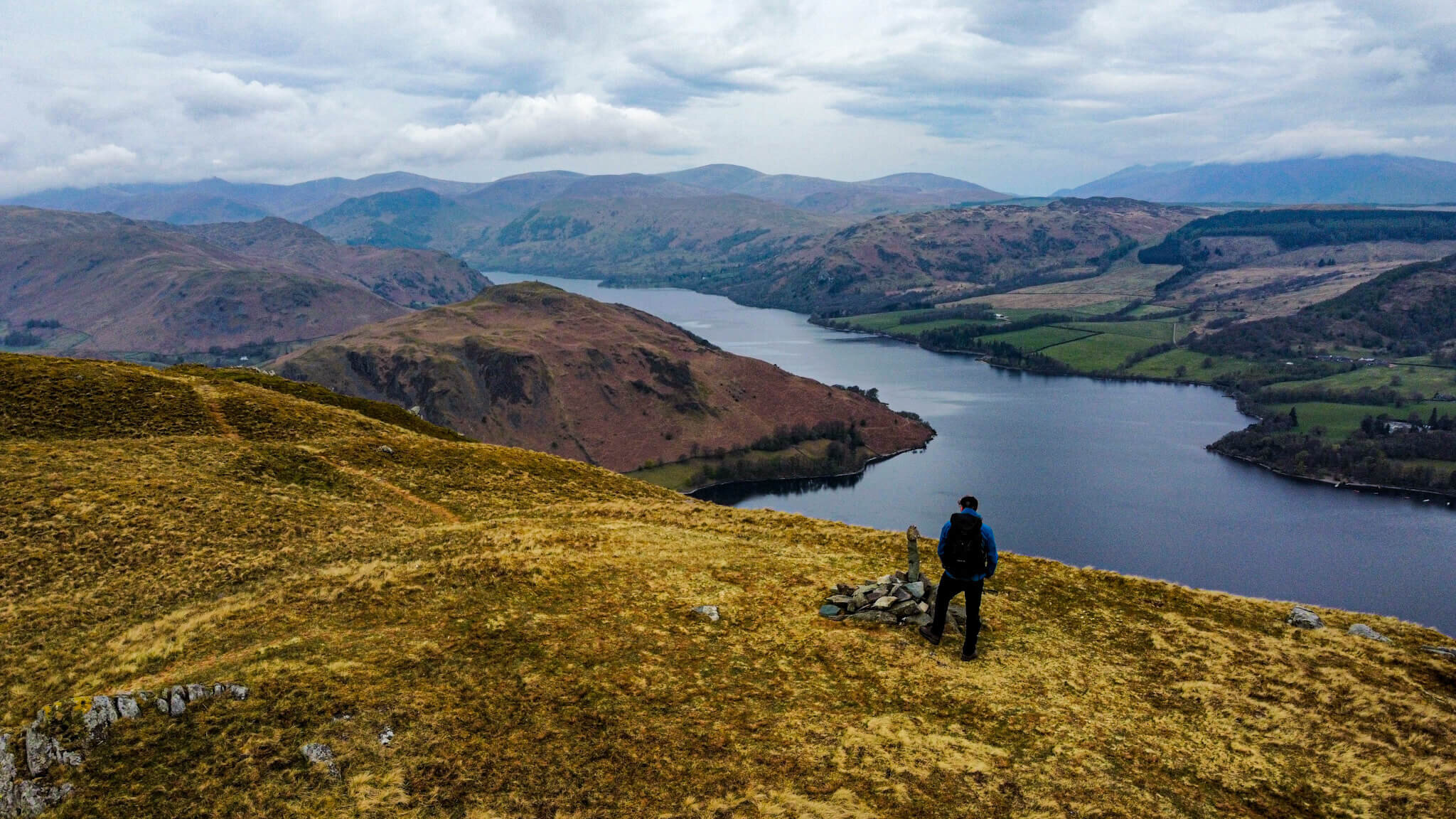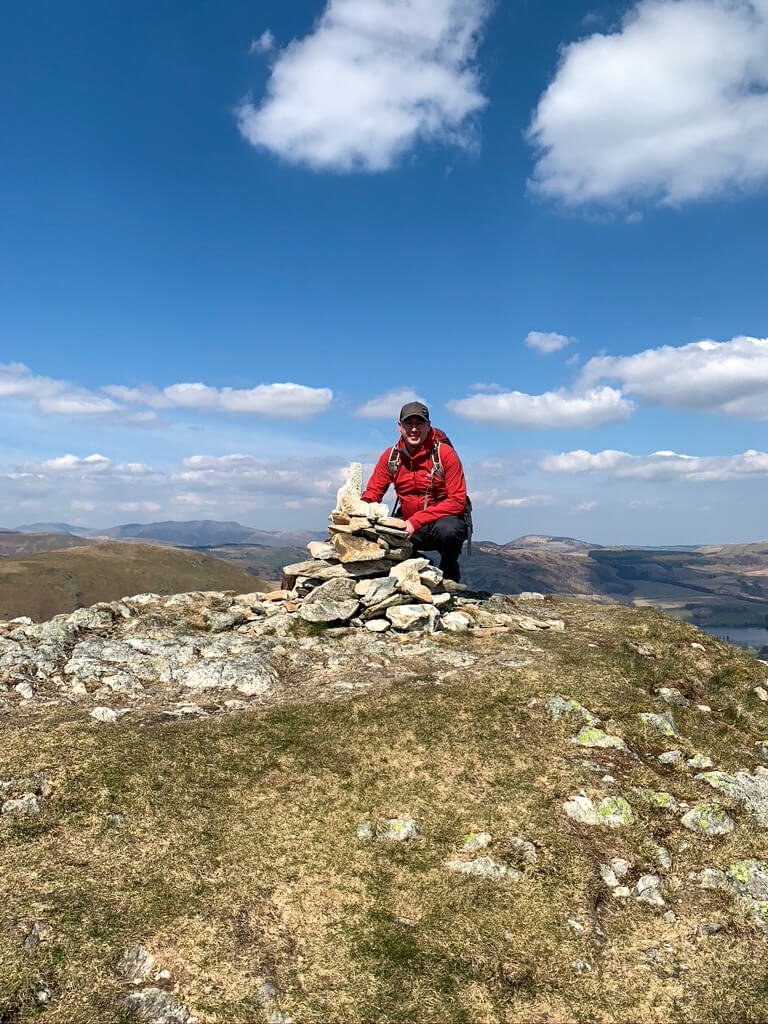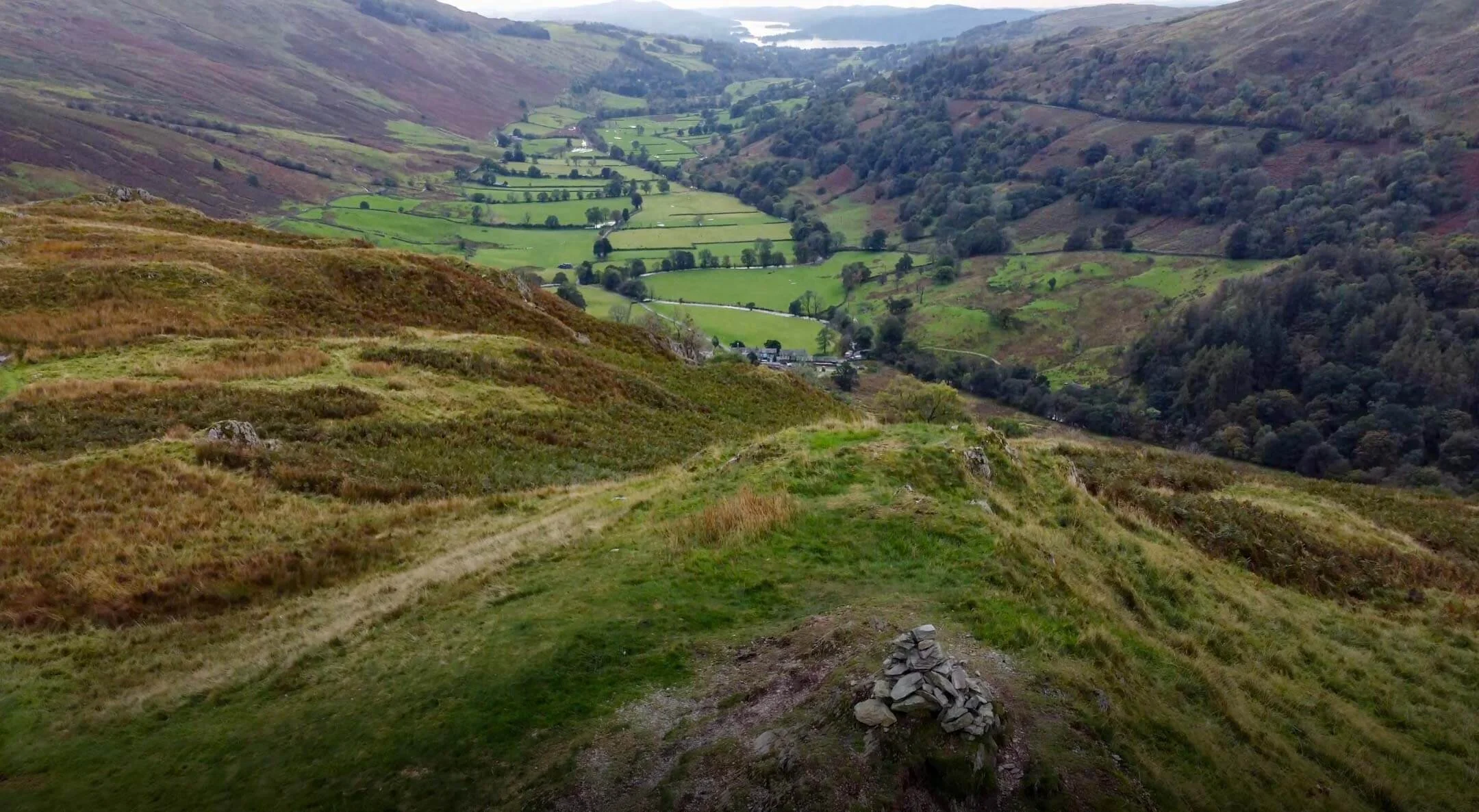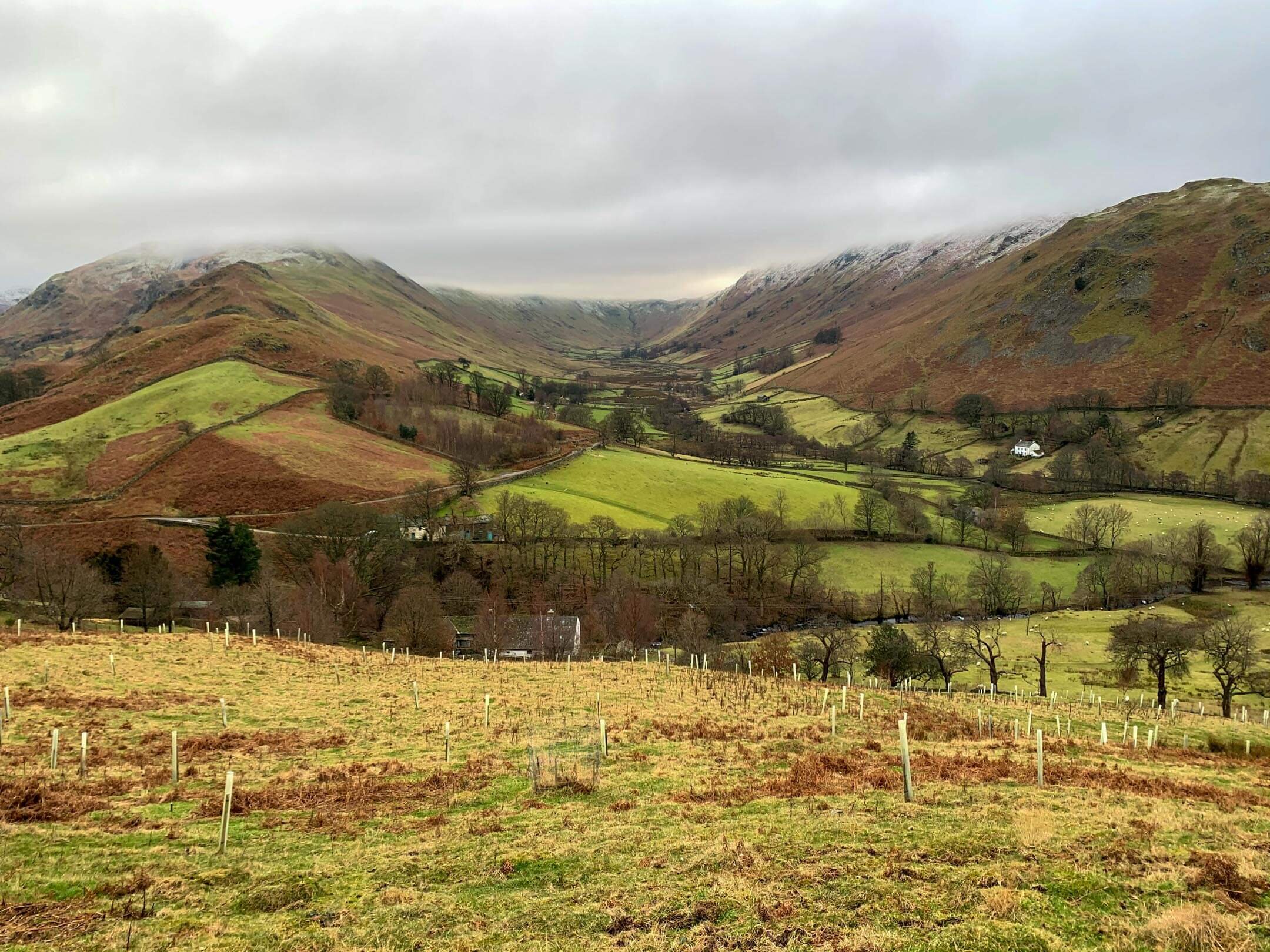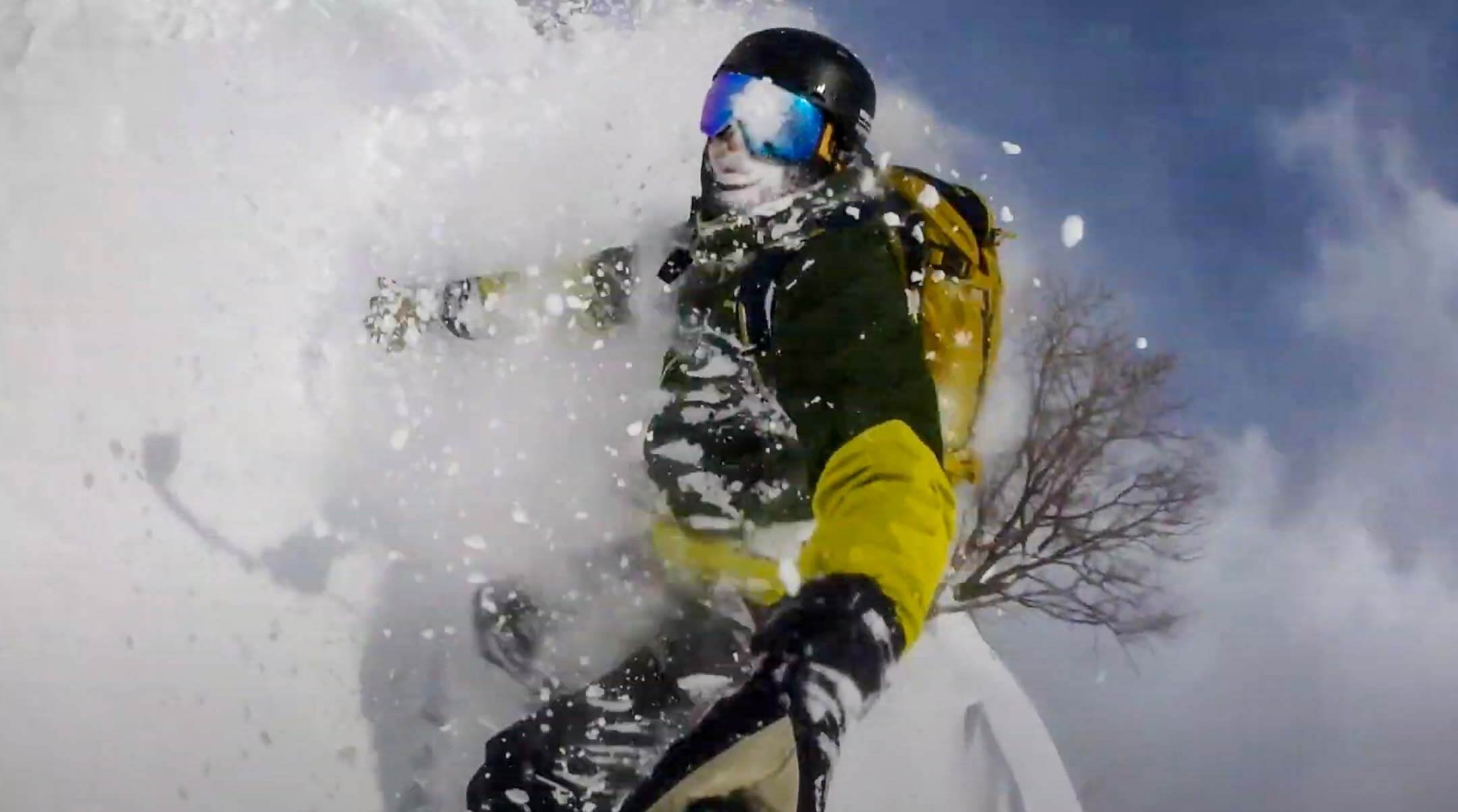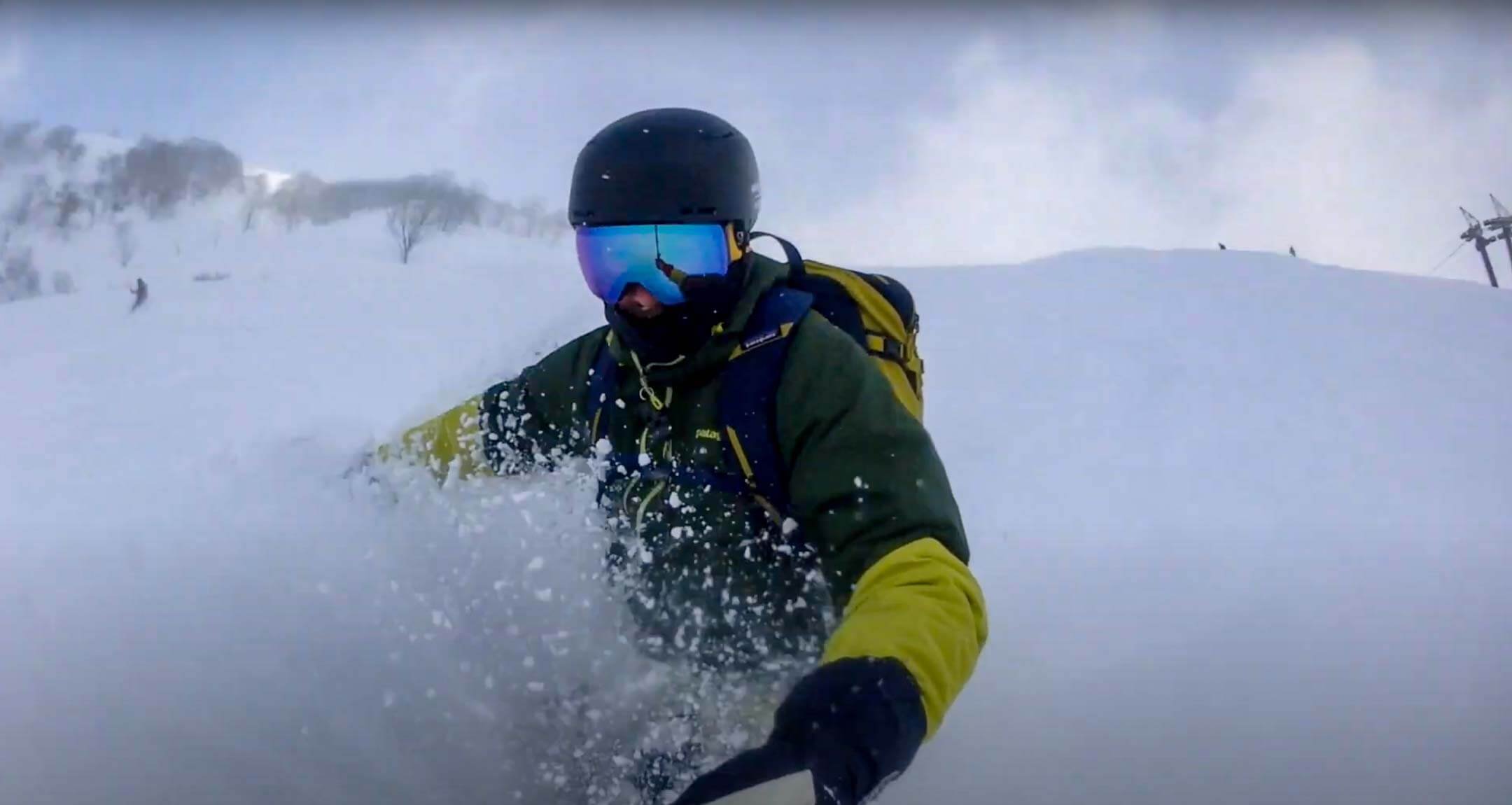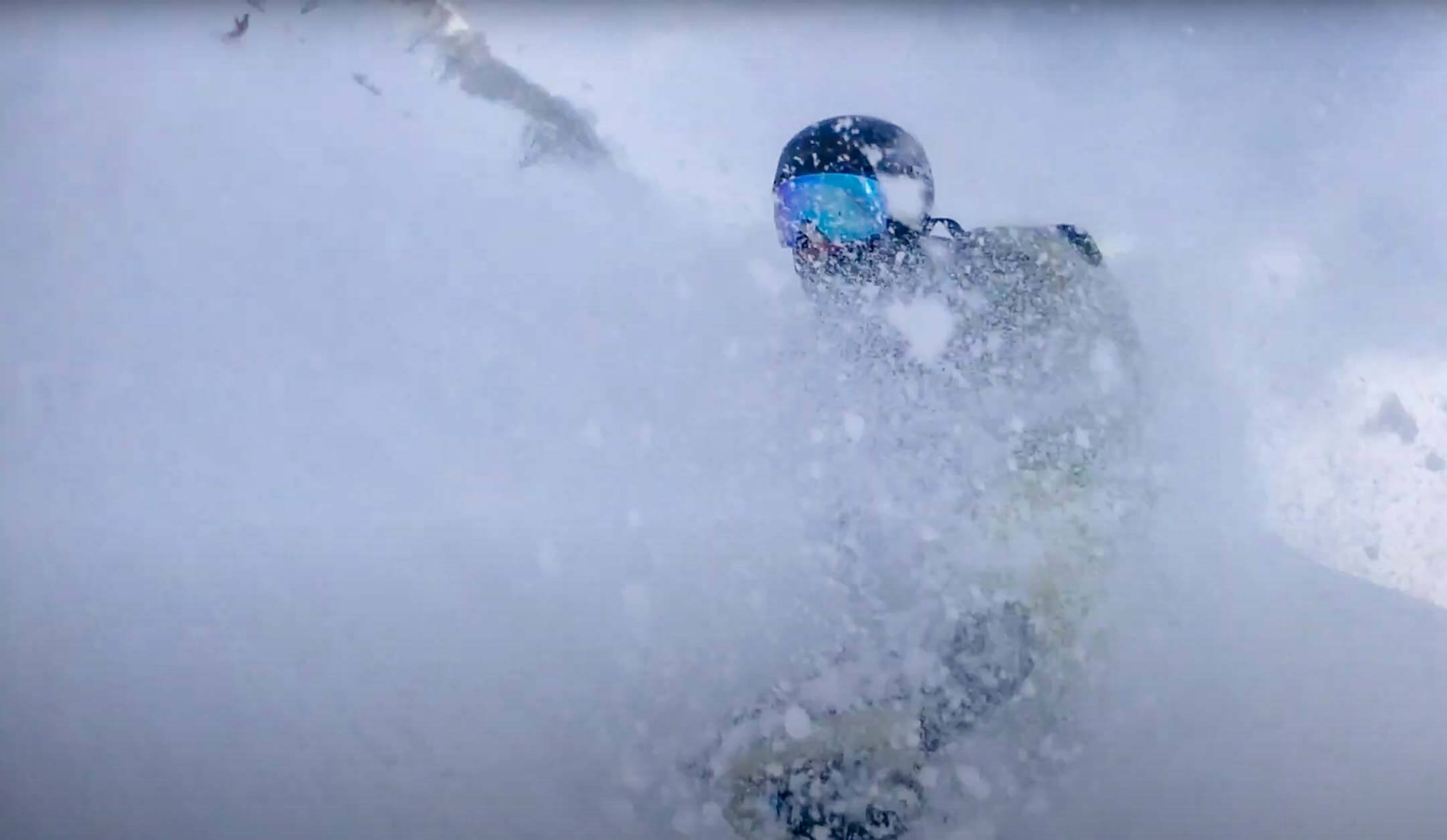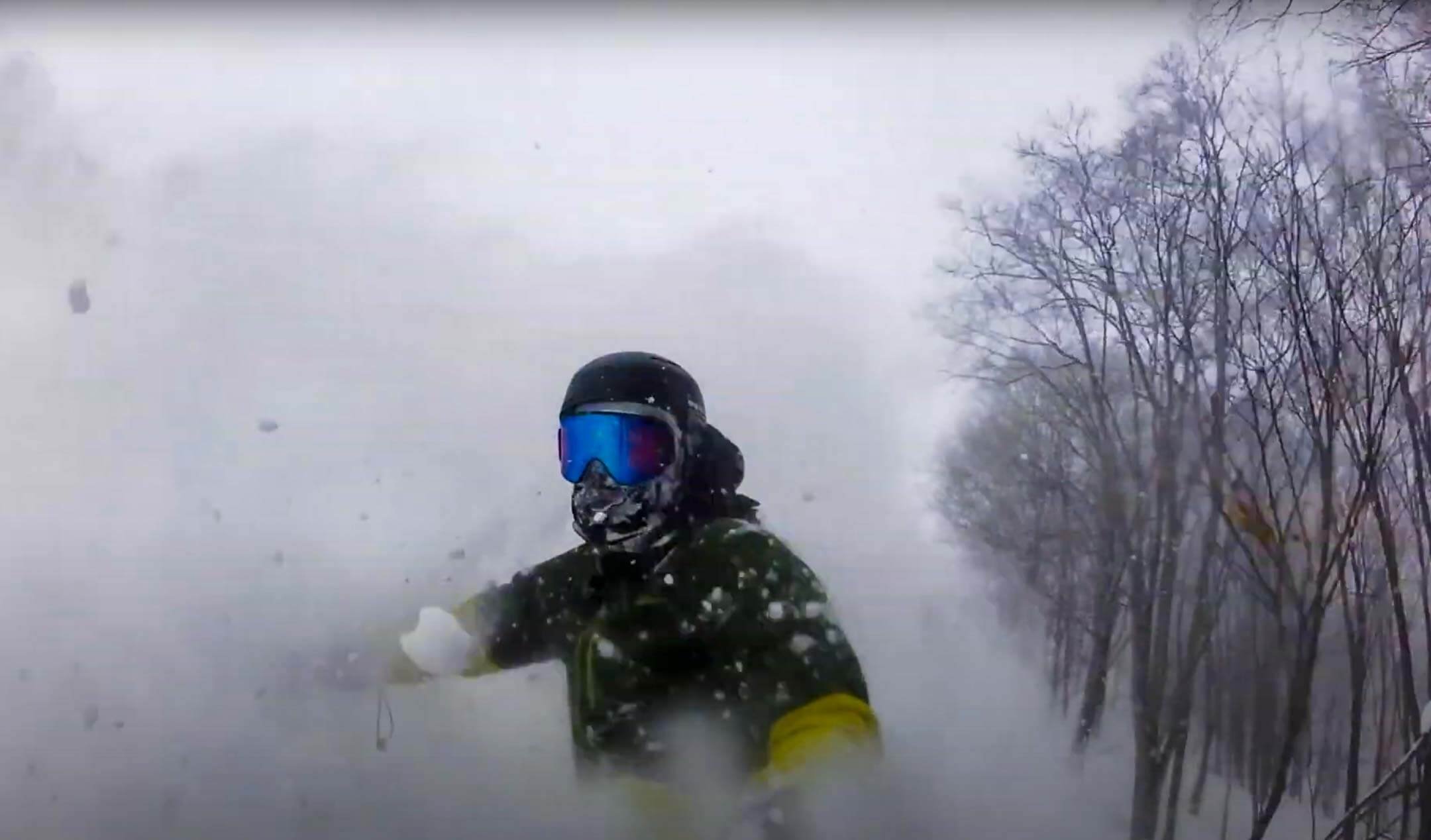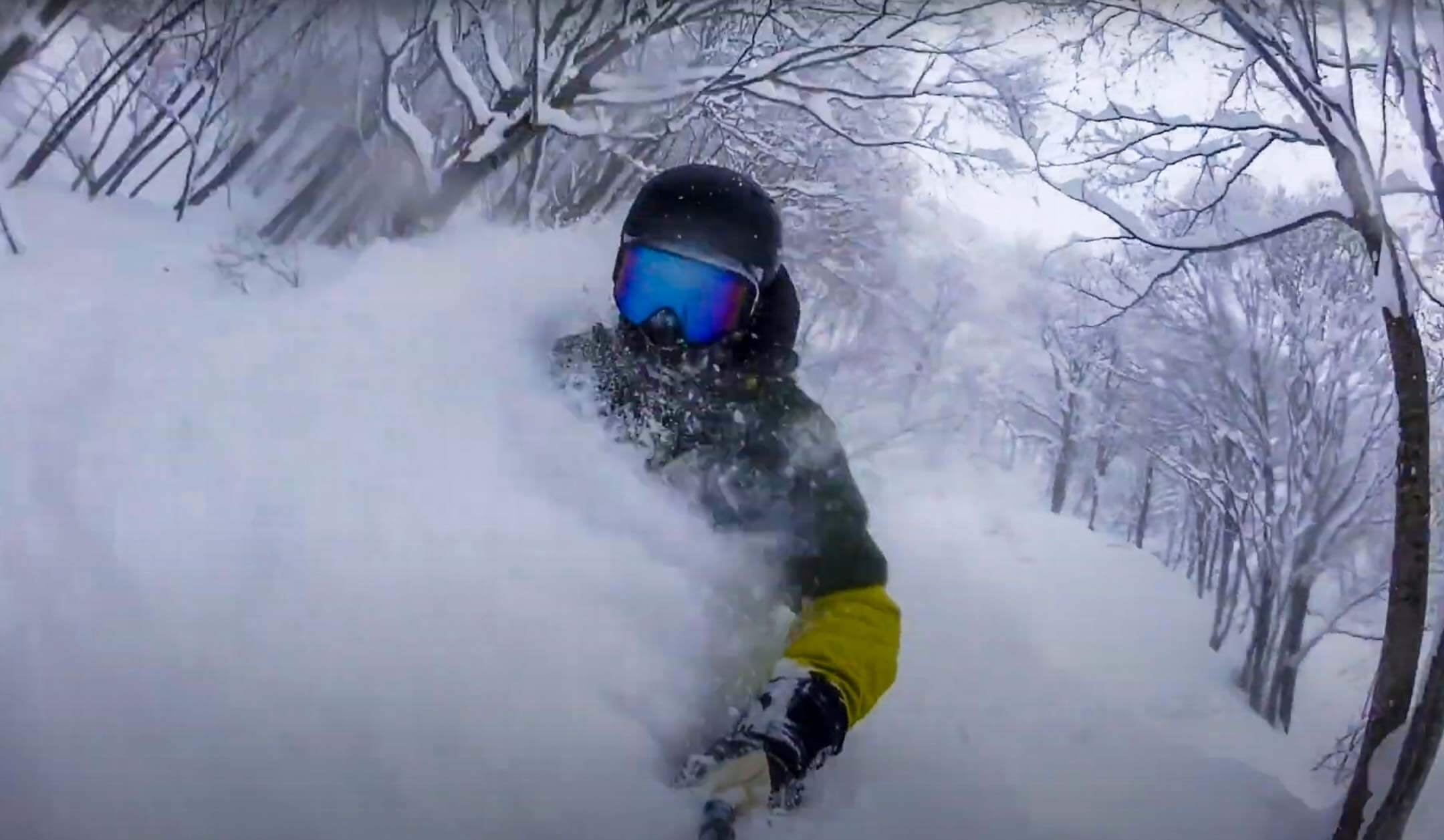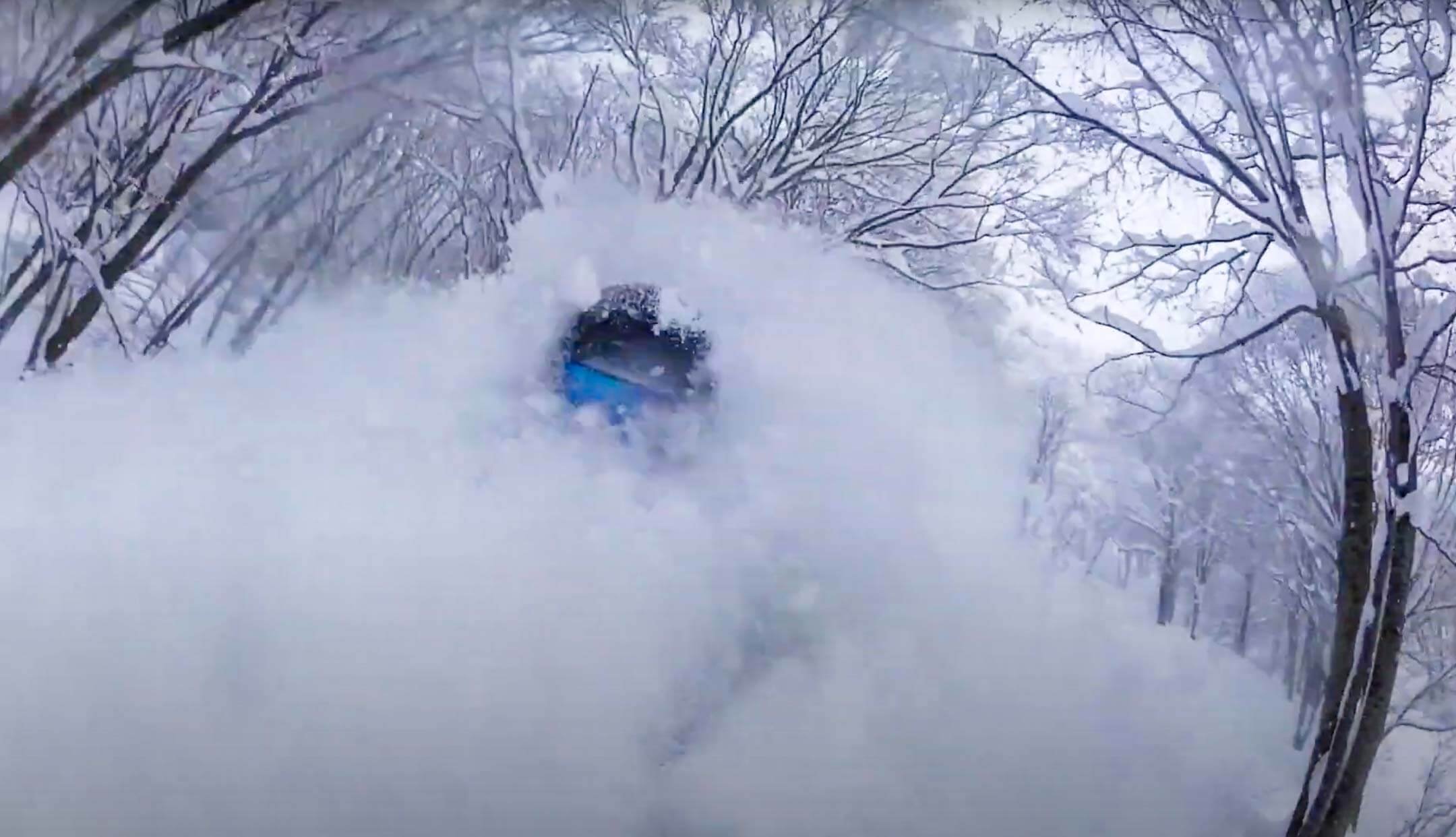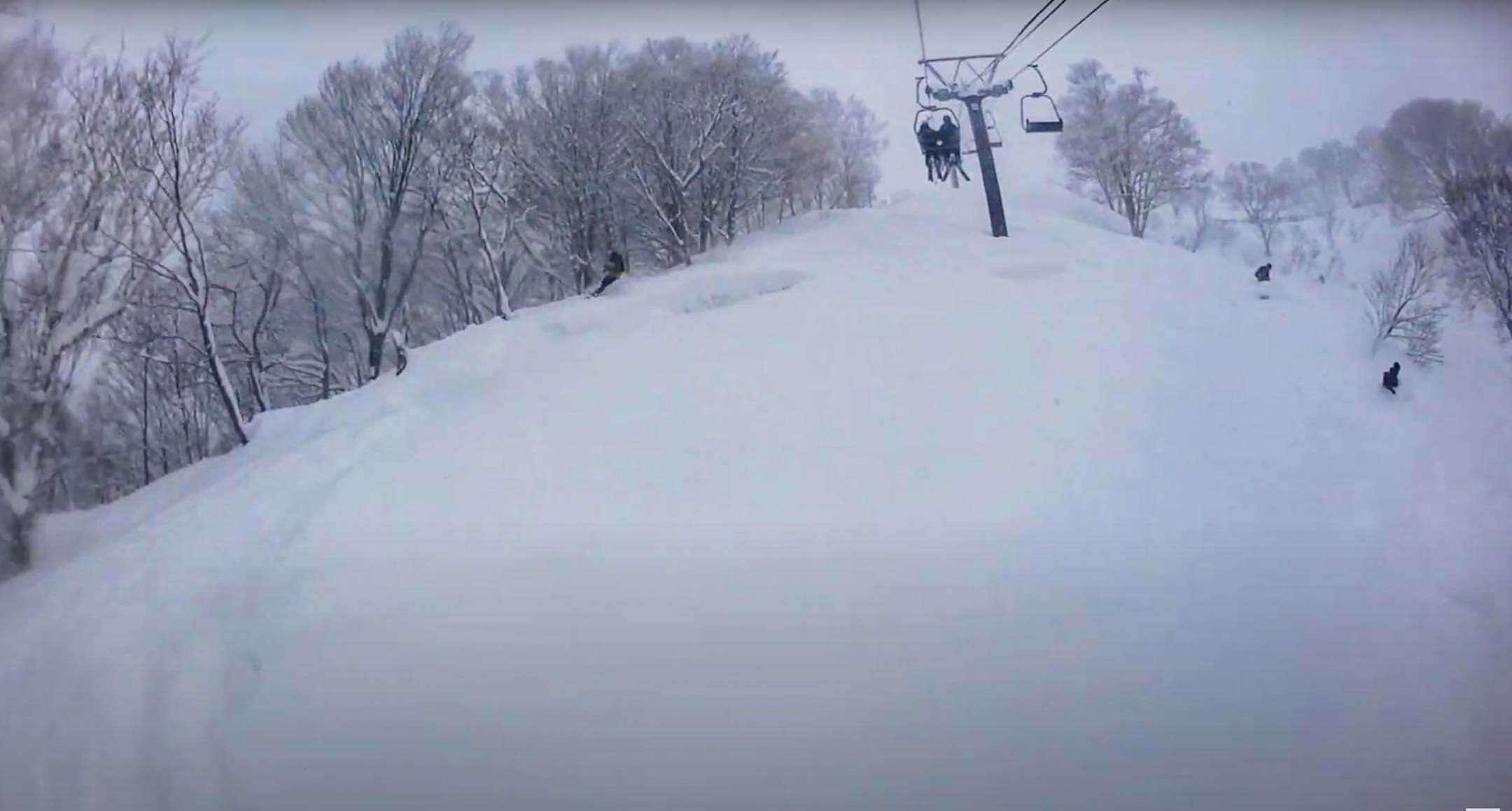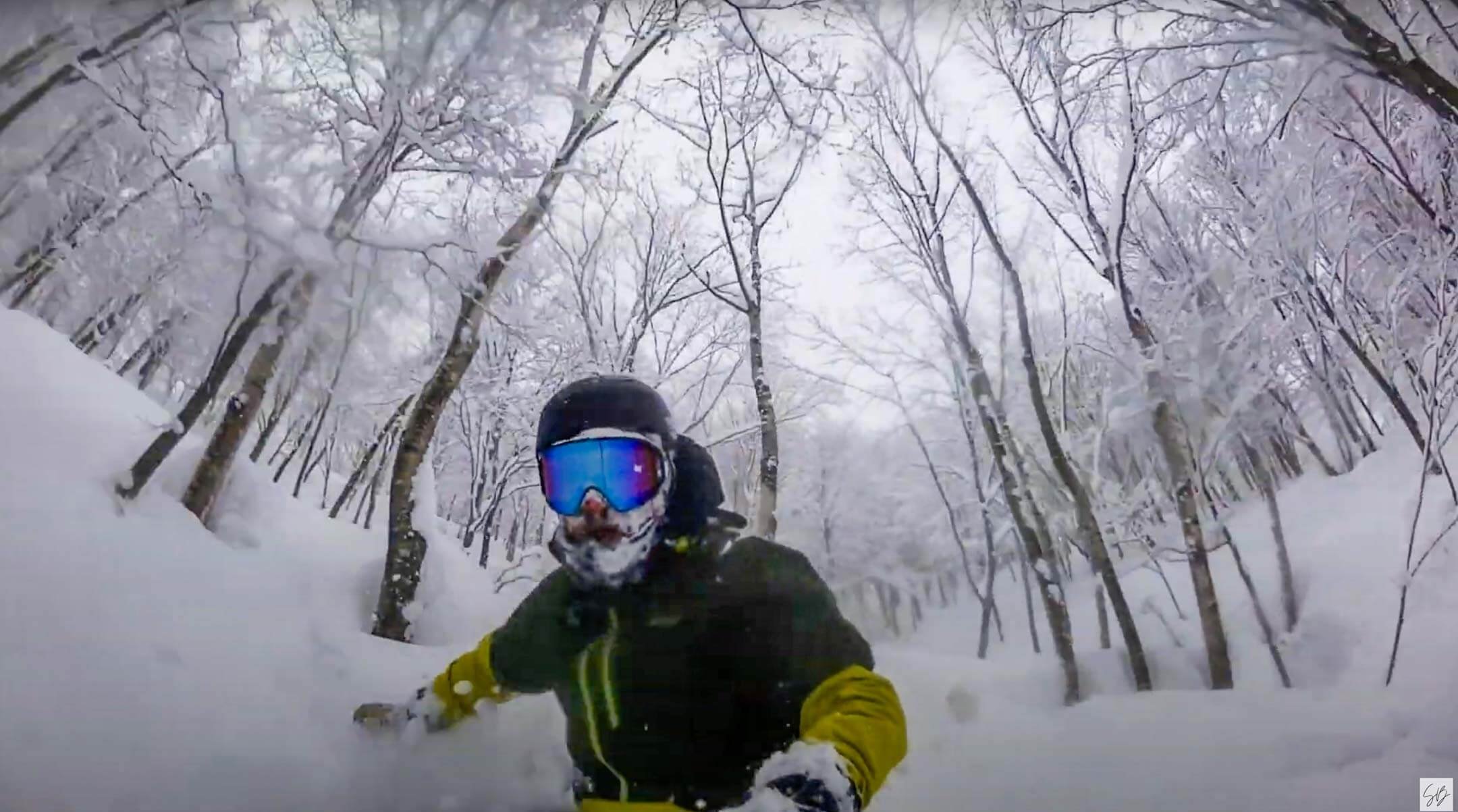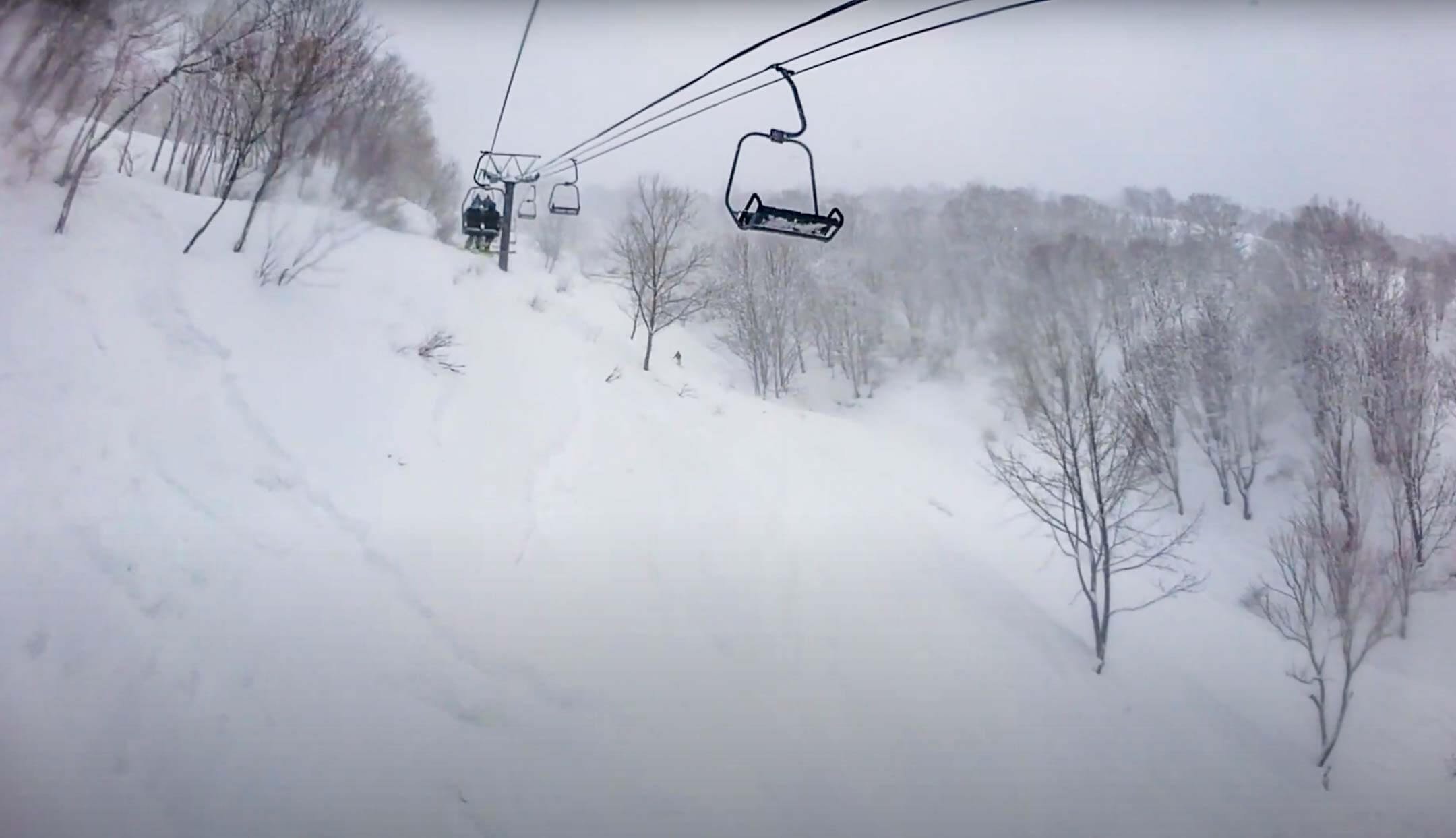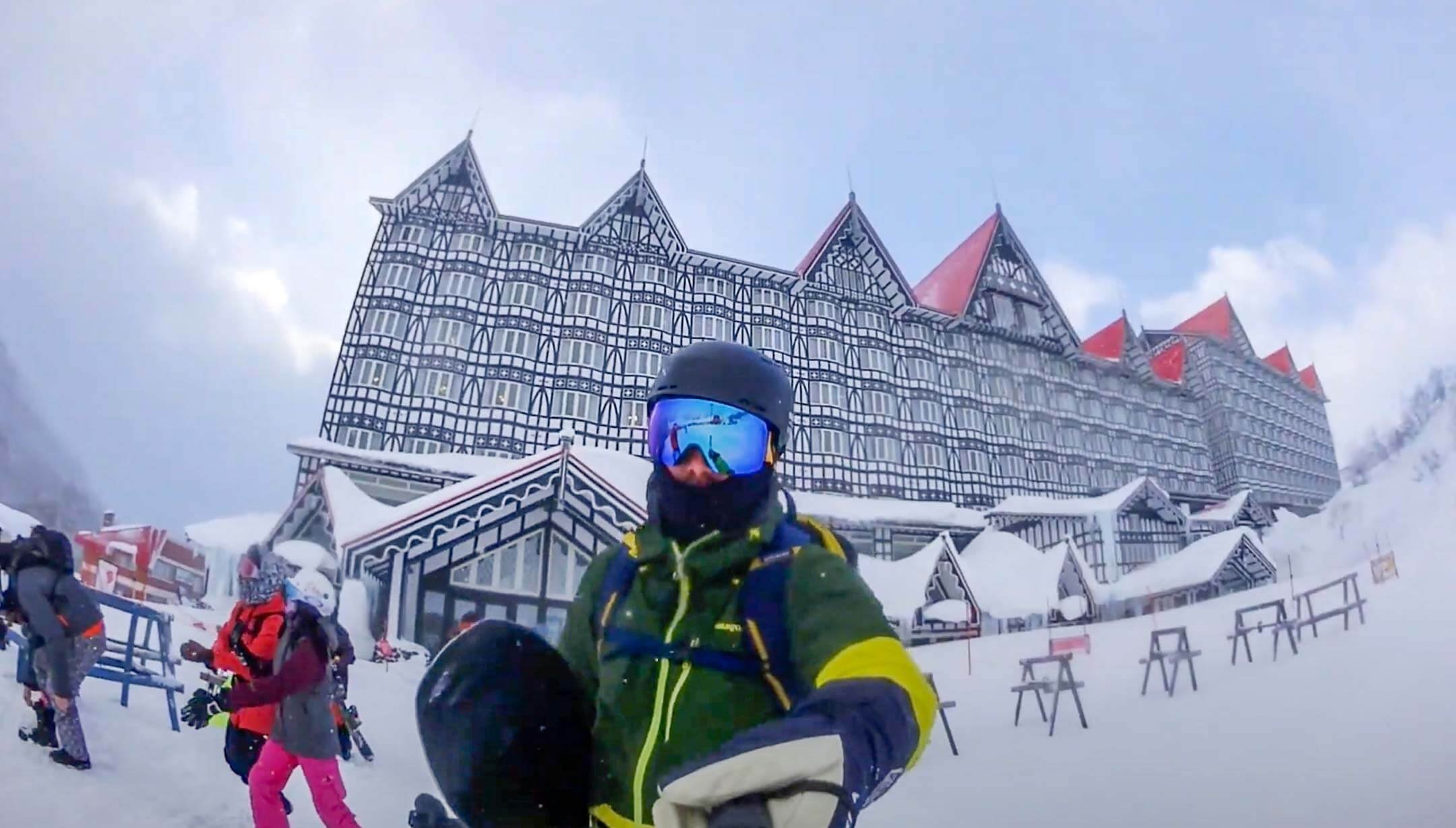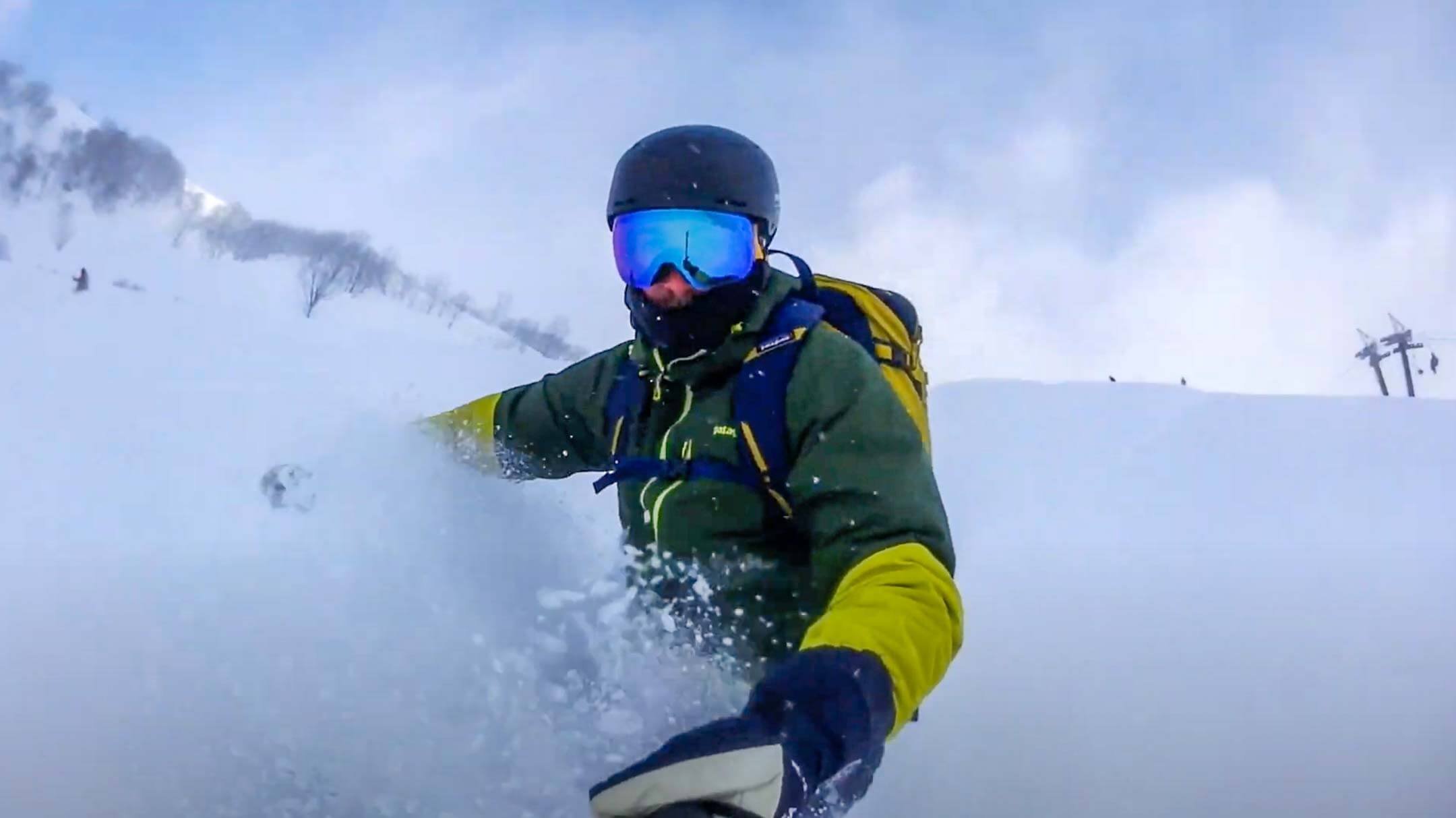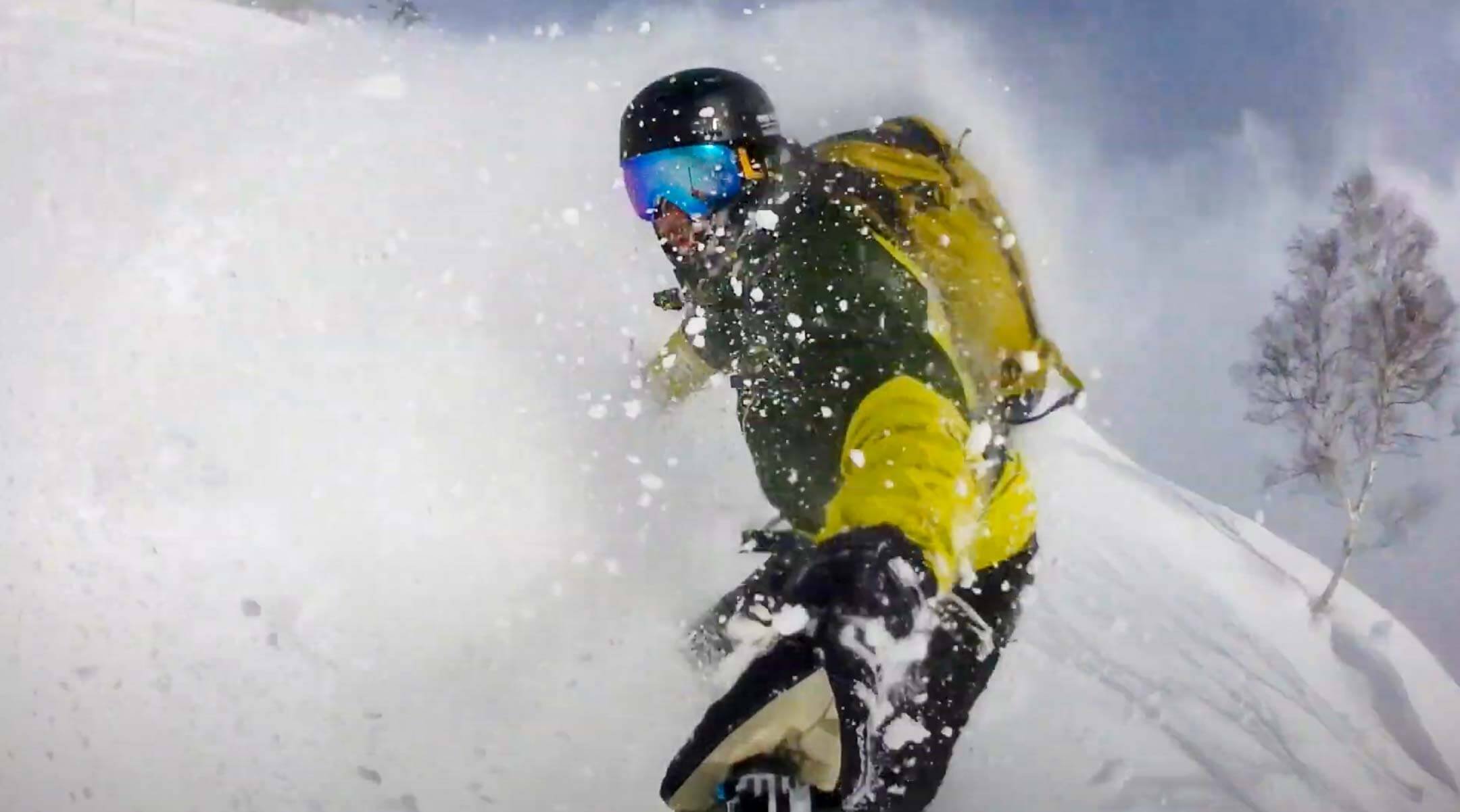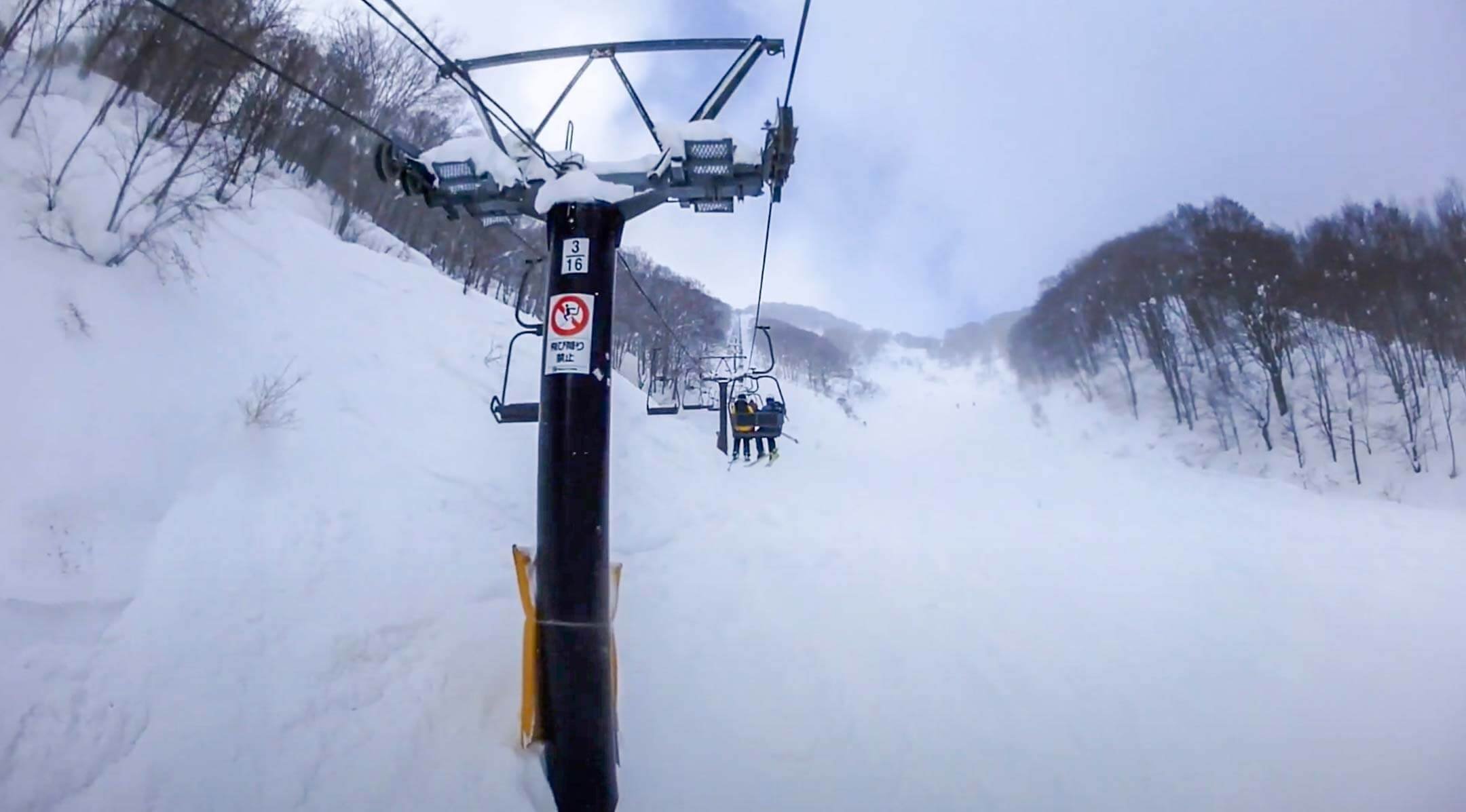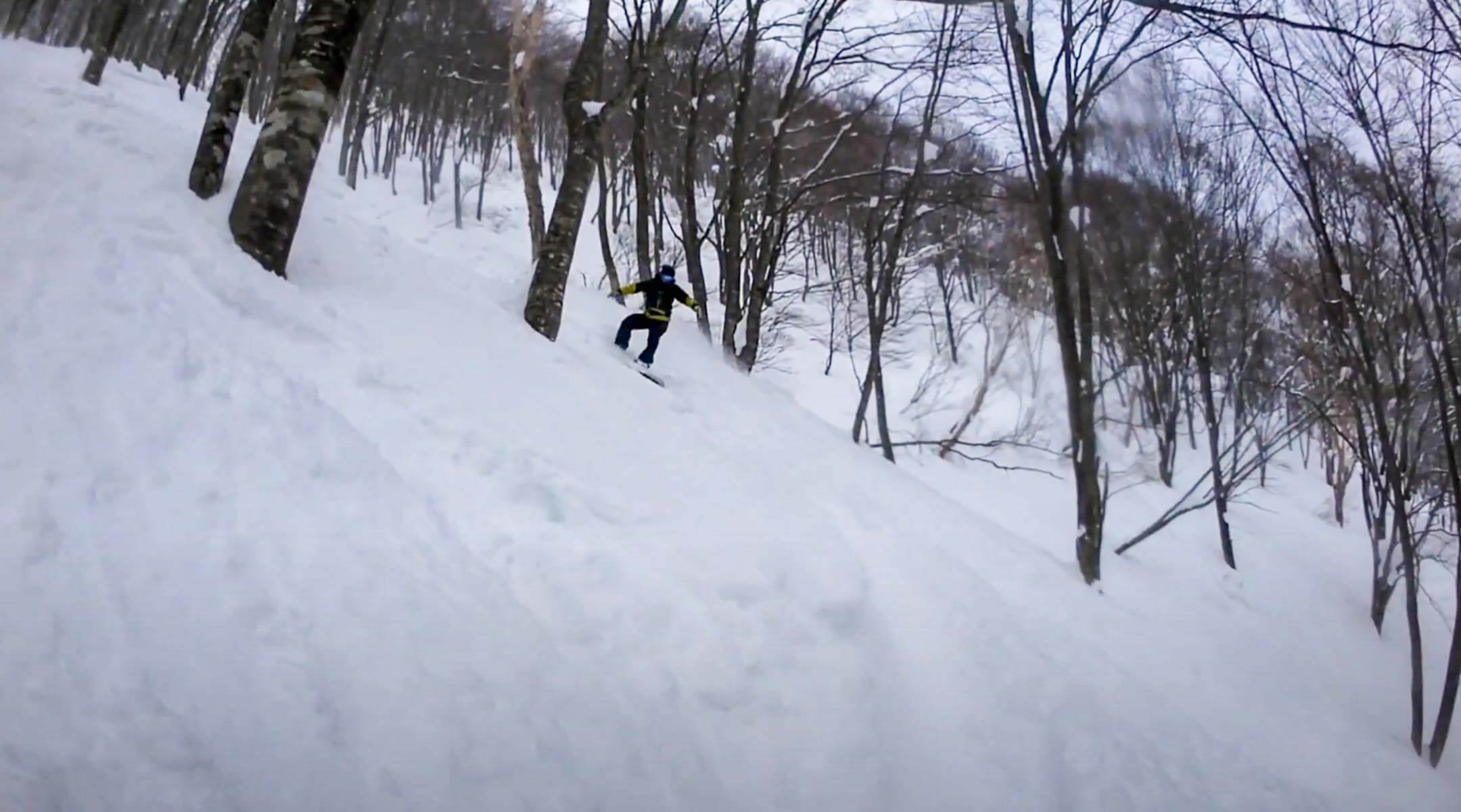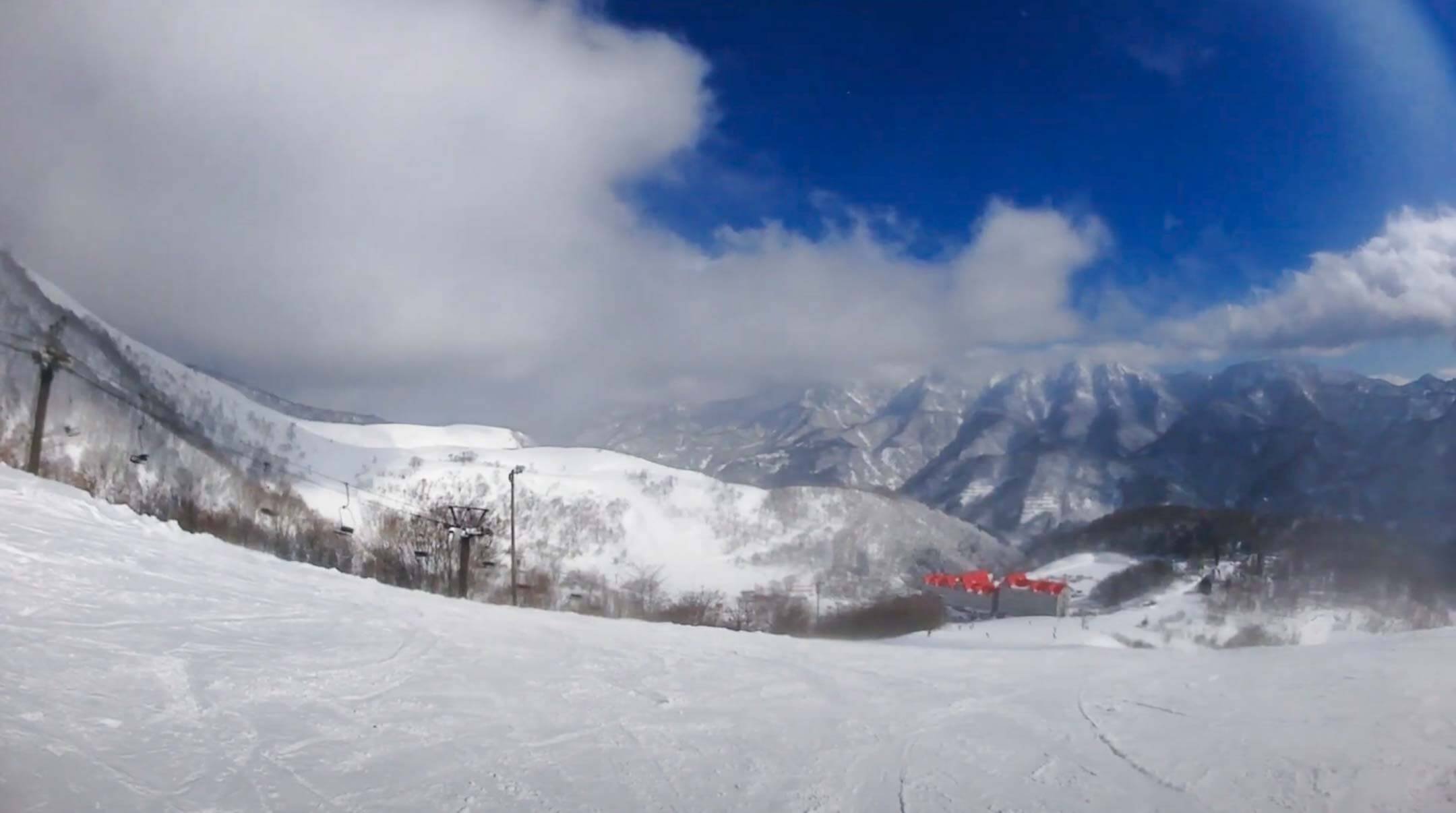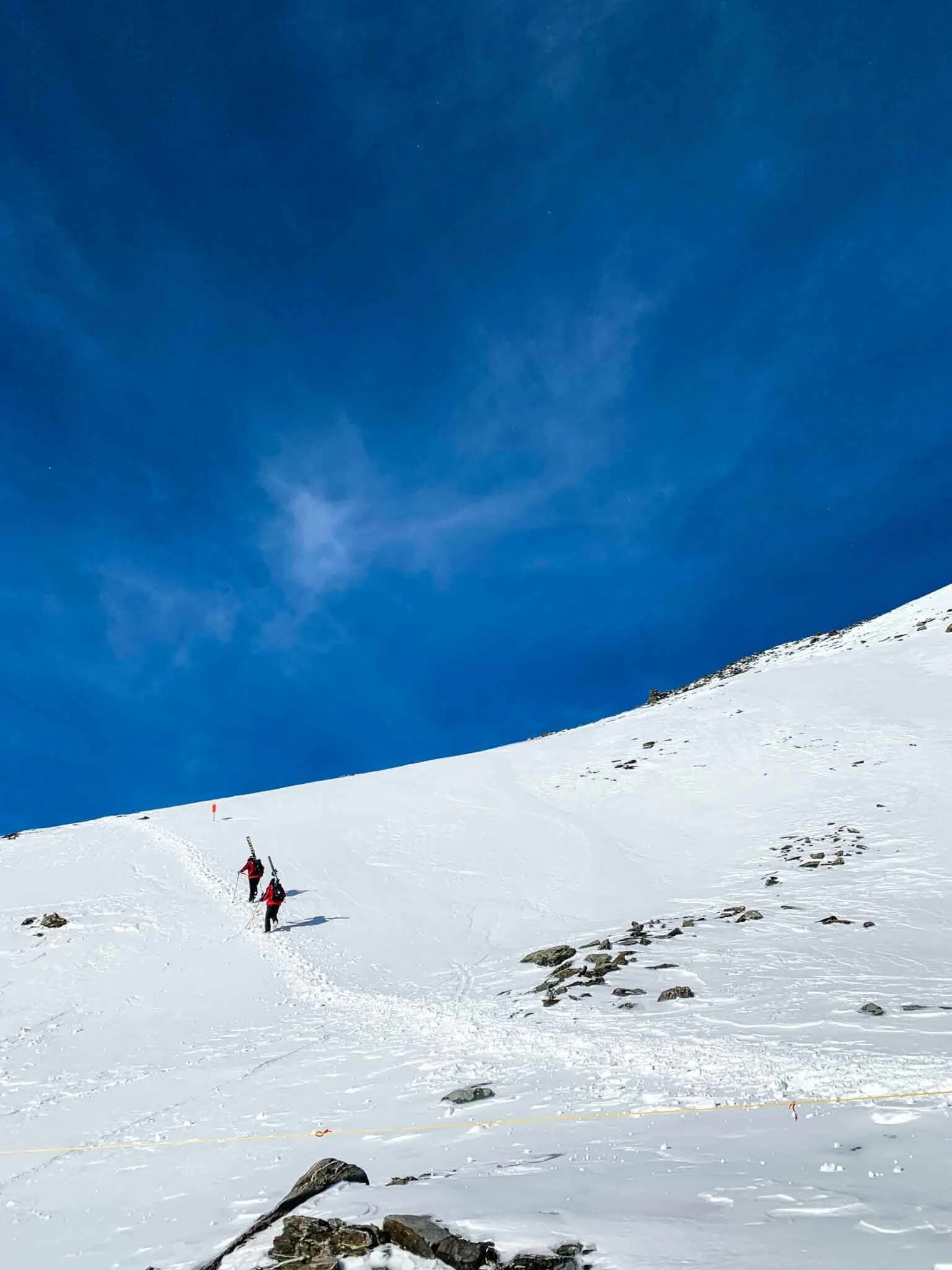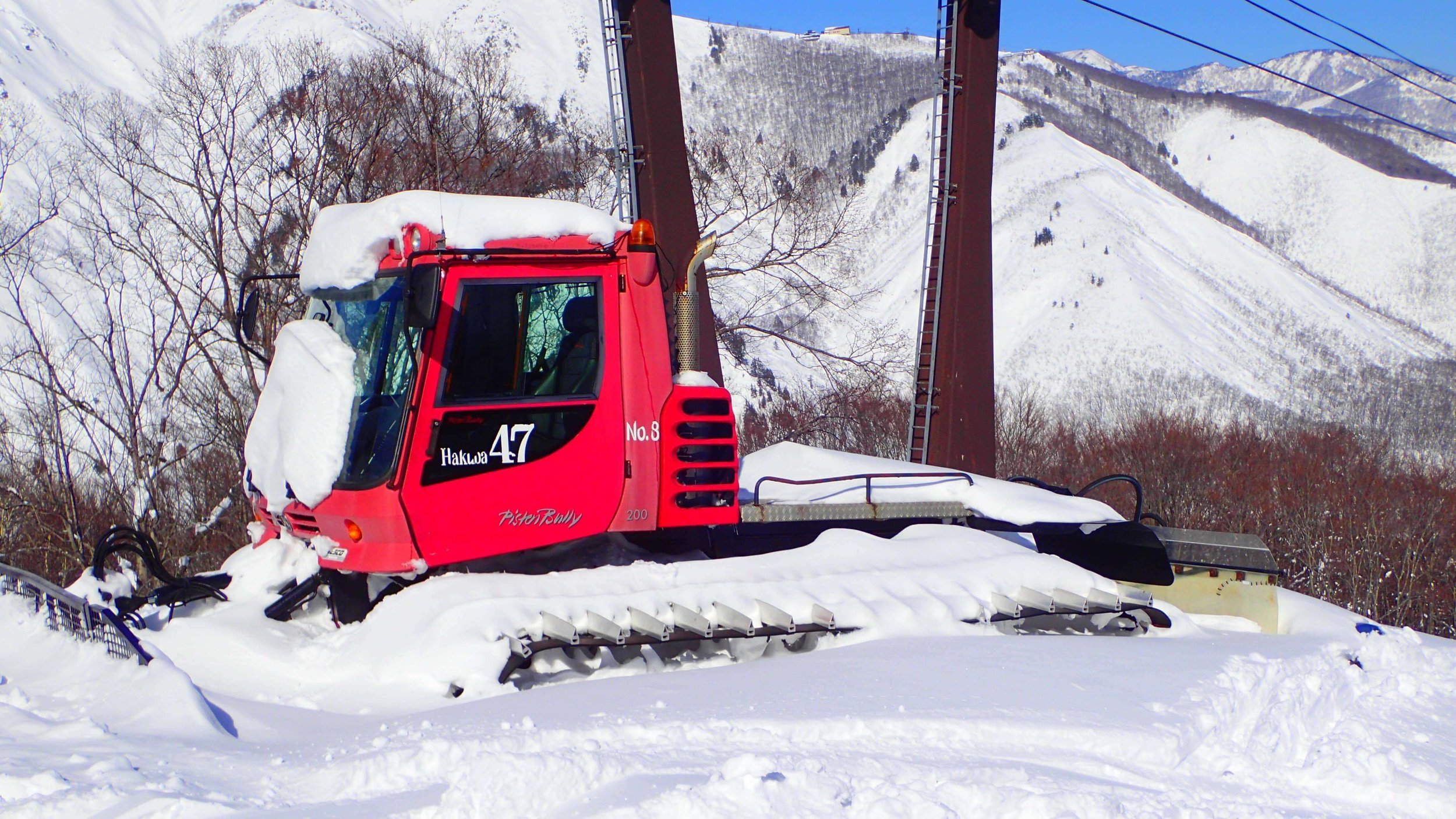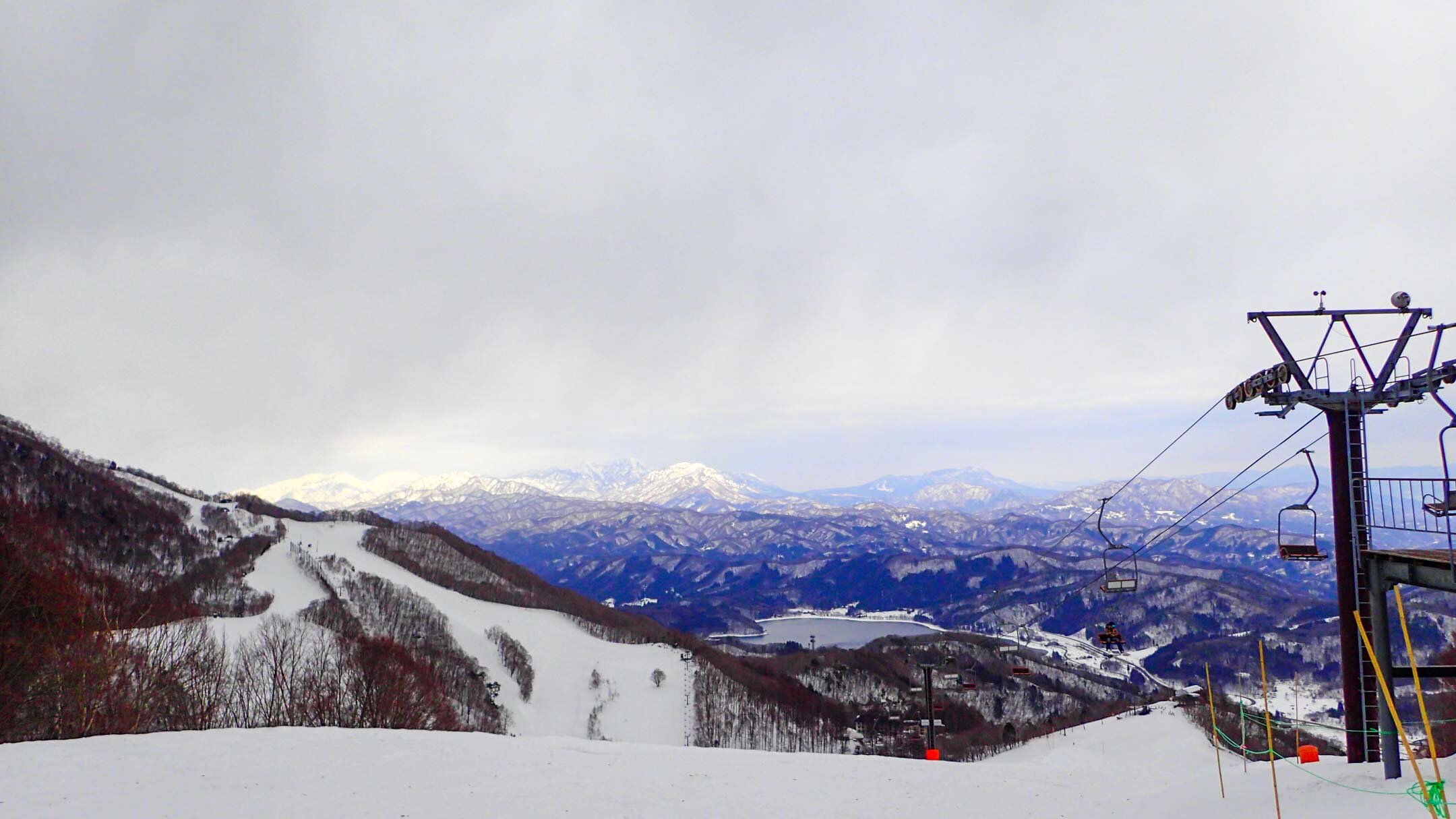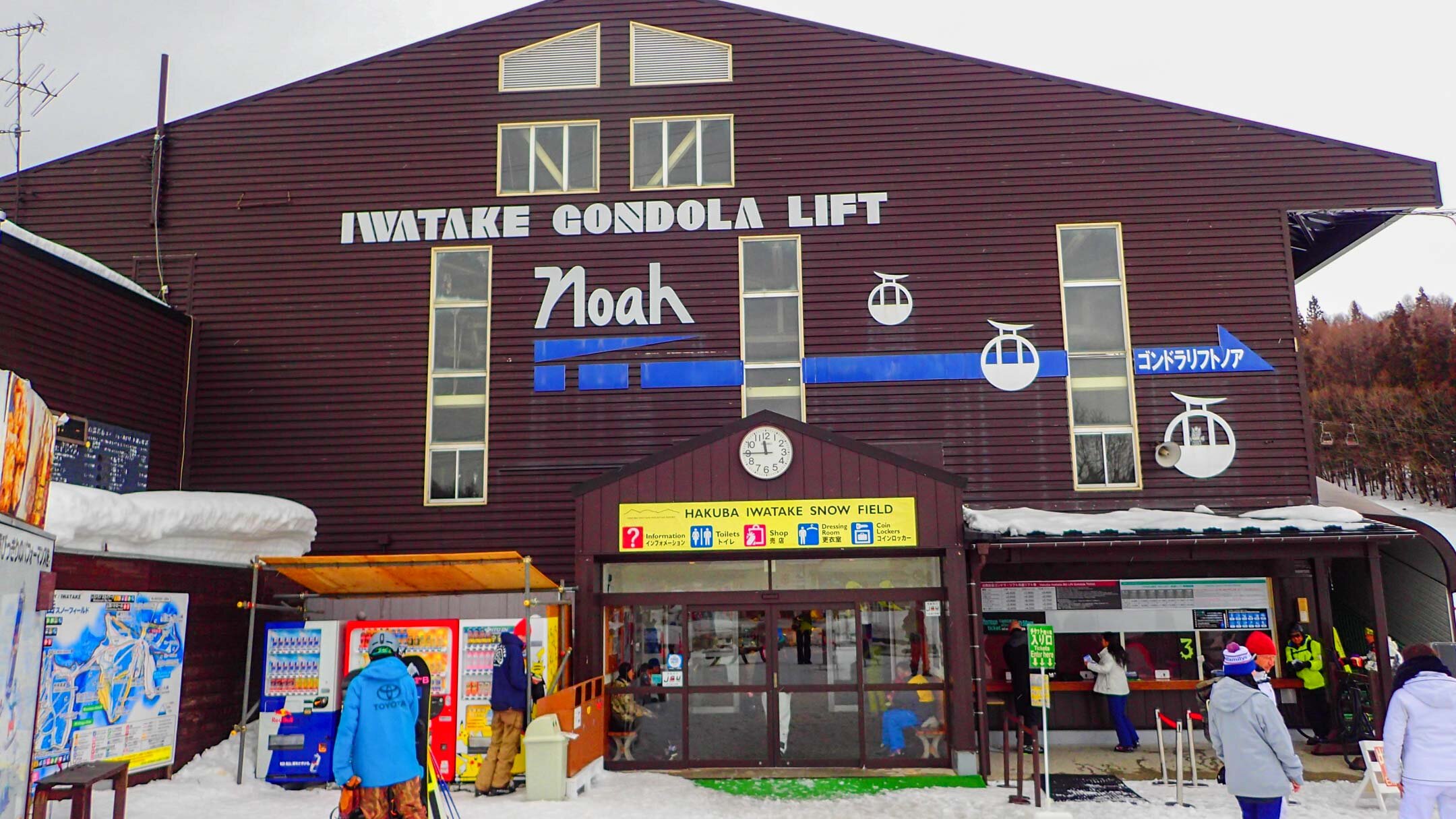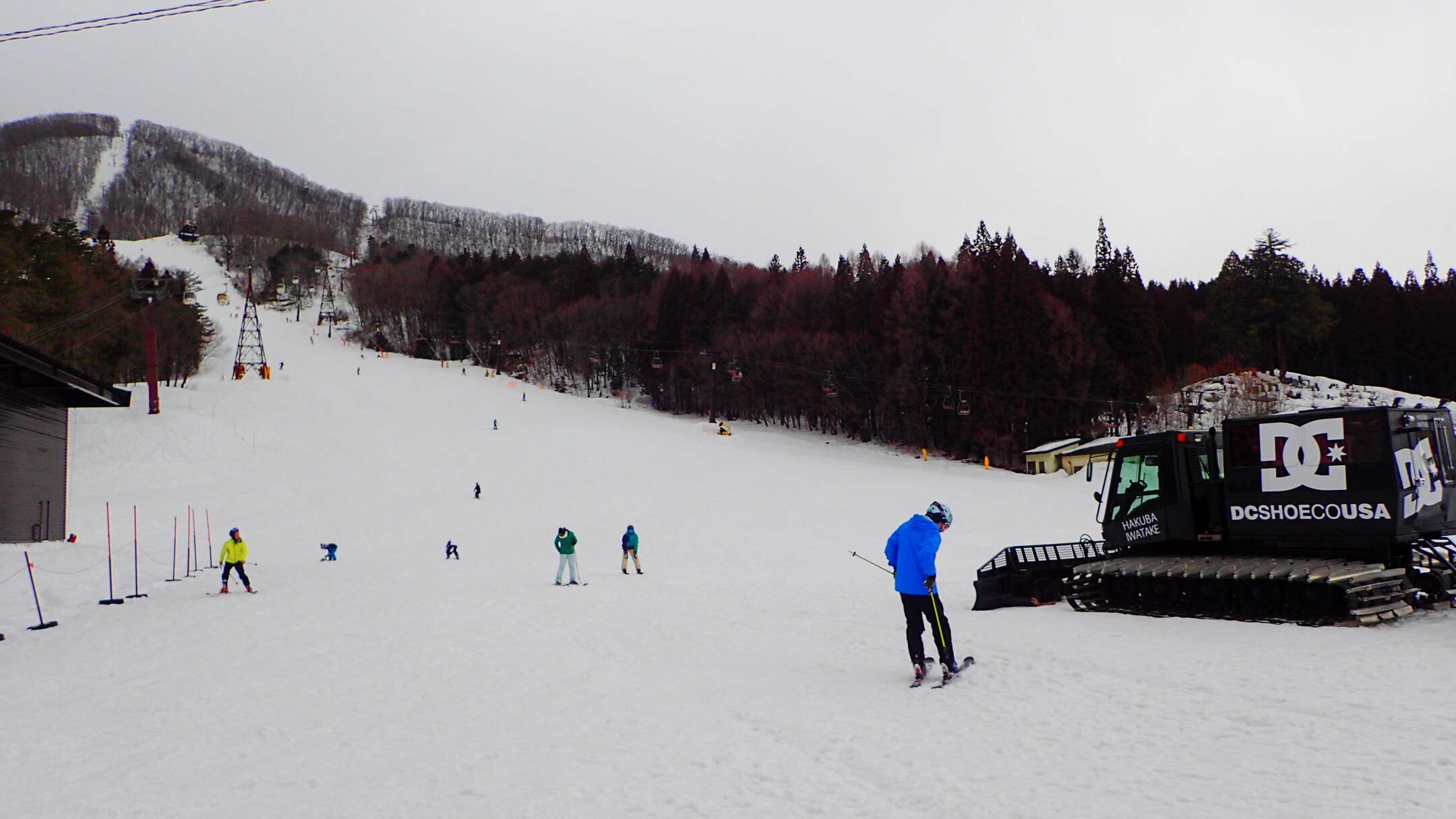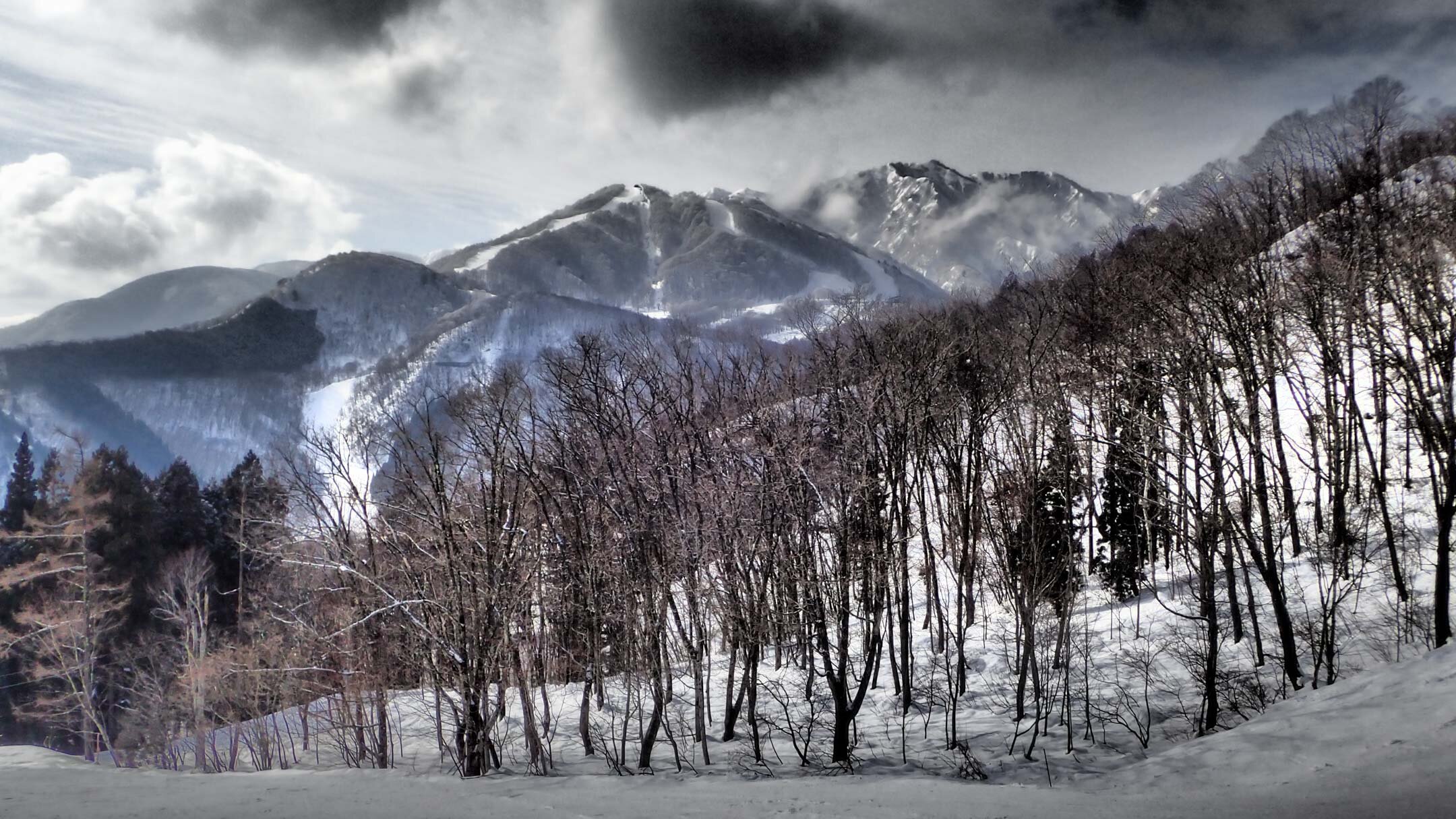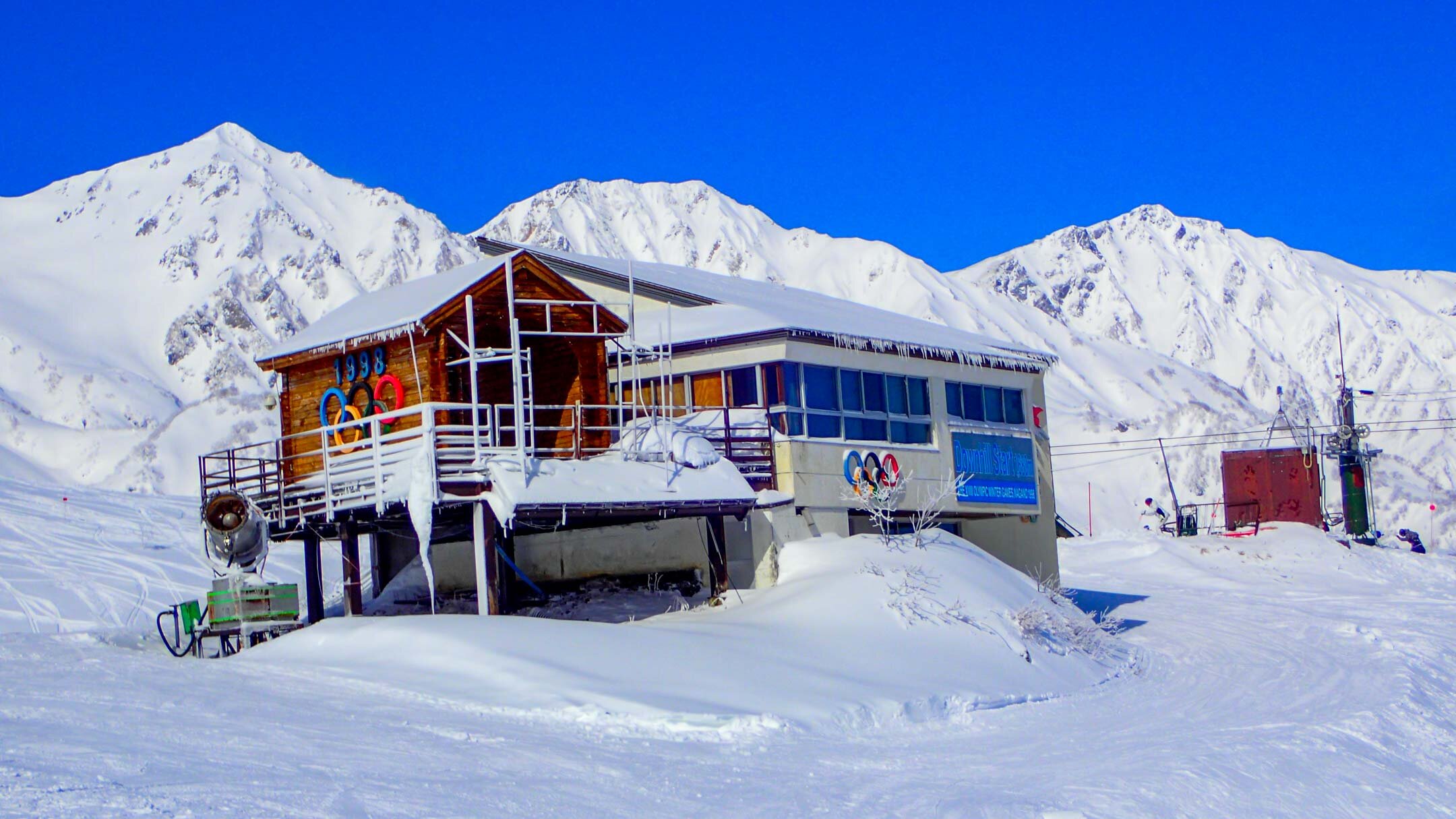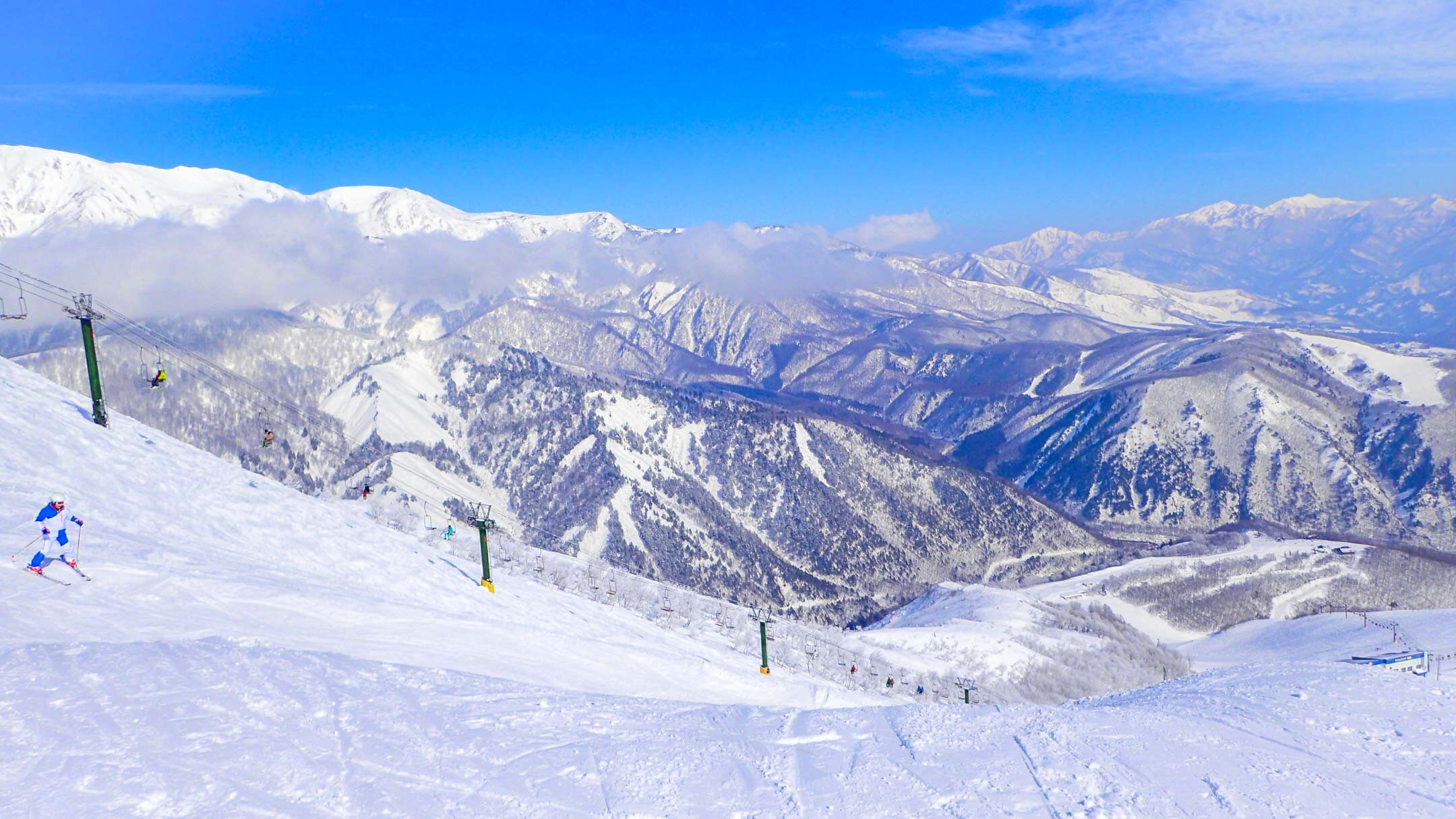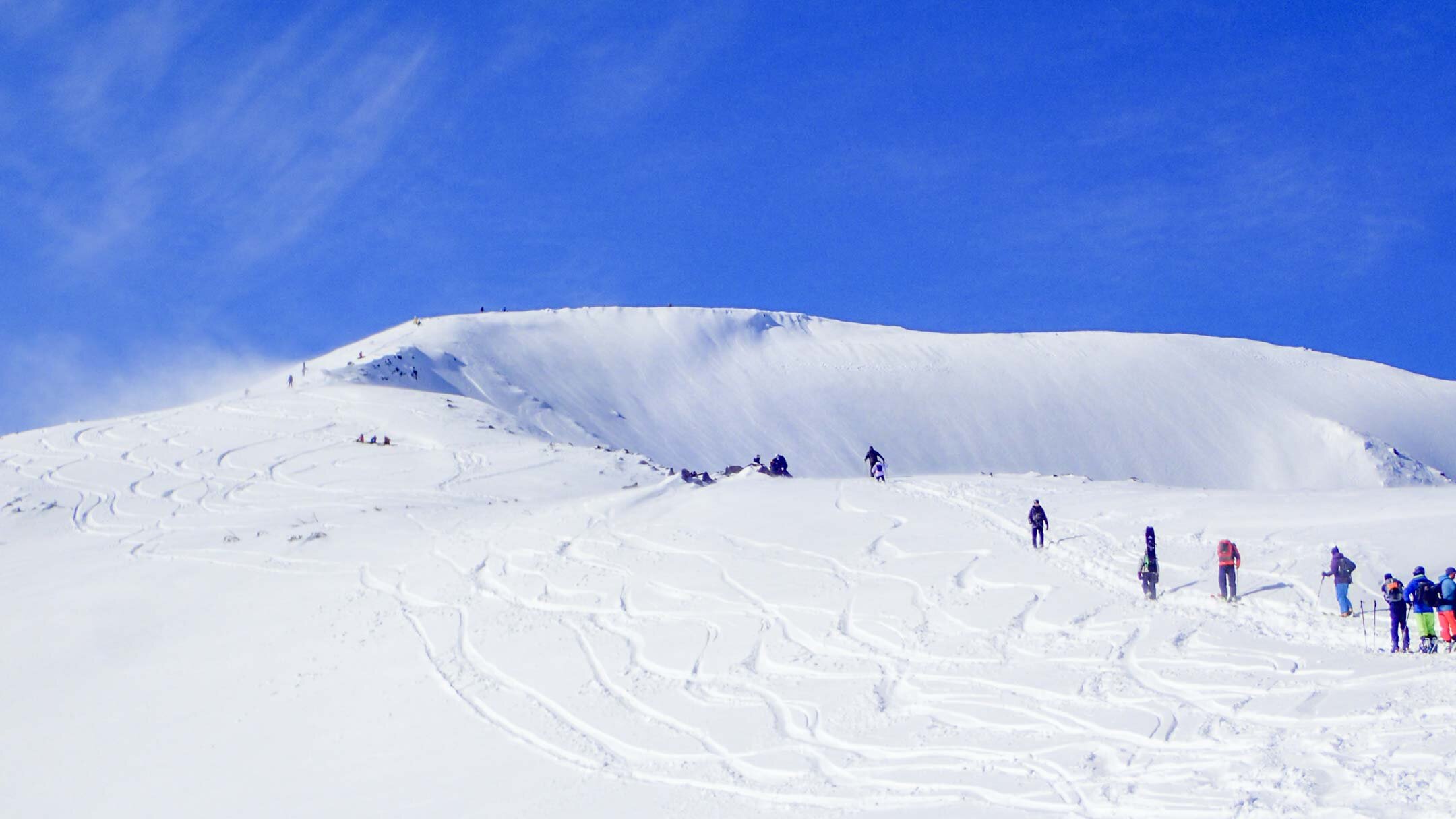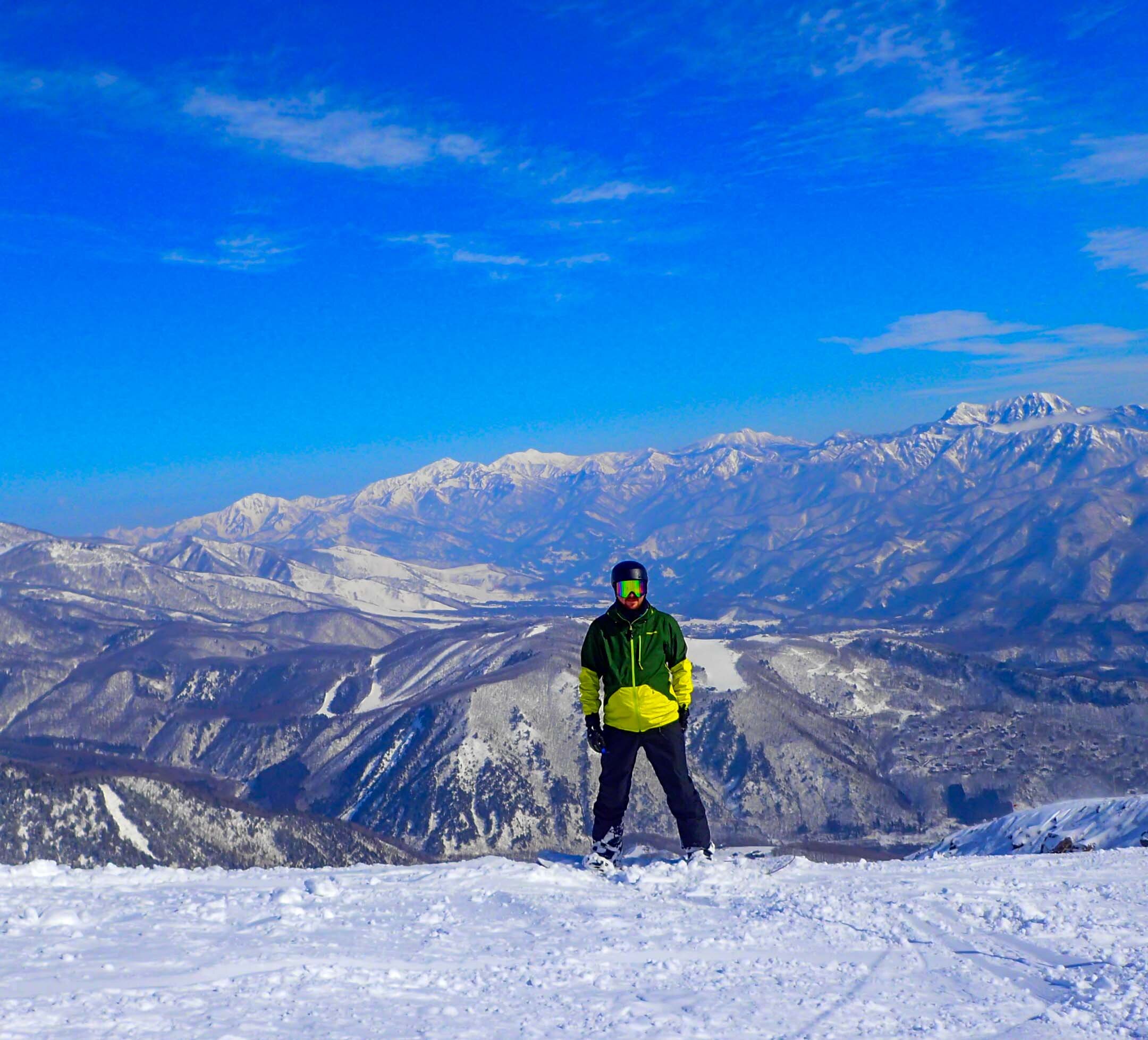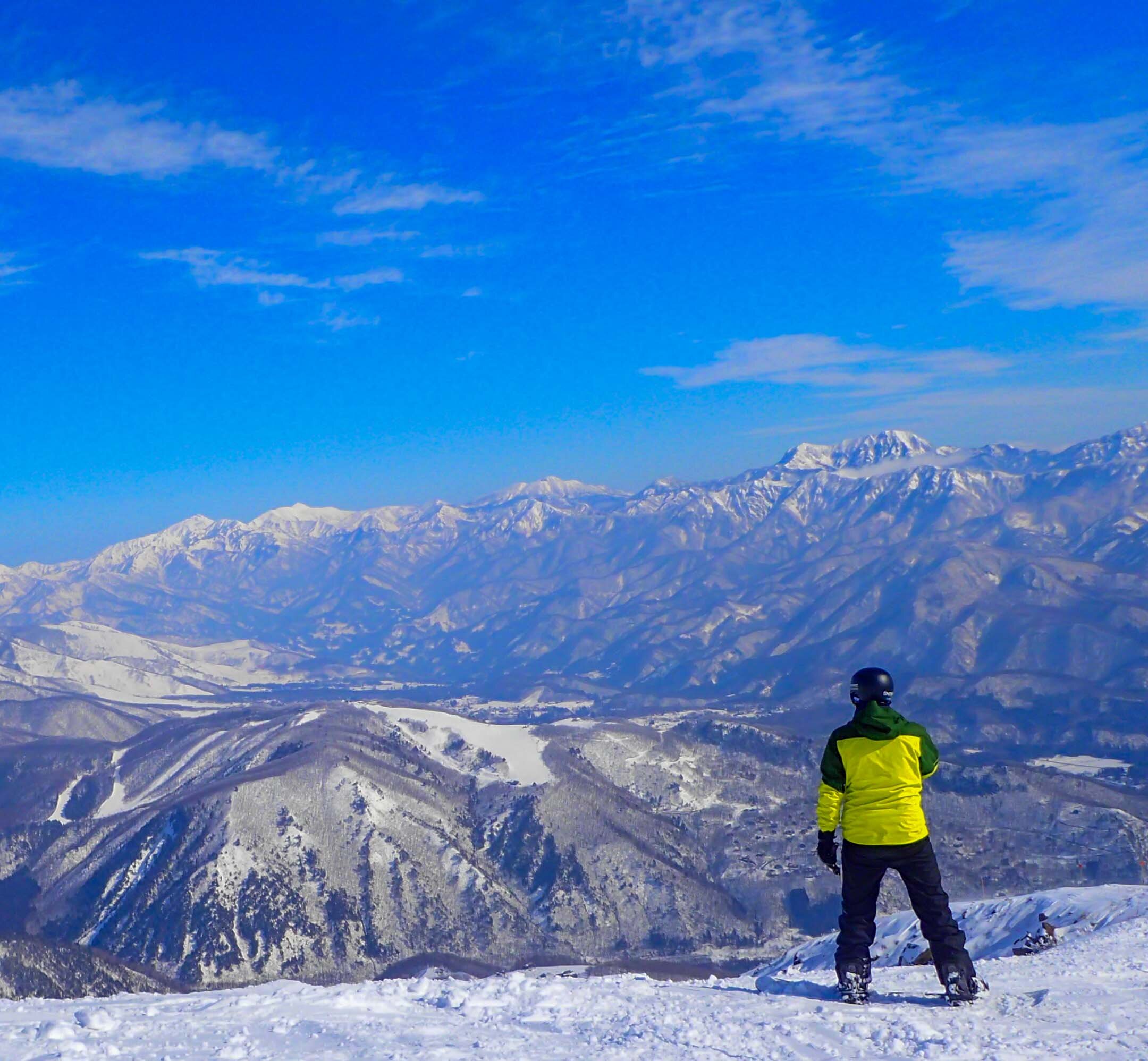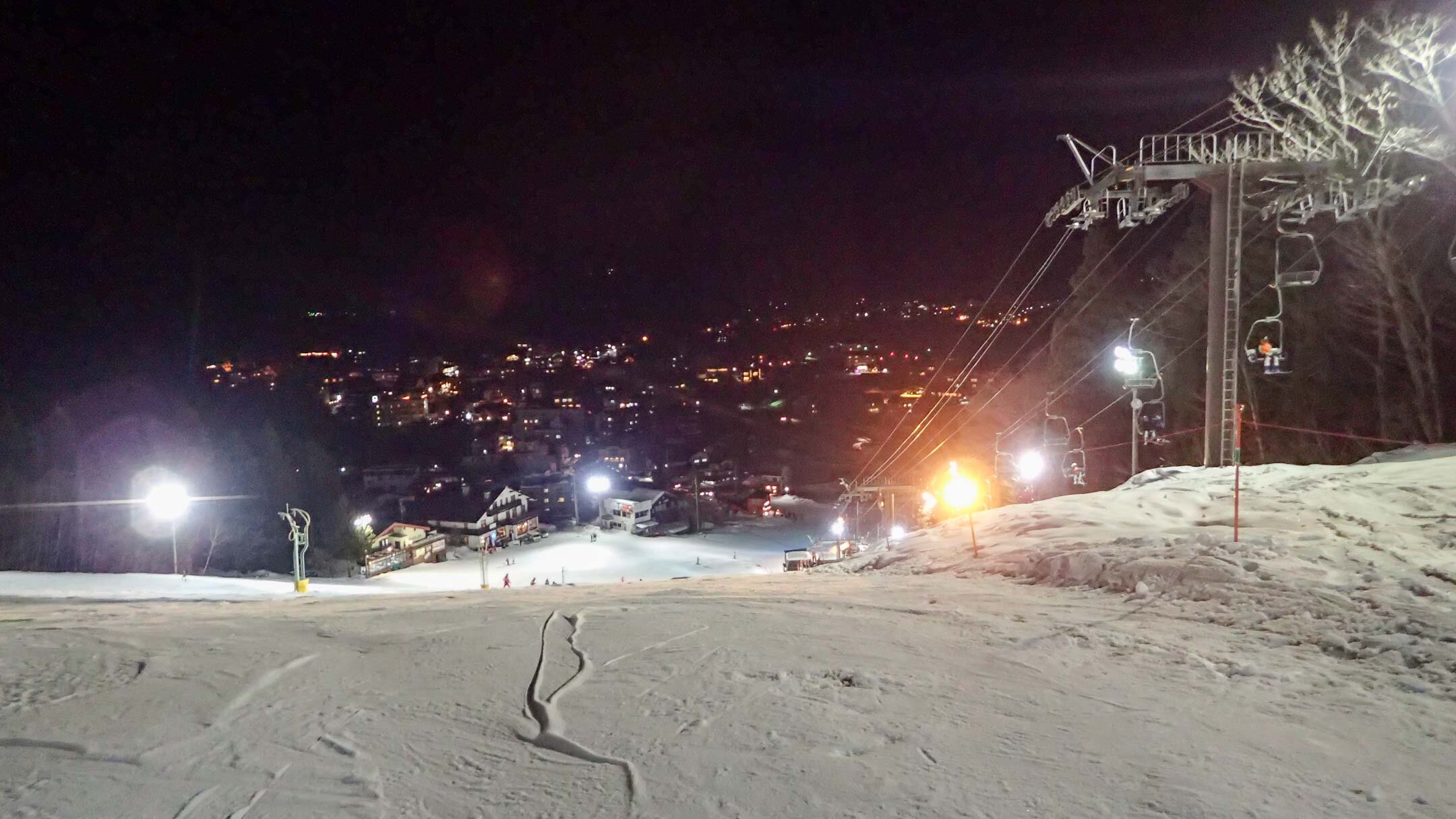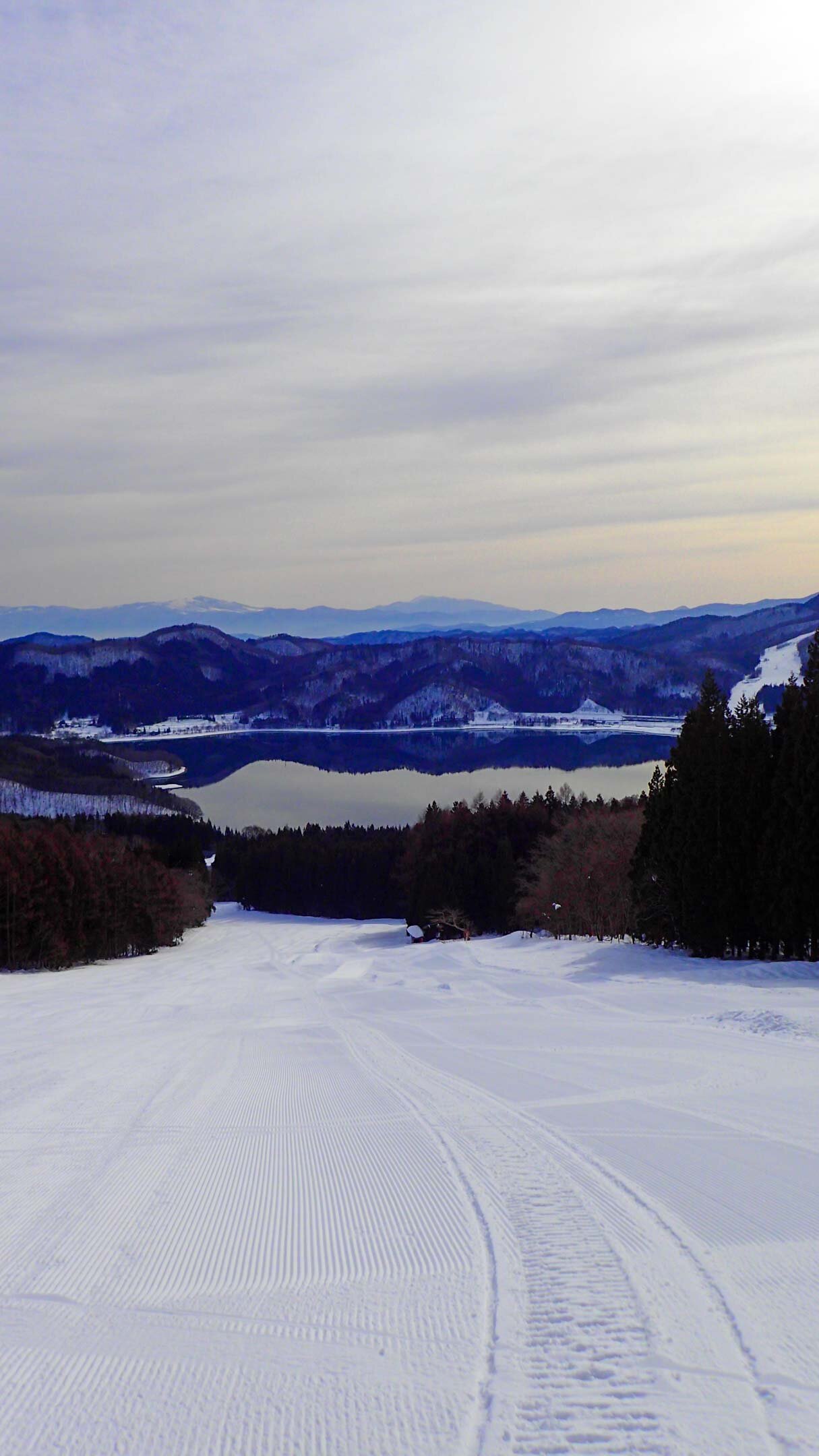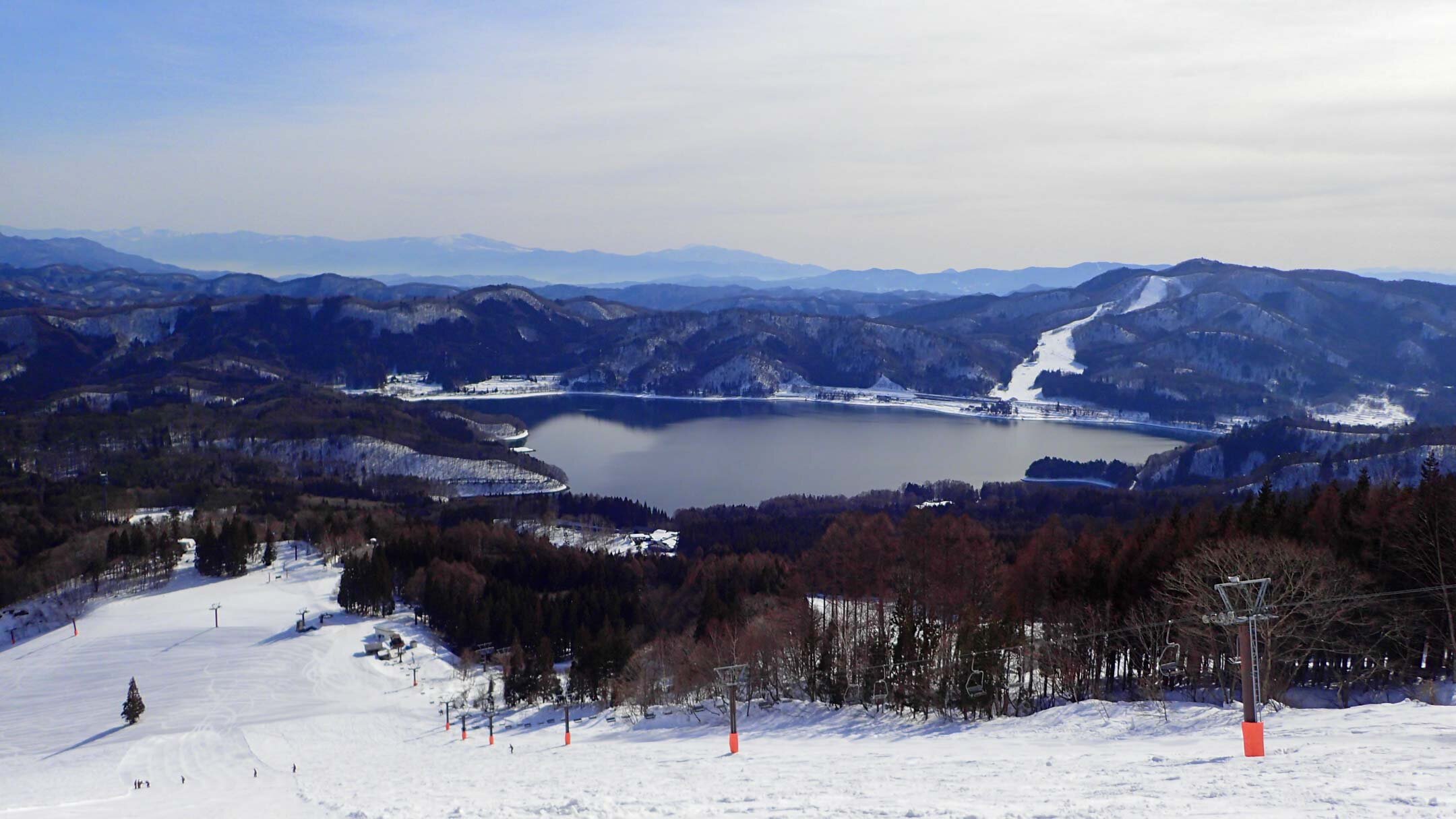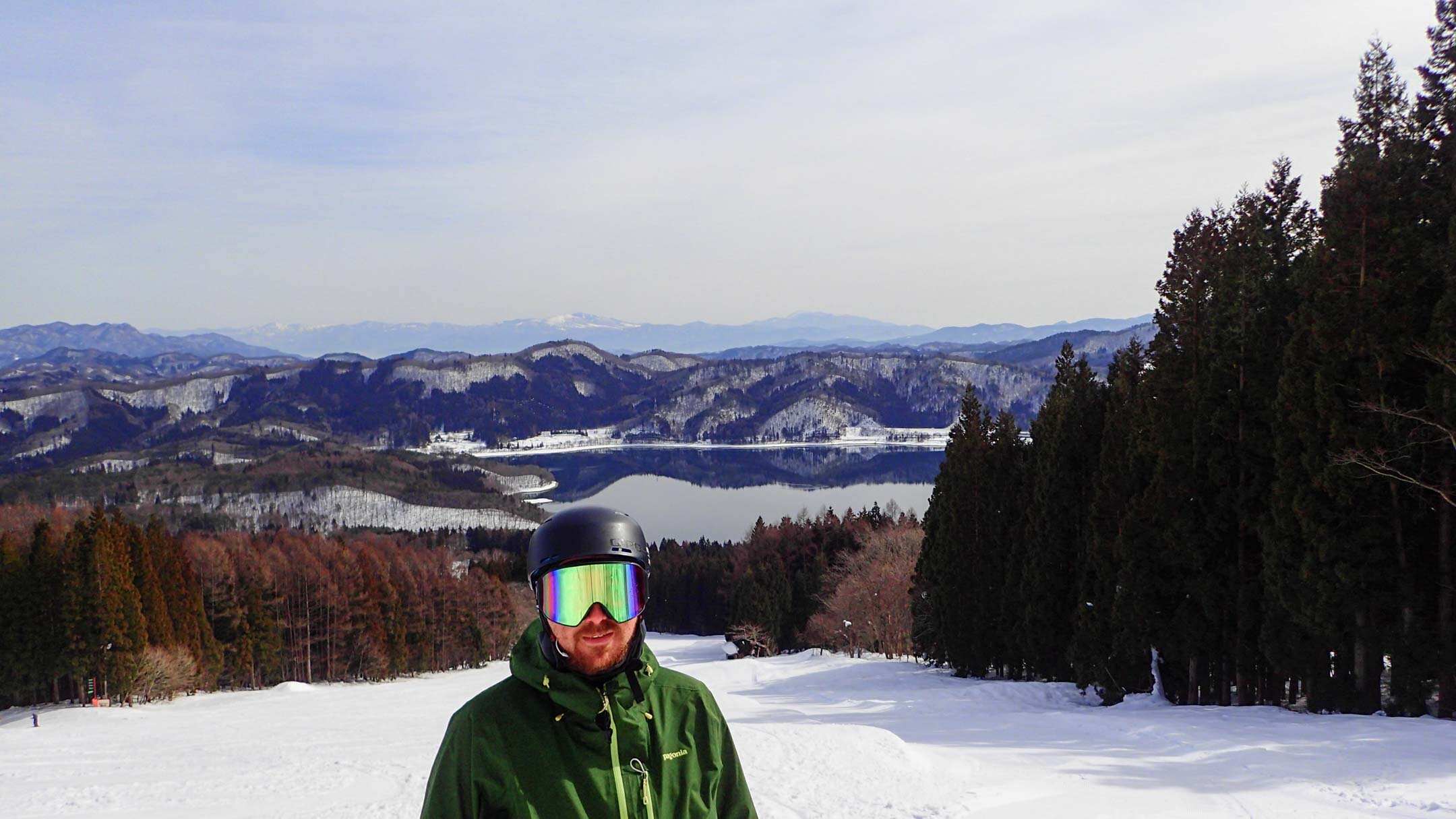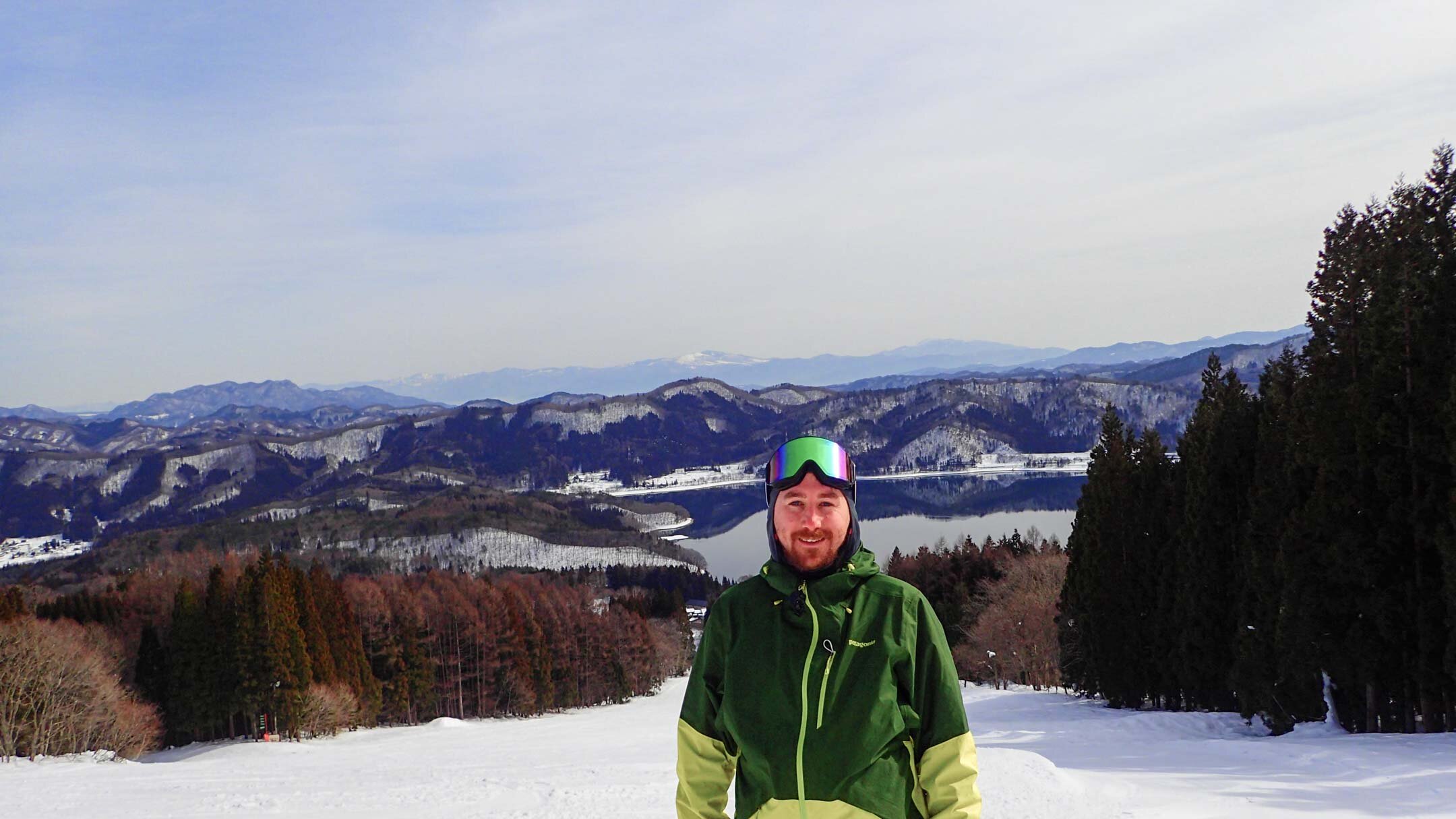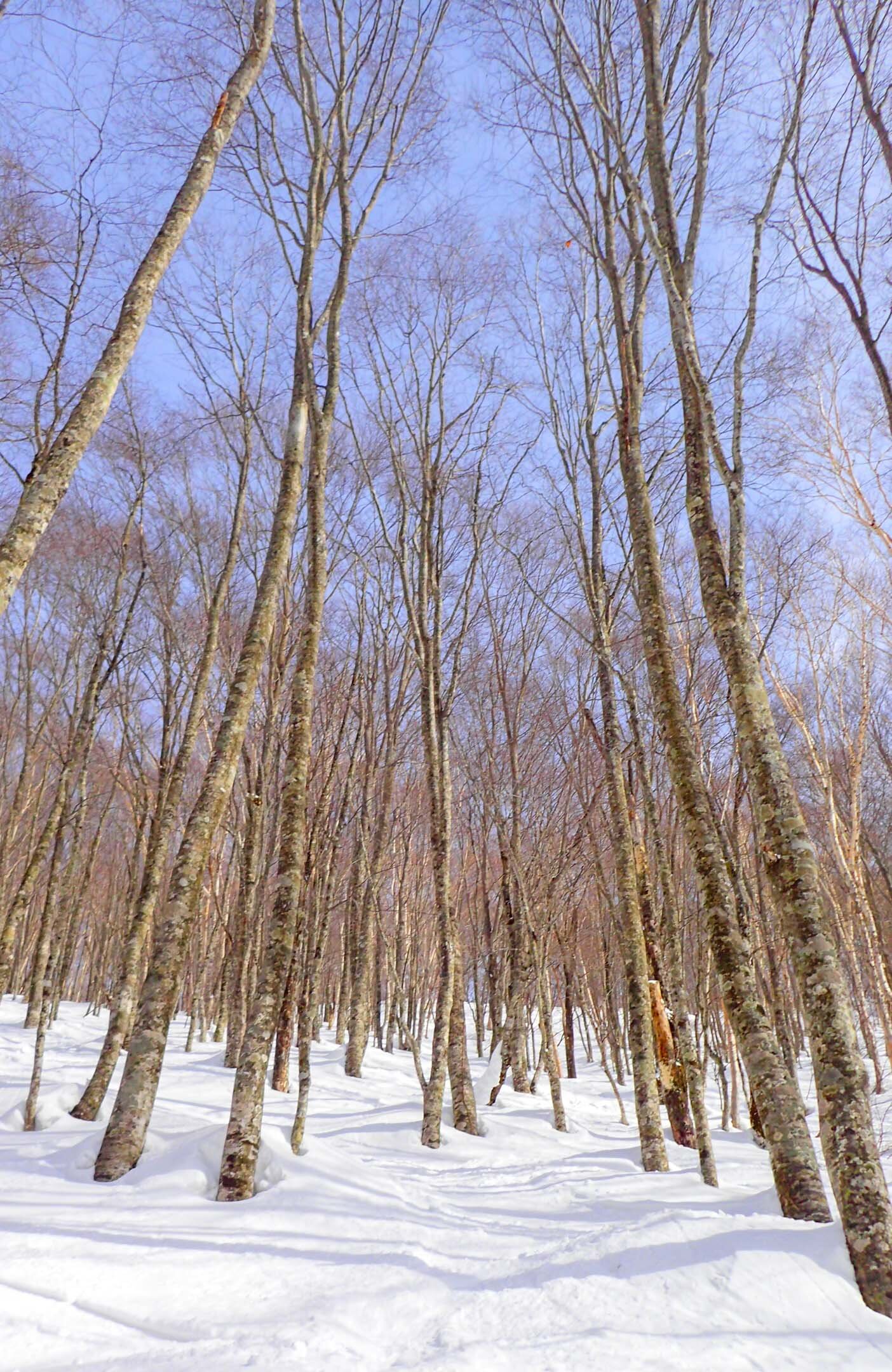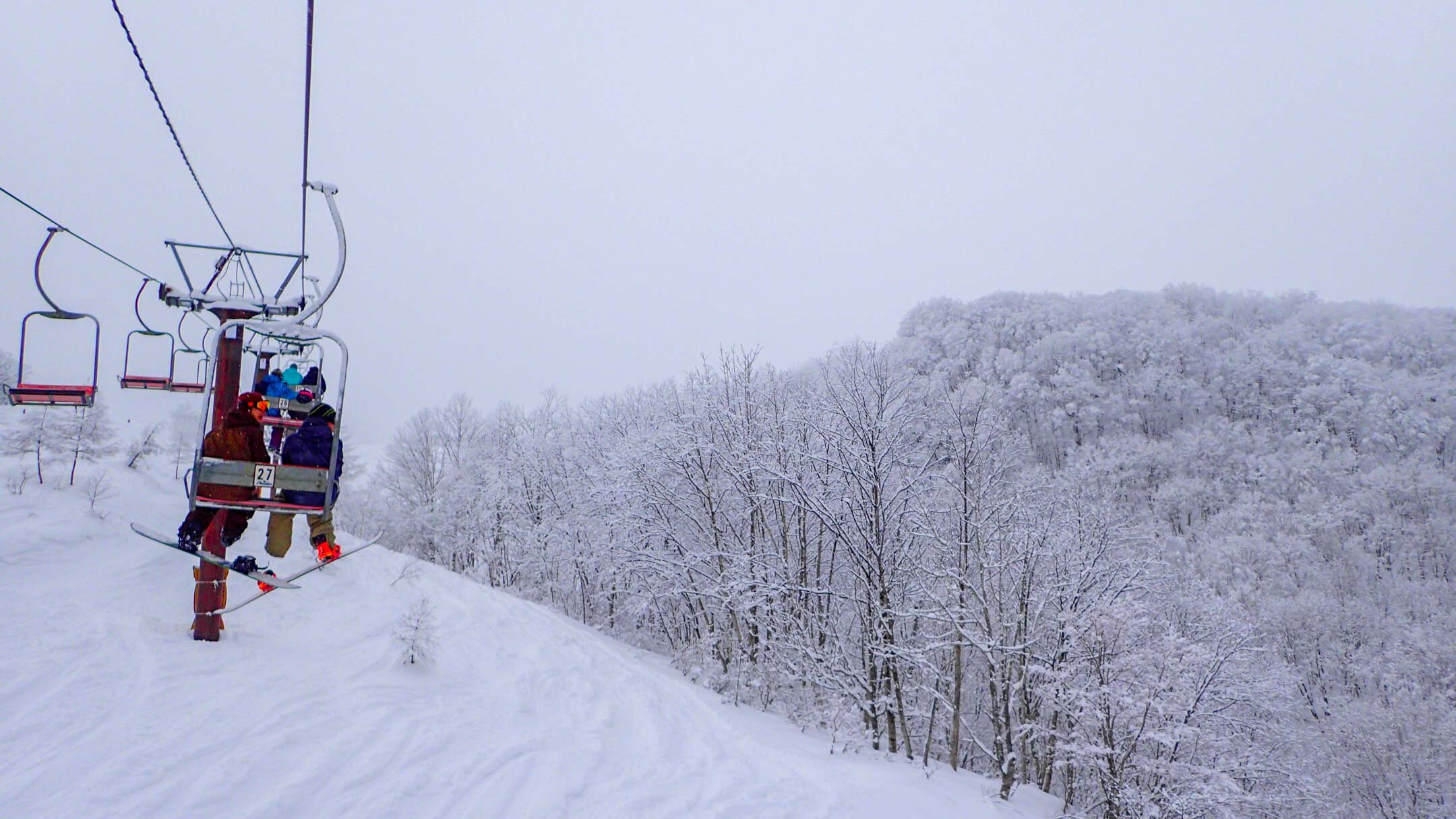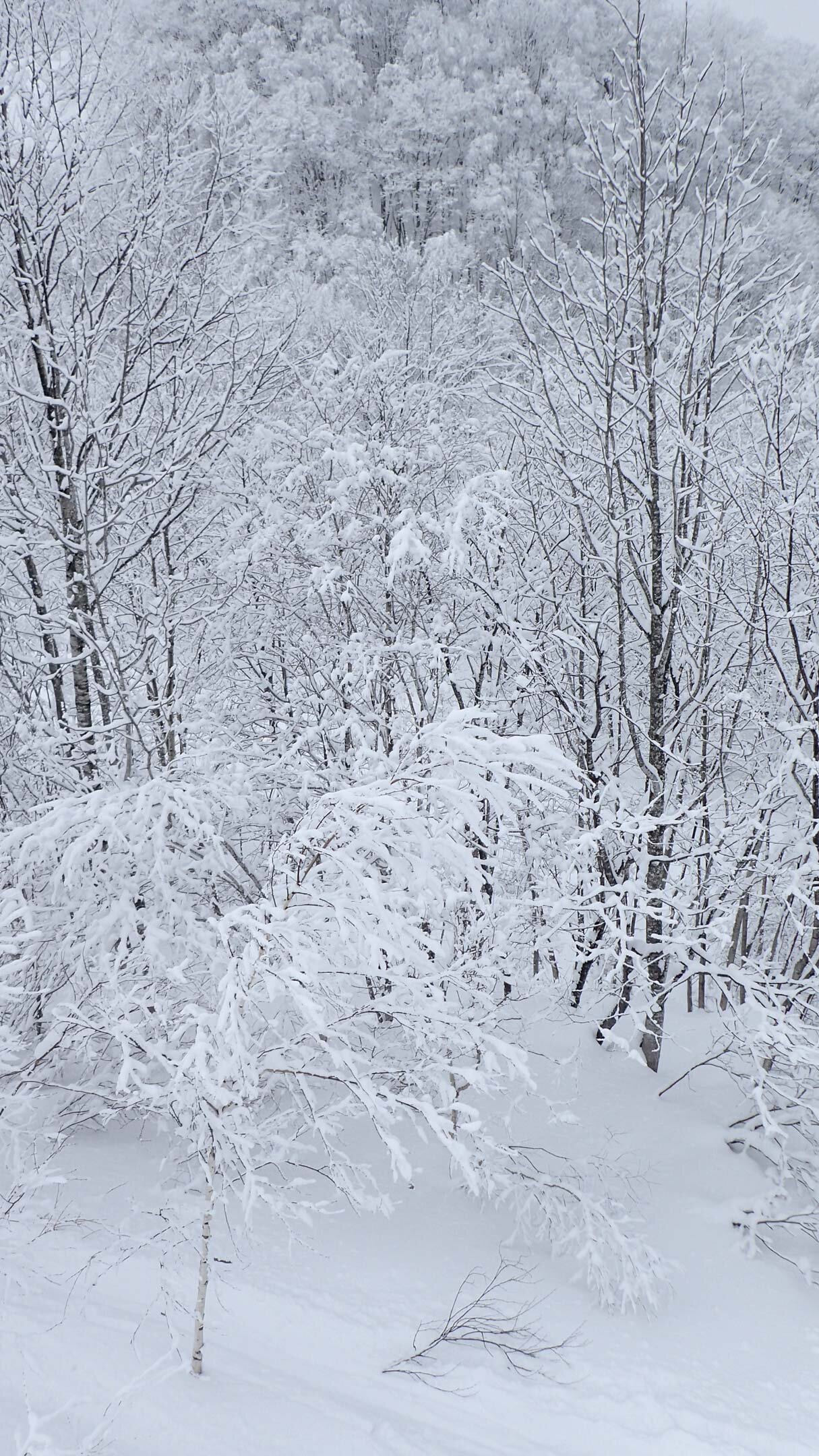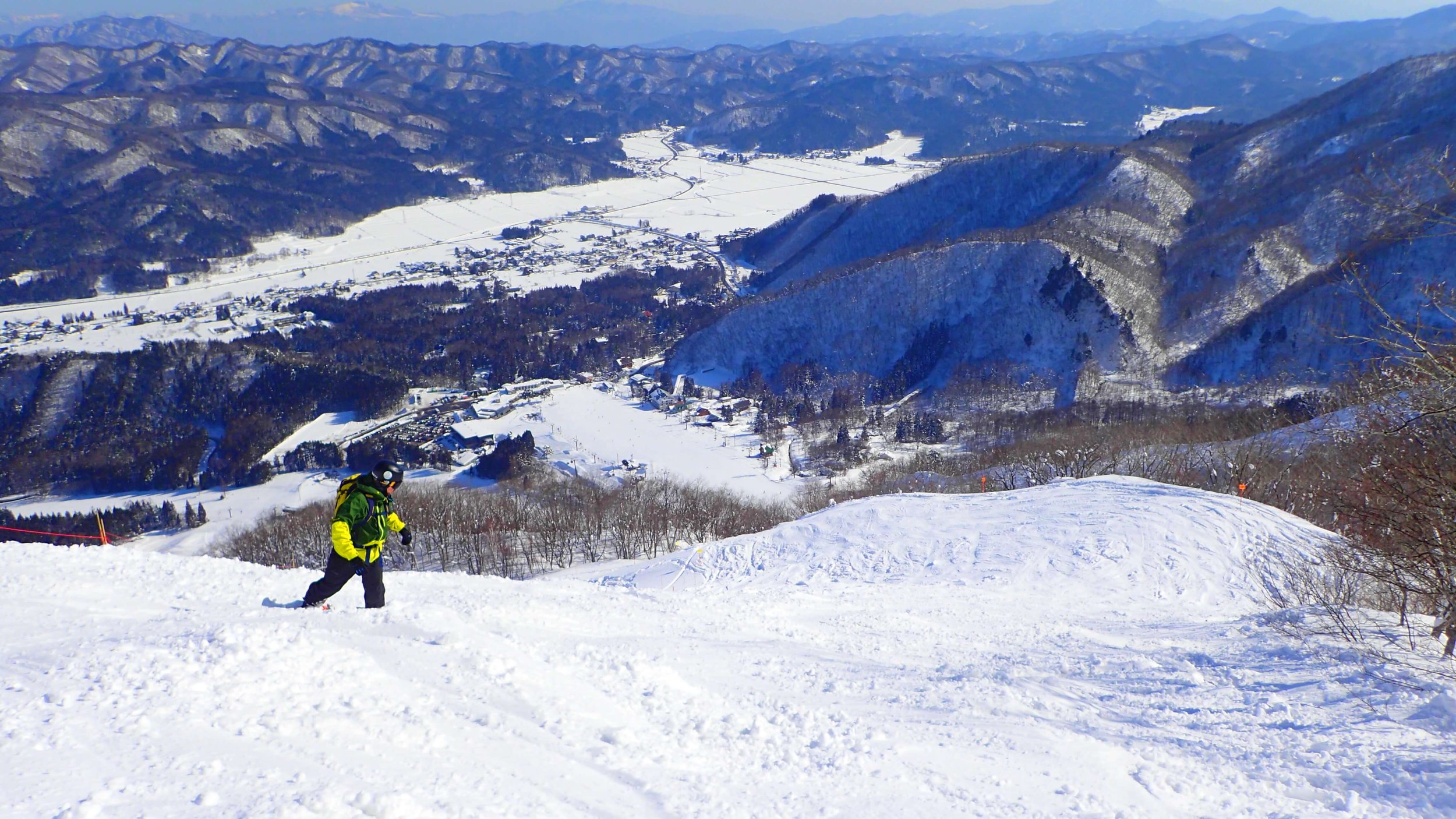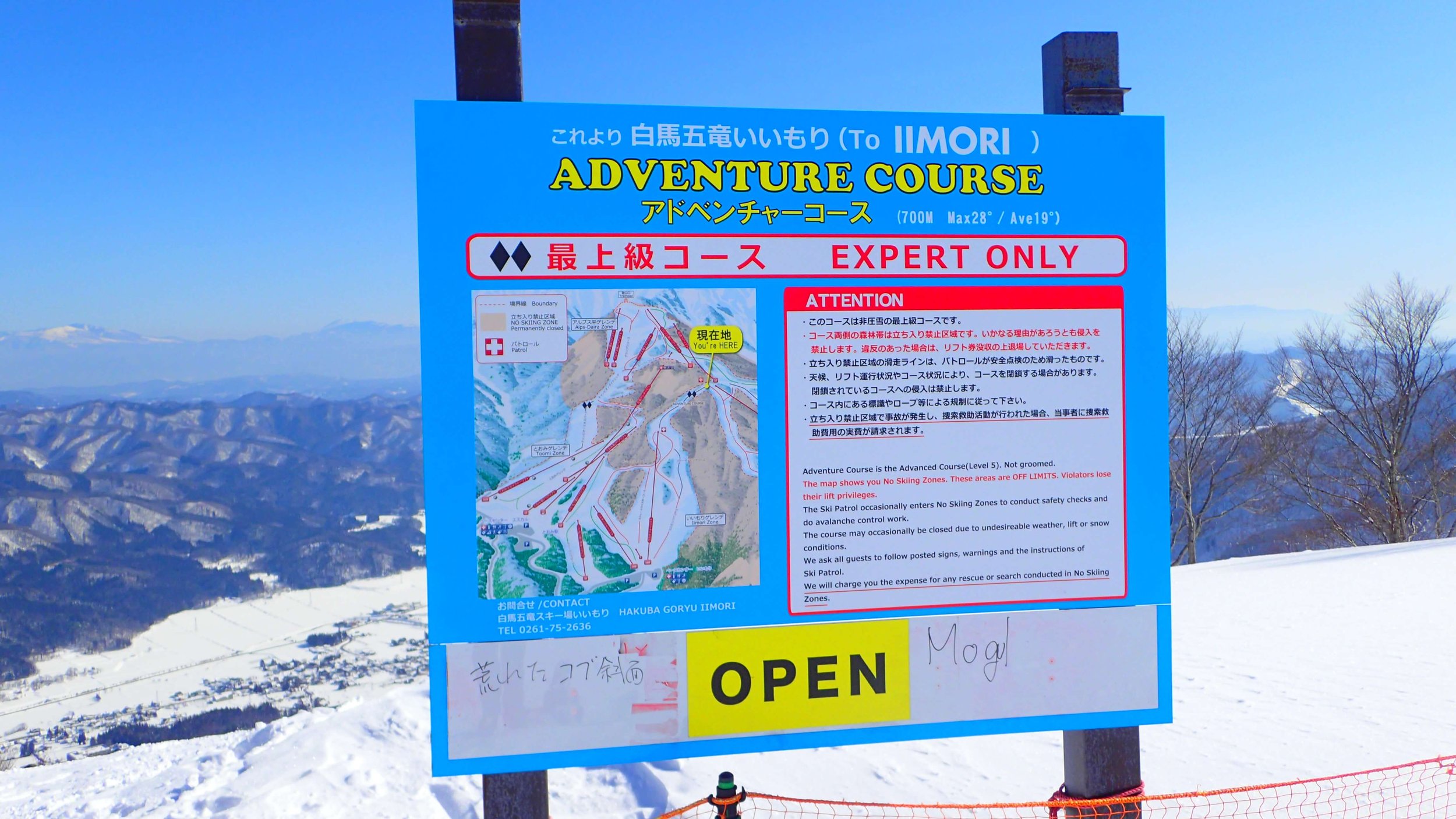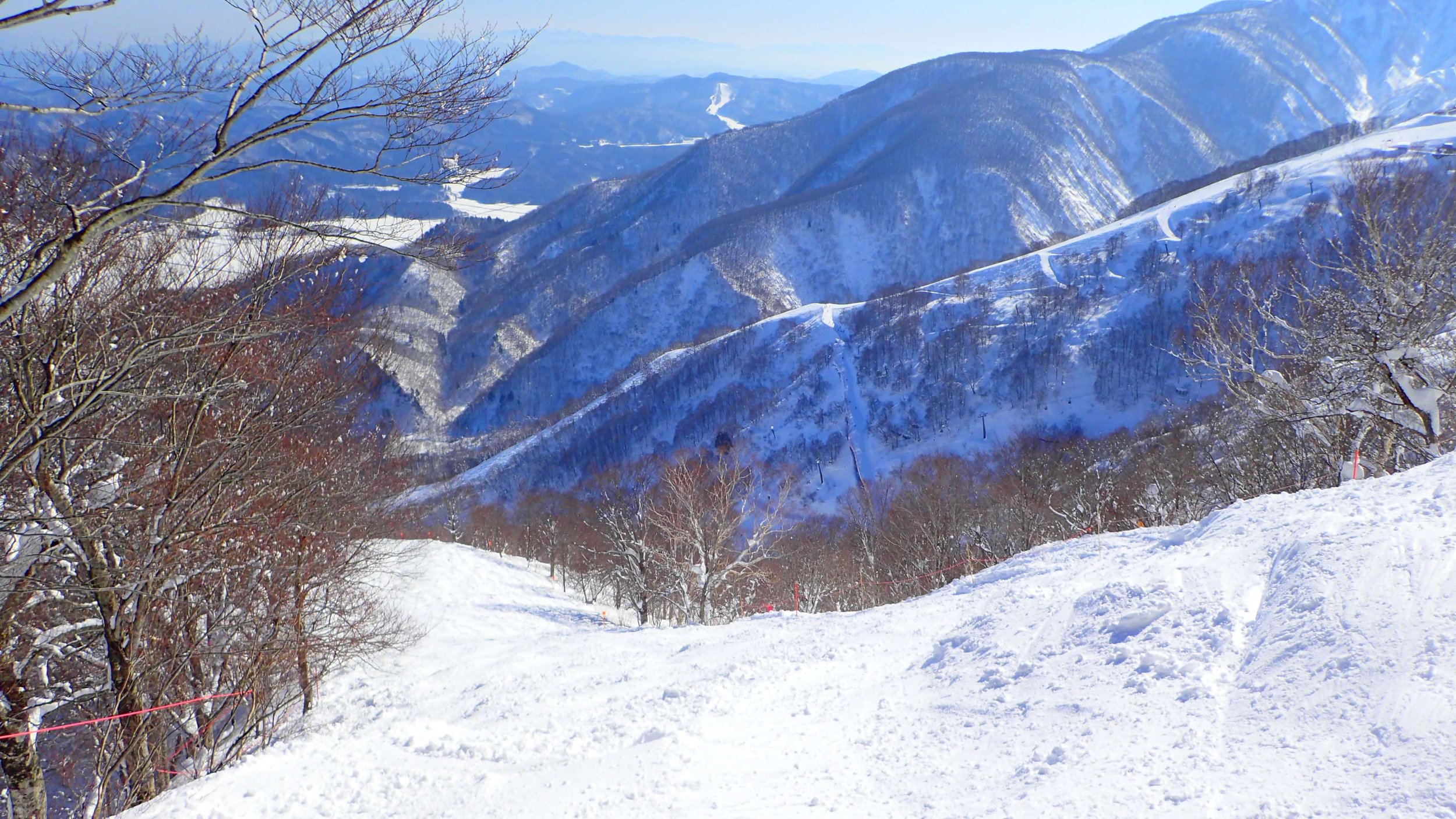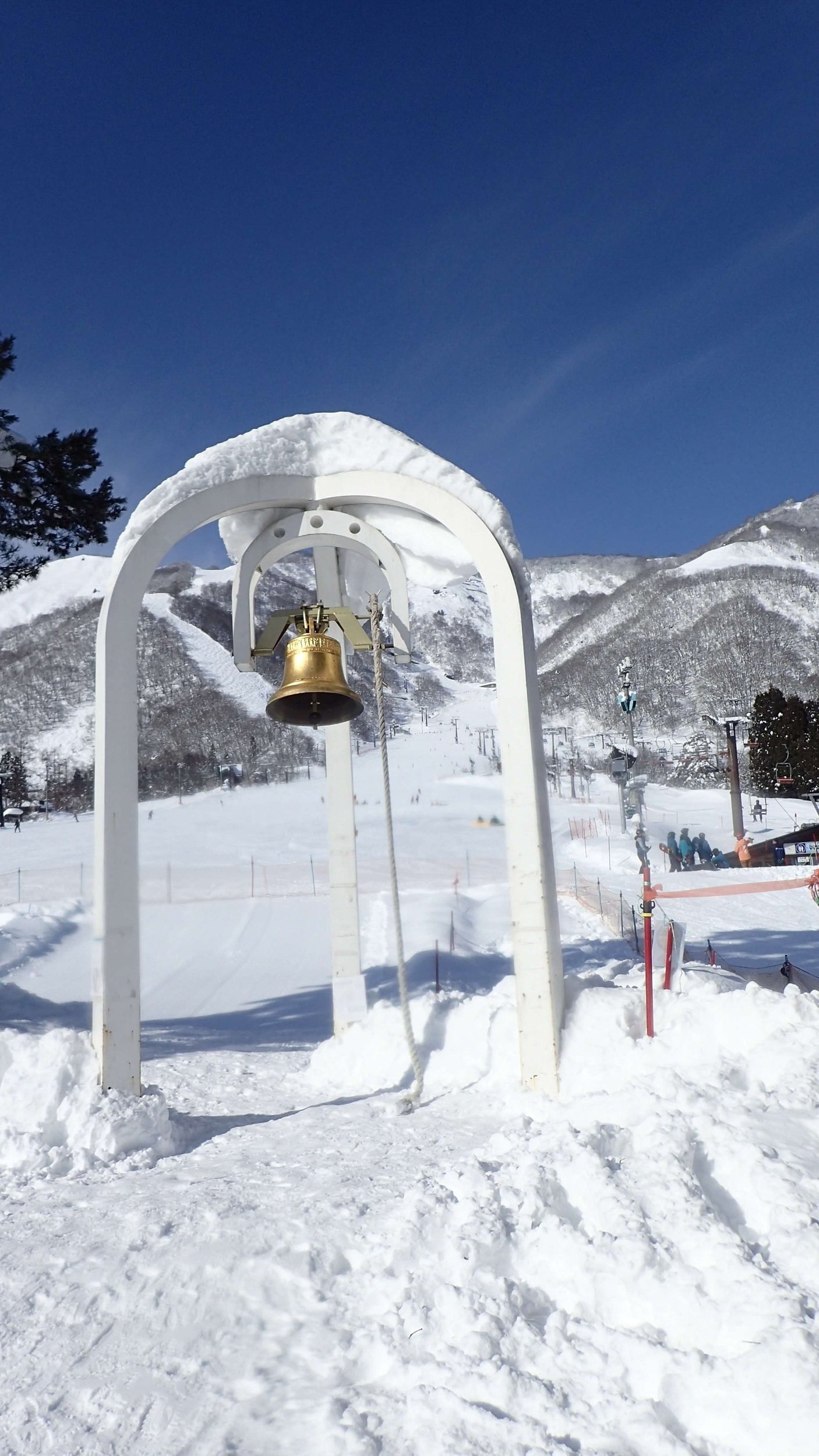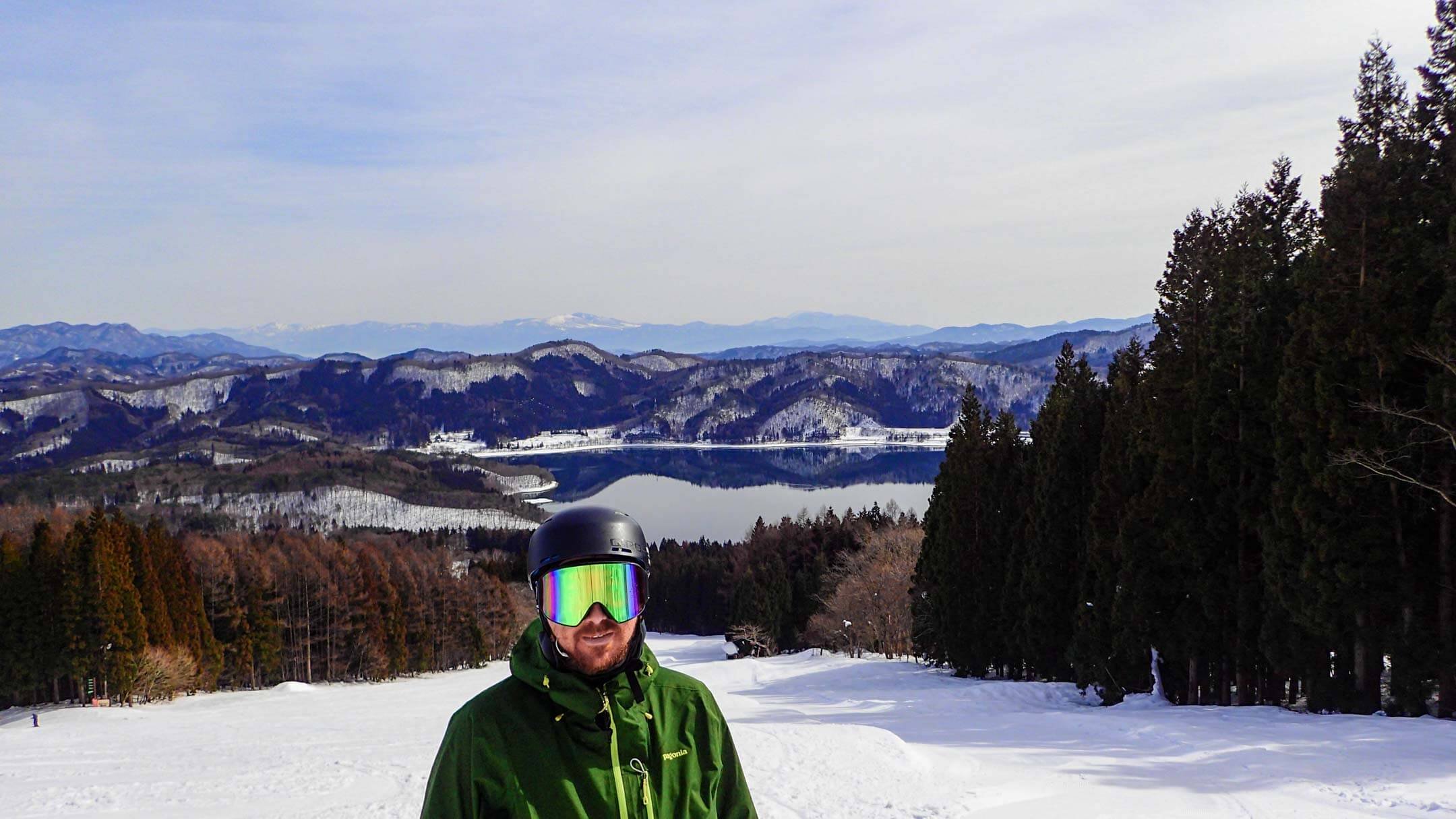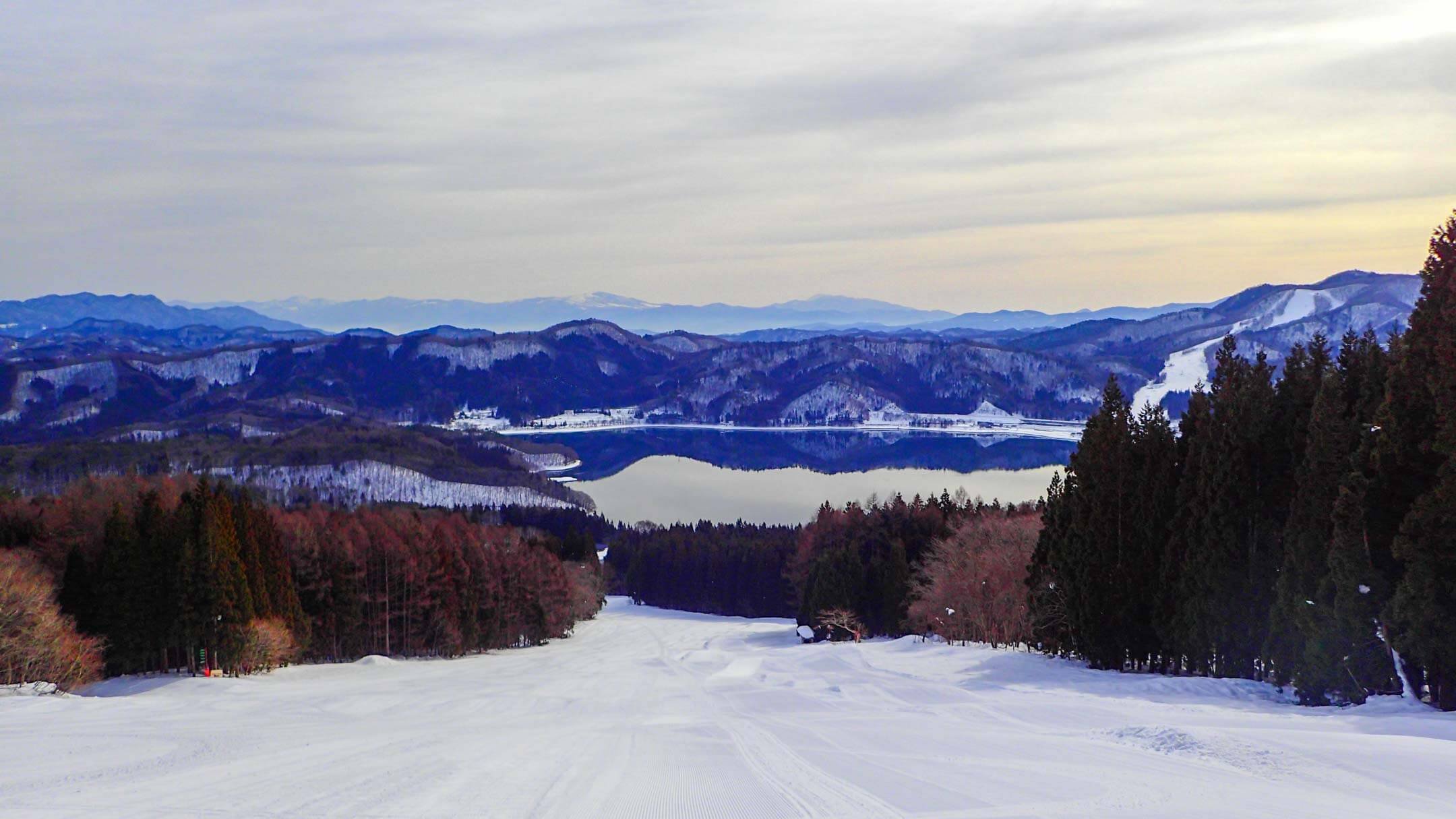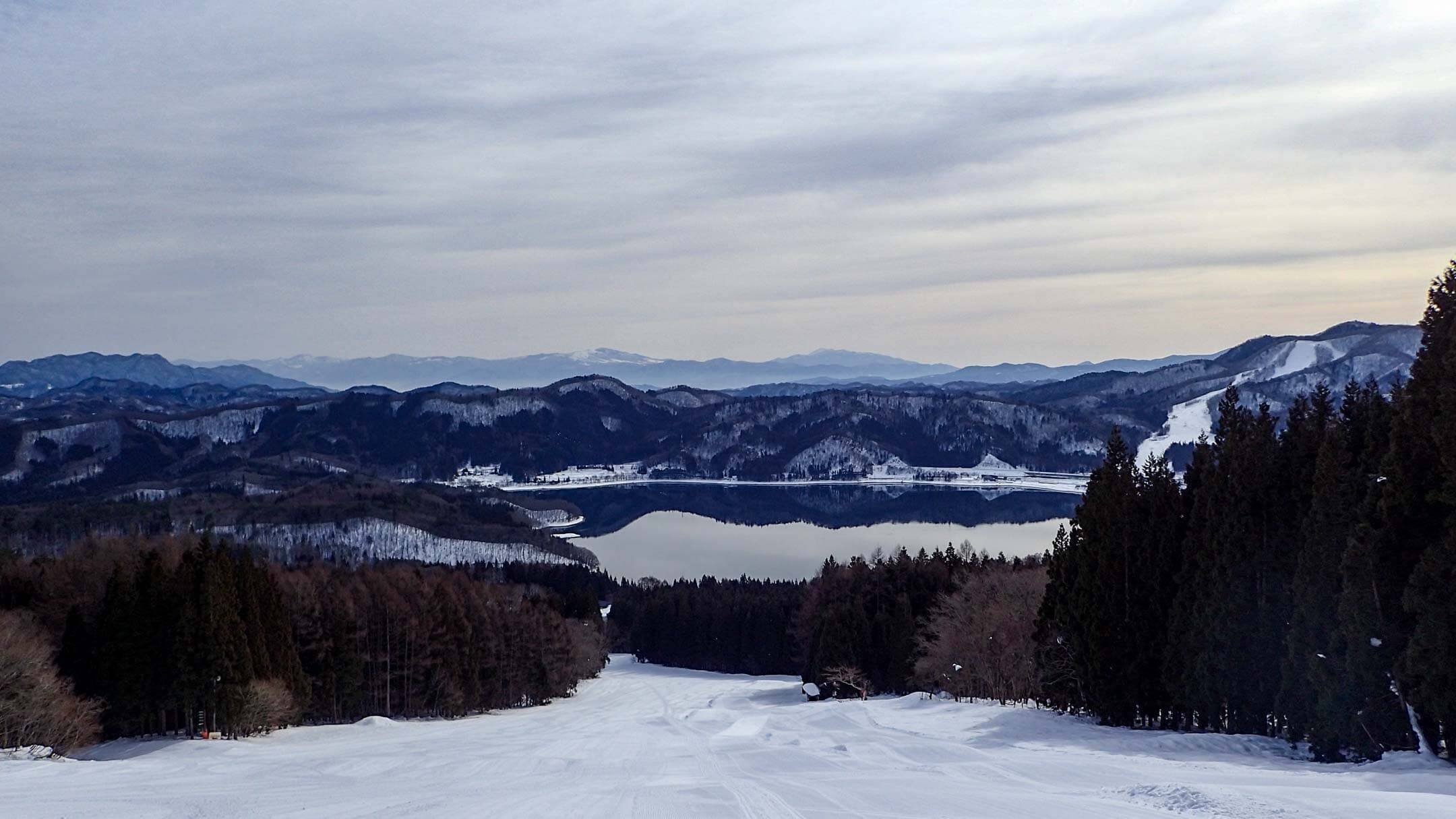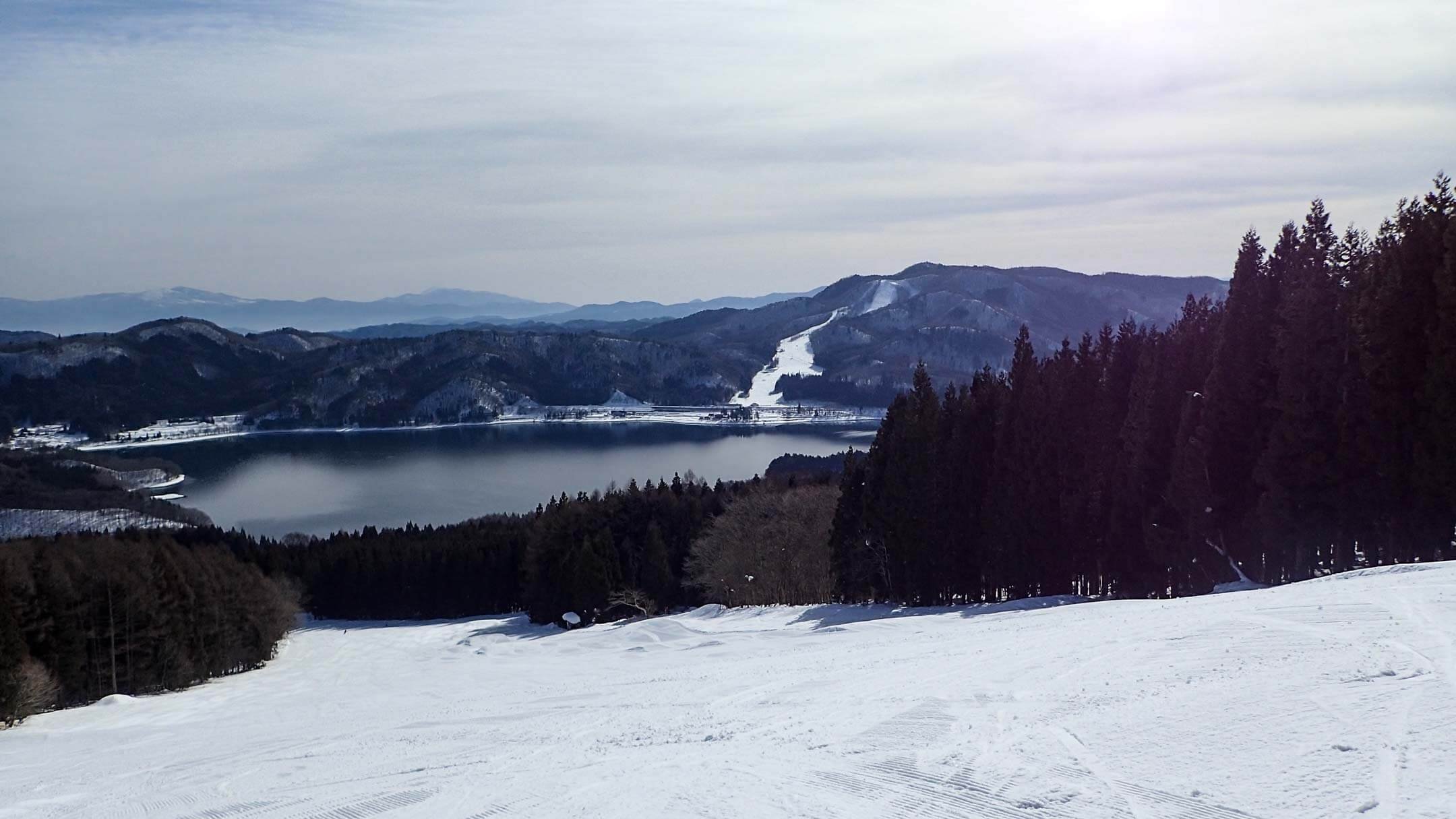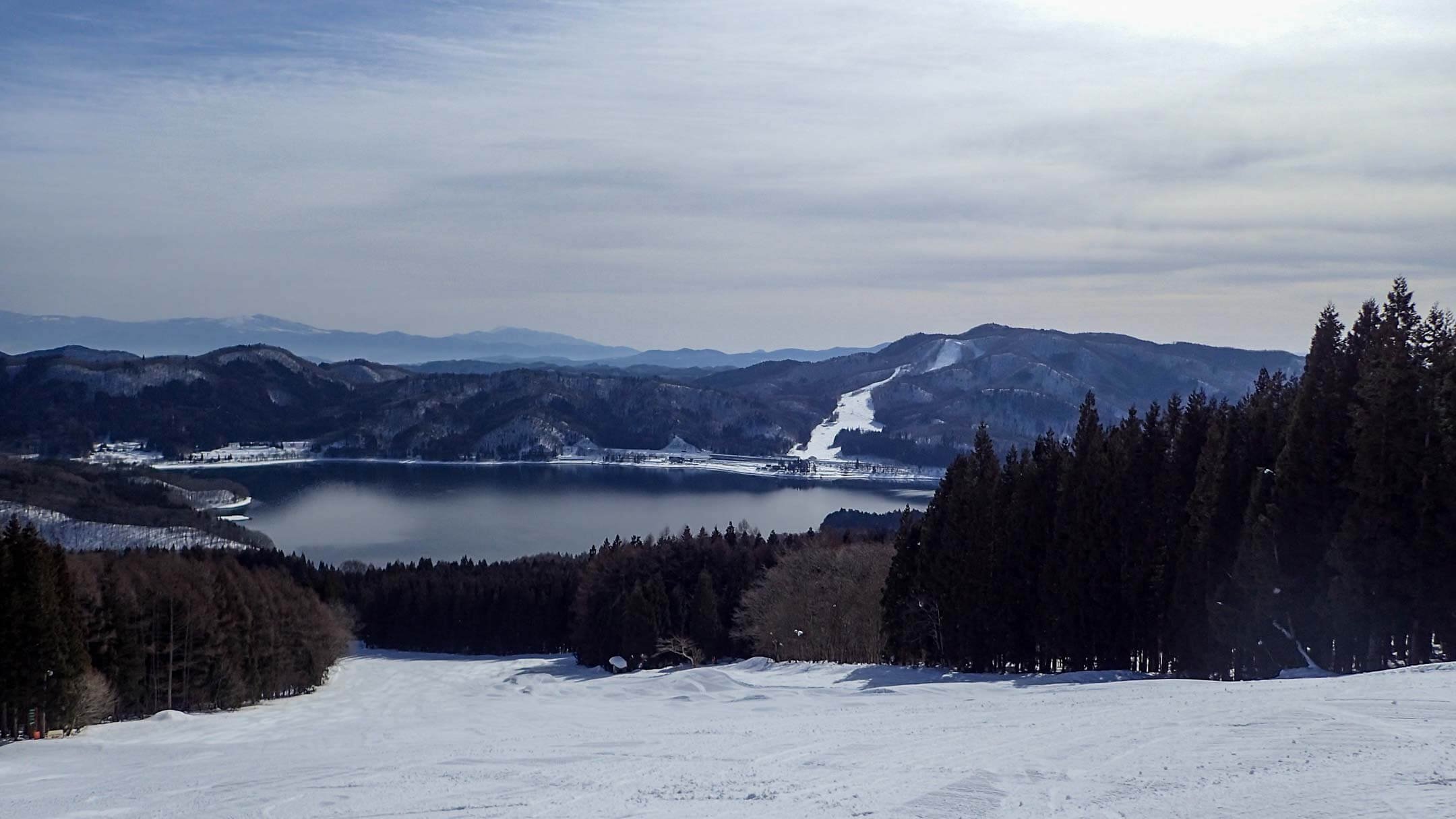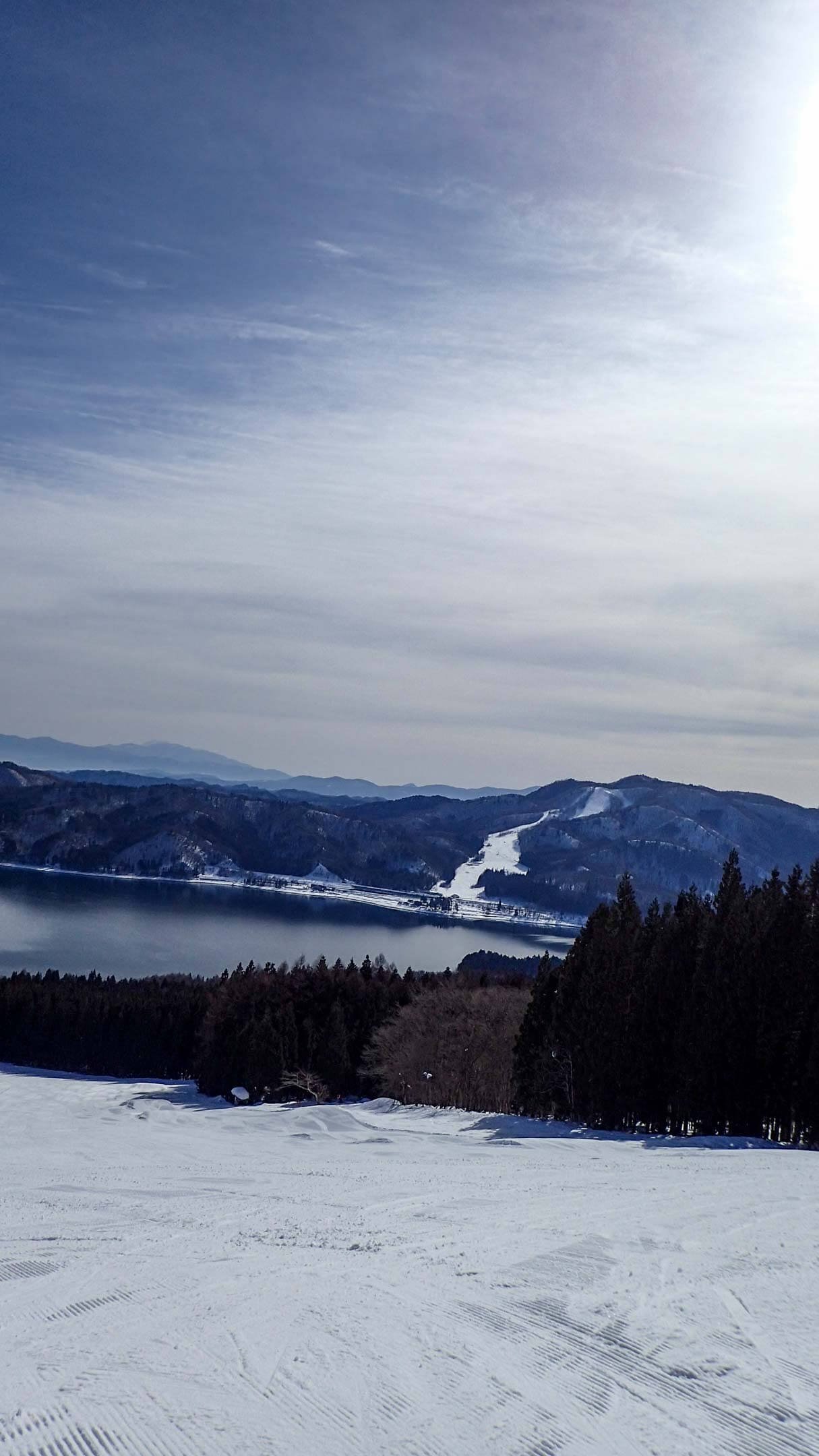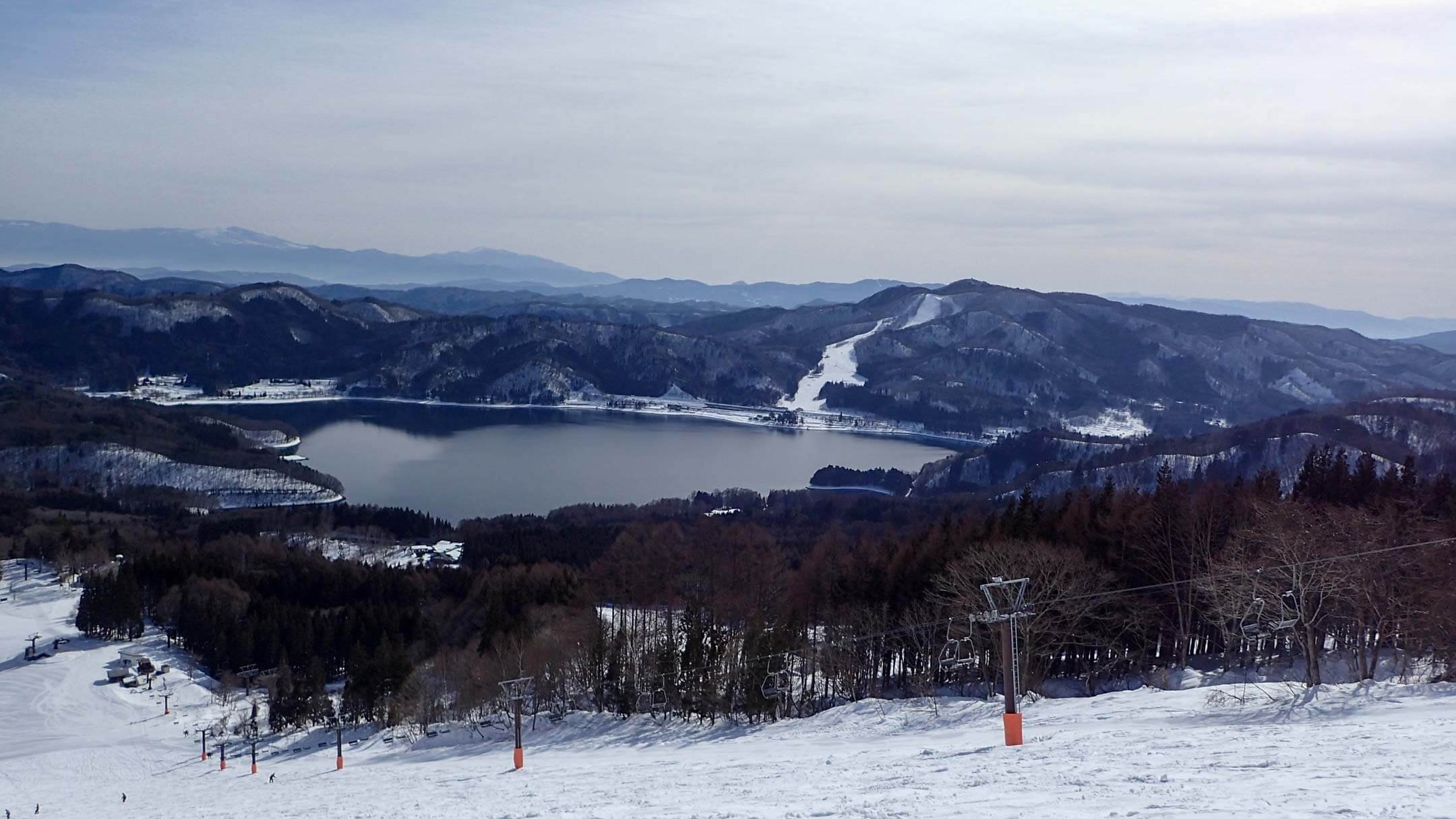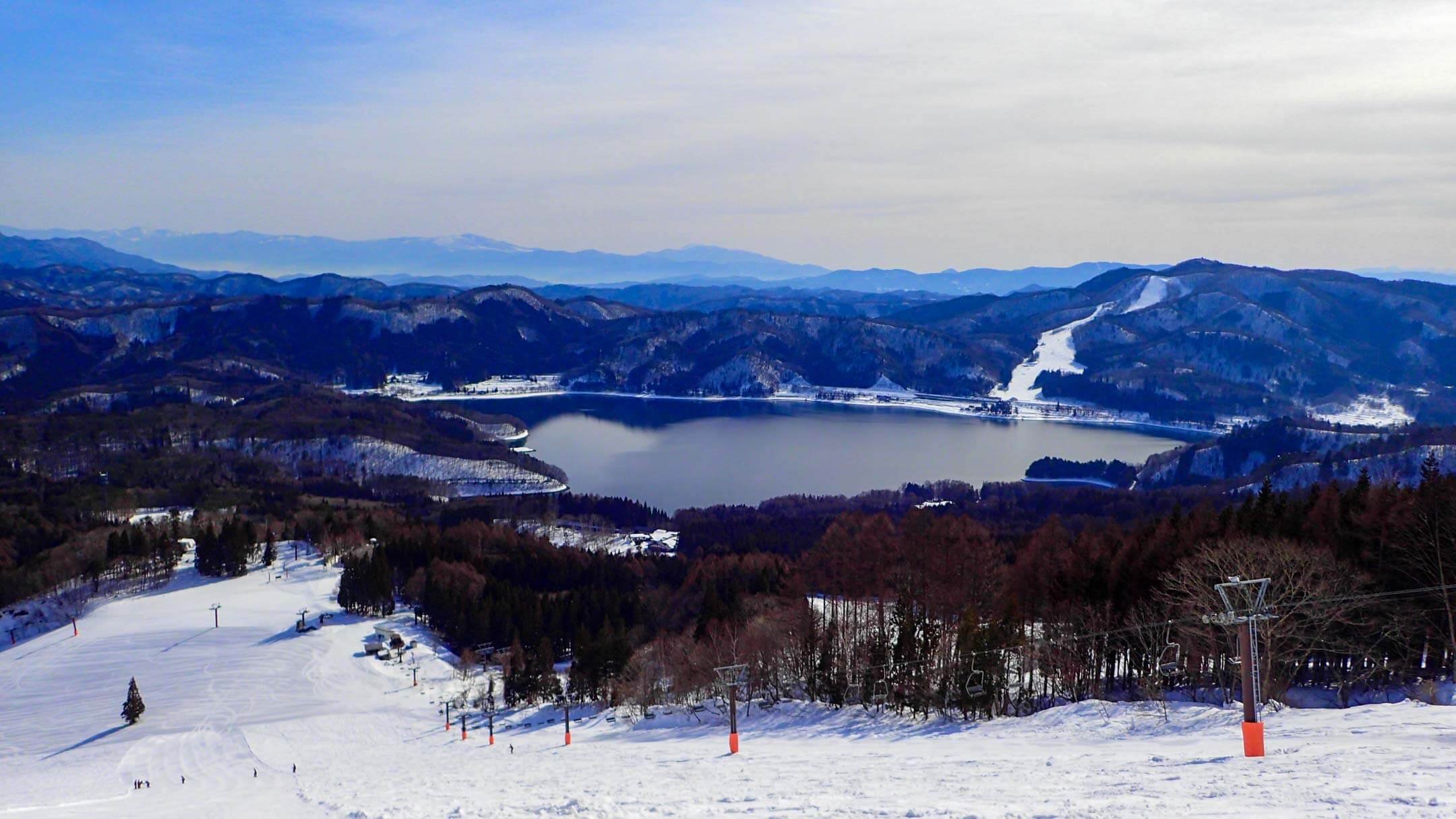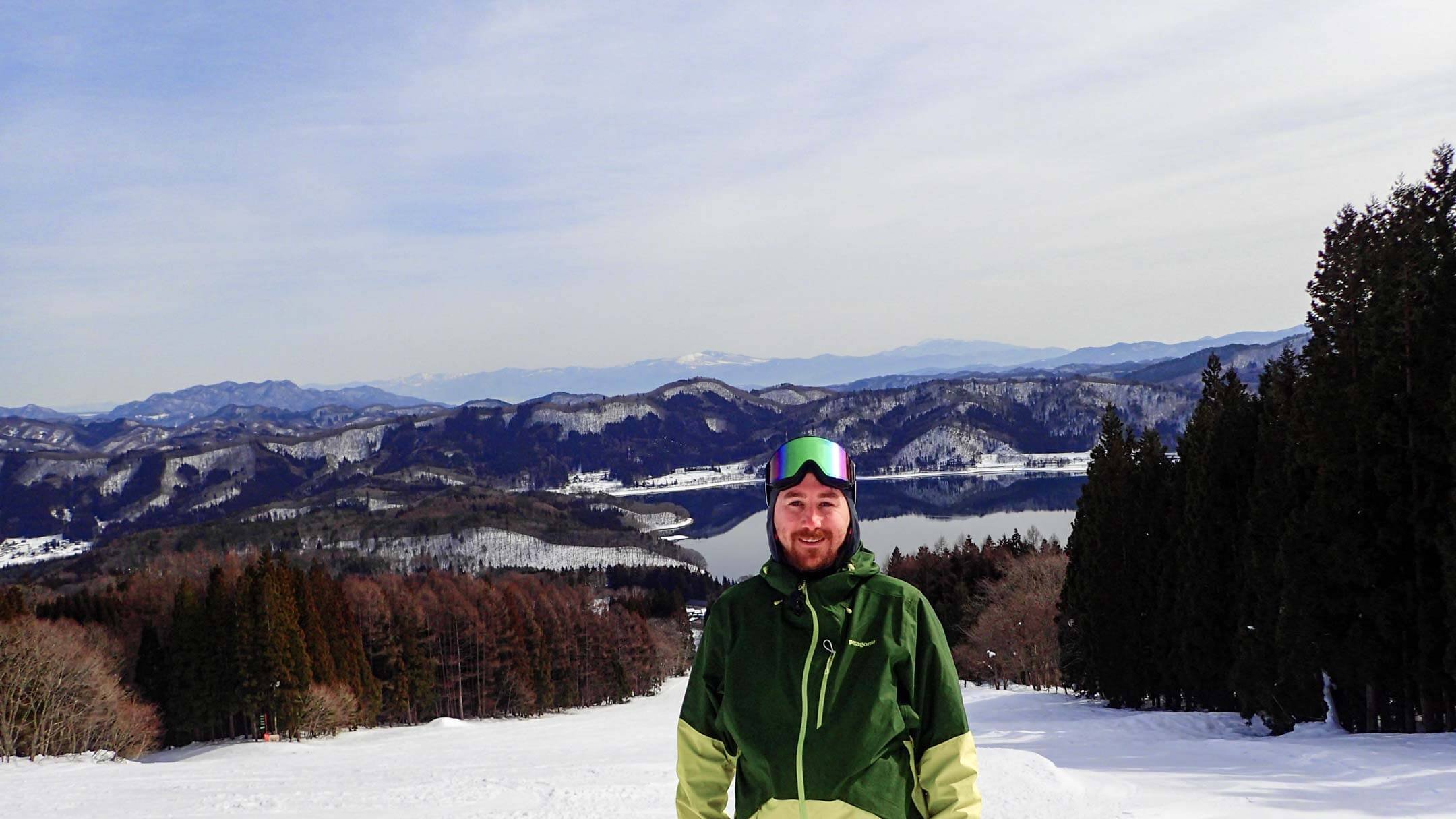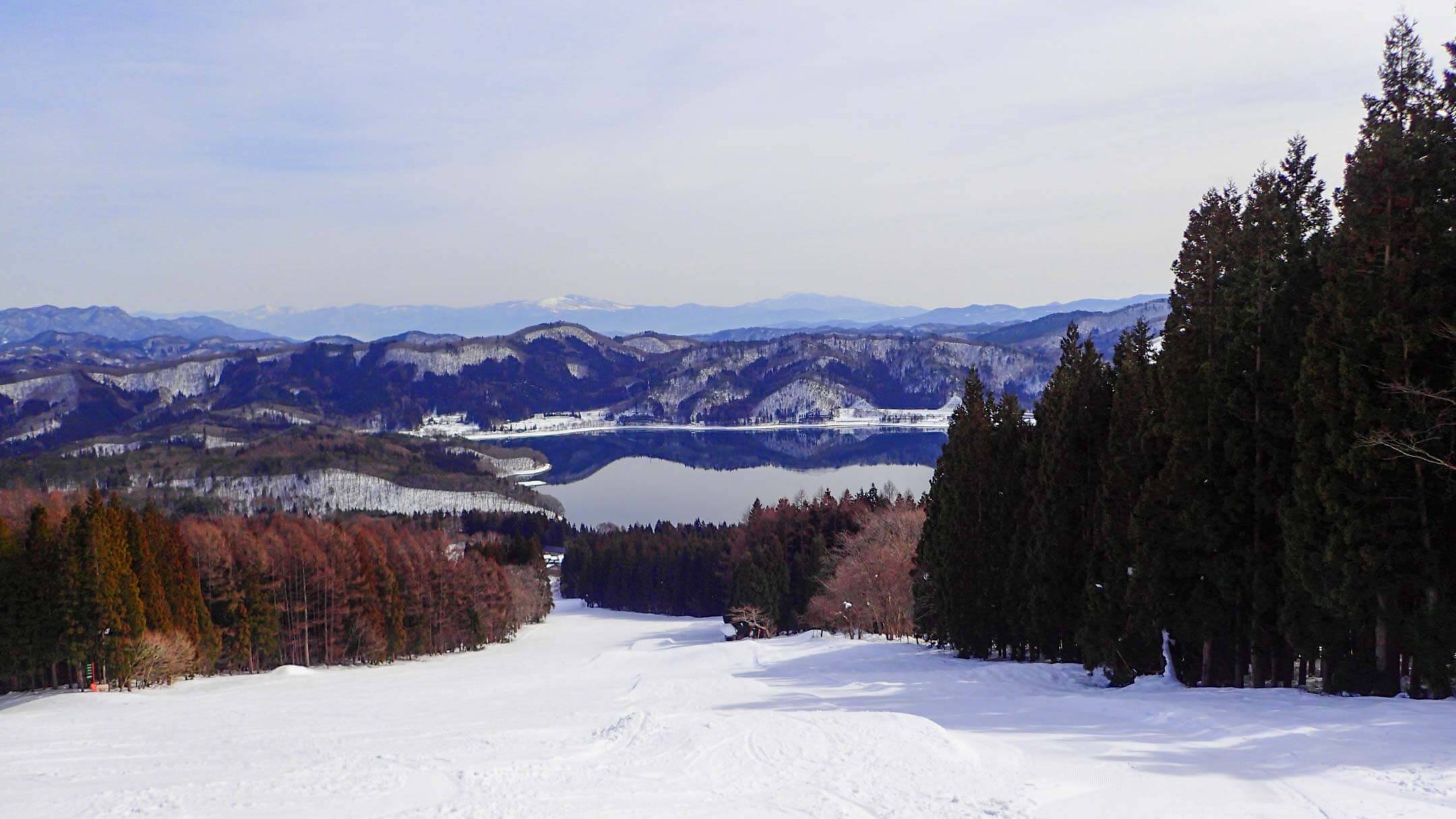Hakuba Cortina Ski Resort Guide
Hakuba Cortina is by far the best resort in the Hakuba Valley for those in search of steep and deep turns on a Japanese powder day. A combination of factors makes Hakuba Cortina ski resort the ultimate destination for those deep days, starting with the pitch of the trees. Unlike other Japanese resorts, Cortina opens its glades without restriction and this makes for an incredible experience. The steep pitch combined with the widely spaced trees makes this the pinnacle of a trip to Hakuba. Sadly, talk of the quality of Cortina’s tree riding is widespread meaning it is no longer a secret. This can result in some pretty big lift cues after a snowfall.
HAKUBA CORTINA FIRST IMPRESSIONS
Arriving at Cortina you at met by the sight of the iconic Green Park Hotel. A Tudor style hotel offering ski in ski out accommodation at Cortina. Most of the resorts facilities are inside the hotel, which can be pricey so if like me you are on a budget… bring your own lunch. Walking through the hotel to the slopes you will soon get a sense of excitement and anticipation, everyone is talking about getting in the lift line for the first lift.
Stepping outside the hotel you can be forgiven for thinking Cortina is a bit of nothing. There are three lifts at the base area which all run fairly slowly and it’s hard to get an appreciation for the terrain from the base area.
HAKUBA CORTINA SKI AREA
Similar to most Hakuba Valley ski resorts the terrain stats are nothing to get excited about, but who goes to Cortina to ride its 16 trails? Well, the Japanese, which is another reason it’s great because its best asset is mainly avoided by the locals. Cortina’s 16 runs sit mainly within a bowl and can be expanded if you consider that it is linked to neighbour Hakuba Norikura, but you will either need the Hakuba Valley Pass or a combined lift ticket to make use of this link.
There is some pretty decent beginner runs at Cortina however there are better Hakuba resorts to learn at. The real draw is the free ride zones including the backcountry lap that leads through to Norikura. The trees through these routes are well spread out, perfectly so! The combination of the well-spaced trees and the steep pitch makes Cortina an absolute must-visit resort.
The approach to off-piste at Cortina ski resort is different to the neighbouring Hakuba resorts. Most Hakuba resorts make you attend a course before you can ride in the dedicated off-piste zones. Hakuba Cortina is more relaxed and you are free to explore the terrain at your discretion. The tree-skiing at Hakuba Cortina is steeper, better and blessed with huge amounts of snowfall what’s not to love? Well, the one downside to skiing and snowboarding at Hakuba Cortina is that everyone knows how good it is. Be prepared to stand in lift queues but don’t worry, there is plenty of Japow to go around.
As mentioned above Hakuba Cortina ski resort is a small resort if you only take the trail map into consideration. Connected via lift to Hakuba Nortikura this opens more terrain including a fantastic backcountry route to Norikura through the trees from the top of the Number 4 chair.
BEGINNERS TERRAIN AT HAKUBA CORTINA
Cortina isn’t best known for its beginner ski and snowboard terrain but actually, it would be a decent place to learn your turns. The main beginner trail runs back down to the base area from the No. 1 chair and is a fairly long stretch. The beginner’s trail is nice and wide offering plenty of space for beginners to learn.
Also, what better place to learn than in a ski resort with copious amounts of snow, think about those soft landings.
INTERMEDIATE TERRAIN AT HAKUBA CORTINA
Intermediates will enjoy riding at Hakuba Cortina but should also consider adding the Norikura ski resort to their lift pass. A dual Cortina Norikura lift pass will open up more intermediate terrain. The Hiedayam Rinkan Course from the top of No. 4 chair allows intermediates to ski from the top of the resort dipping in and out of the trees within their comfort level.
ADVANCED TERRAIN AT HAKUBA CORTINA
Advanced skiers and snowboarders will have an absolute field day at Hakuba Cortina. The steep Hiedayama Courses are great but in reality, everyone is at Cortina for the trees. This is where Hakuba Cortina really stands out with its wide tree runs. Tree skiing at Hakuba Cortina is at your own risk and you should treat it with caution. If possible ride with a friend and bring the correct safety gear. Although the terrain is in bounds there is more snow than most skiers and snowboarders are used to so it wouldn’t be that difficult to run into trouble.
FREESTYLE TERRAIN AT HAKUBA CORTINA
There is no terrain park at Hakuba Cortina, but neighbour Norikura has a Pipe, a small terrain park as well as a boarder cross, and a mogul run. If freestyle is your thing then consider looking at these Hakuba Valley ski resorts; Hakuba 47, Tsugaike Kogen.
LIFTS AT HAKUBA CORTINA
Hakuba Cortina’s lift infrastructure can be quite frustrating. Seven lifts in total but none of them run particularly fast. Well, they do say good things come to those who wait and I can assure you that the run down is well worth the slow uplift. To access the more advanced terrain you will need to catch the No. 1 lift from the base area where you can then head up the No. 4 chair. There are normally long lift queues for the No. 4 lift on a powder day so if you are impatient then head to the No.5 chair which also accesses some incredible tree skiing.
HAKUBA CORTINA PROS
Hakuba Cortina ski resort has some of the best trees runs out of any resort I have visited. The combination of steepness, the spread of trees and the quality of snow all help this.
Hakuba Cortina and nearby Norikura receive more snow than the resorts closer to Hakuba village.
The quality of the snow at Hakuba Cortina is unrivalled in my experience.
Hakuba Cortina is one of the few resorts in Hakuba linked via chairlift to another. Ride between Cortina and Hakuba Norikura on the same day and explore both resorts.
Free shuttles are available to Cortina from the Happo Bus Terminal
HAKUBA CORTINA CONS
Hakuba Cortina Ski Resort is no longer a secret and due to the slow speed of the chairs, you can expect to spend 30-40 minutes in lift lines on busy days (it is more than worth it).
Despite having free transport it is not an enjoyable journey with the bus normally packed full. You will need to get the 7:30 am bus to make the first lift at Cortina Japan.
TRAVEL TO HAKUBA CORTINA SKI RESORT
Free shuttle buses run to Hakuba Cortina from the Happo Bus Terminal throughout the day. If you are planning to get first tracks, you will need to get the 7:30 am bus, but be warned this is incredibly popular so be early or you could miss out. This bus also stops at Tsugaike Kogen ski resort which is another favourite in Hakuba. Cortina is the furthest resort from Hakuba Village and the drive takes around 30 minutes.
HAKUBA CORTINA SNOW RECORD
Cortina gets the most snow out of all the Hakuba Valley ski resorts. 12m plus during the winter season! That is insane. Whether Cortina gets more snowfall or it catches the snowfall better with its bowl-shaped terrain matters not as the facts are as follows. The amount of snowfall that Cortina Hakuba receives is legendary and it is more than enough to blow your mind!
HAKUBA CORTINA LIFT PASSES
HAKUBA VALLEY PASS
If you are planning to visit more Hakuba Valley ski resorts than Hakuba Cortina it may be worth picking up a Hakuba Valley pass. The Hakuba Valley Pass not only offers access to the slopes but the interconnecting resort shuttles. This means your transport and skiing is included on the same pass. Find out more by watching the video below.
EPIC PASS
If you are an Epic Pass season pass holder than you will get access to the resorts of the Hakuba Valley included with your pass. The Epic Pass allows for 5 consecutive days of skiing in the Hakuba Valley, additional tickets can be purchased at a discount.
PAY AS YOU PLAY
If you want more freedom to choose your day to day activities and resorts you won't lose much money by paying on the day. Paying for your lift passes on the day offers a number of benefits. You can get full-day, morning or afternoon passes which offers flexibility.
MORE HAKUBA CORTINA VIDEOS
HAKUBA CORTINA GALLERY
To be fair I wasn’t stopping very often to take photos and in hindsight needing photos for a blog post that wasn’t that great an idea. But the conditions were insane so it was just go go go. These screenshots below should give a pretty decent idea about what to expect when snowboarding at Hakuba Cortina.
ACCOMMODATION AT HAKUBA CORTINA
If you have the money, a stay at the Green Plaza Hotel will leave you as close to the lifts as possible. A stay in this Tudor style hotel will cost around £200 per night. More likely is that you will stay in Hakuba Village and travel to Cortina when the forecast is good.
NEARBY RESORTS
FINAL THOUGHTS ON HAKUBA CORTINA
Hakuba Cortina brought me not only some of my best days on snow but also some of the best days of my life. Although there can be crowds (usually at No.4 chair) there is some great skiing and snowboarding to be had. The traverse left from the No. 5 chair before dropping into the trees is less crowded than other parts of the resort but has some great turns.
Off-Piste Etiquette: Where Is The Boundary?
Whether you love fresh corduroy in the morning or a park lap in the sun, there is one thing that unites all skiers and snowboarders… a powder day! Waking up in the morning to a fresh cover of snow is why so many people work minimum wage resort jobs but when the pistes are tracked out where we go next is often heated debate. Having snowboarded across the continents this is our take on where the boundaries lie.
ARGENTINA
The mountain environment in Argentina is pretty special. The Andes offer towering peaks and pretty harsh weather systems. These weather systems bring plenty of snow but also incredibly high-speed winds that can make the snowpack variable. At Cerro Catedral the freeriding opportunities were incredible and I have heard the same for many other South American resorts.
Cerro Catedrall offers the opportunity for easy access backcountry into La Laguna area and there is no boundary rope showing the laid-back attitude of the South American ski patrols. The Nubes area would close when the lift could not run due to high winds, but there was no barrier to those who would take the hike to the top. This means backcountry at Cerro Catedral and other South American ski resorts should not be taken lightly and you really should operate with caution and knowledge. With the lack of closures at Cerro Catedral, we often found ourselves asking questions and even walking away from a run after reaching the summit of a hike.
JAPAN
If there is one place in the world I had always wanted to experience snowboarding it was Japan. An absolute mecca for skiers and snowboarders, the amount of snow that Japanese resorts receive in a season shouldn’t be legal! With such regular snowfall, heading off-piste or into the backcountry needn't be high on your priority list, that is until you realize just how good tree riding is here in Japan.
Attitudes to off-piste in Japan are completely juxtaposed to what we Europeans are used to. For starters, some Japanese skiers and riders believe that the trees are home to spirits and it was believed these should be disturbed. This attitude resulted in many Japanese ski resorts roping off their tree runs and designating them as out of bounds.
Now I don’t know about you, but if I see an area of widely spaced trees with a carpet of fresh snow that is exactly where I want to be. Fortunately, Japanese ski resorts are starting to open these areas to budding powder hunters, although you may need to take a course to enter.
In Hakuba, these resorts offered off-piste skiing under the following conditions
Hakuba Cortina - No restrictions
Tsugaike Kogen - On completion of DBD course and only in gated areas
Hakuba Iwatake - In gated areas only
Hakuba 47 - On completion of the course and only in gated areas
Norikura Onsen - No Restrictions
Hakuba Goryu - Adventure course only
At least the few resorts not currently opening off-piste terrain to the public are blessed with an incredible snow record. That being said, with the number of Western tourists visiting Japan each year, it can’t be long before these resorts get with the times… Can it?
IF YOU FIND VALUE IN THIS POST CONSIDER CLICKING THE BUYMEACOFFEE LINK BELOW TO SUPPORT MY CONTENT.
NORTH AMERICA
North America is home to some great off-piste resorts with Canada’s powder triangle and America’s West Coast Resorts getting pounded with fresh powder. North American resorts tend to have groomed and ungroomed terrain. In effect, from a European perspective, I would not class it as off-piste.
You can feel pretty safe at all times in the knowledge that even the ungroomed terrain is patrolled, although be aware accidents do happen and it is again down to you to use your best judgment. It is pretty clear within both US and Canadian ski resorts that a rope means DO NOT CROSS and you do so risking not only your life but your lift privileges.
Ropes tend to mean that patrol is currently managing terrain and crossing could put you in range of dynamite, not something I’d advise. Resorts in Canada are starting to introduce gated areas, for example, Sunshine Village has Delerium Dive, but these are still the minority. If you want the true backcountry experience in North America you will have to leave the resort boundaries completely. Outside of the resort’s boundaries, you are in charge of your safety and there isn’t anybody coming to help you if things go array, not without paying huge fees anyway.
EUROPE
Oh Europe, the land of you can ski where you want but if you die don’t look at us culture. Europe pretty much offers freeriders exactly that, the freedom to ride. Do not get me wrong, in Europe, you will find ropes and closure signs however you have the freedom to cross them at your own risk.
Resorts like Verbier offer runs classed as Itineraries which are within the resort’s boundaries but are unmanaged. Normally a row of yellow poles will mark the route down an itinerary run but besides that, you are free to ride wherever you see a fresh turn.
WHY IS IT SO DIFFERENT IN EUROPE?
Well, I think it comes down to two main cultural aspects. Firstly from my experience, in Europe people are more likely to ski with an instructor or guide than in North America. This means Europeans are happy to hire an expert to make safety decisions for them.
Secondly, and linked to point one, by having a culture of hiring ski/snowboard instructors or guides Europeans also promote a culture of learning. This education culture promotes a strong sense of mountain etiquette and understanding of the risks which is not always prevalent when these decisions are made for you by ski patrol.
For this reason, I would urge caution when riding off-piste or backcountry routes in Europe. It is not uncommon to find a crevasse or other unmarked hazards between pistes so what could you find in the backcountry?
NEW ZEALAND
Similarly to North American resorts, in New Zealand, the Ski Patrol will let you know where the boundary is. Any area outside of the pisted terrain tends to be roped off but with gated access. The main difference I found when riding in New Zealand as compared to Canada was that at the gate you would occasionally find a patroller to give you a heads-up on the conditions. Mt Hutt, in particular, was great for this, with a Patroller normally sitting at the entrance to the lower towers informing people about the traverse. In the absence of a patroller, there would normally be a sign giving a rundown of recent conditions.
Leaving the resort boundary in New Zealand is similar to the European attitude… here is the information you need to know, now go and make smart decisions. If you choose to leave the resort boundary you are no longer covered by the protection of ski patrol. New Zealand resorts are small and with this in mind, you may want to explore outside the boundary lines. Outside of the resort’s boundaries terrain isn’t managed for avalanche danger (unless it could cause havoc on the access roads) so be sure to have the correct equipment and ride with a friend.
AUSTRALIA
Ok honestly, Australia is not being added to this list as a joke. Having spent time working Australian winters I know first-hand that Australian snowboarding can be really good. Although resorts are heavily reliant on snowmaking that does not mean there is no backcountry scene. Within the resorts, Australia is similar in approach to New Zealand and Europe. If you step out of the resort’s boundaries you do so at your own risk. Sometimes the best snow can be found outside of the resort’s boundary due to the high wind found at Australian resorts. This wind often blows snow, natural/man-made, out of bounds and into some pretty interesting gullies.
Check out the video below for some insight into Australian backcountry snowboarding.
CHINA
Heading out of bounds directly from the ski resort in China is a big no-no and not actually that exciting. With resorts tending to be purpose-built and with much focus on the inbounds experience, off-piste in China isn’t really a thing. There will be ropes and fences that are possible to cross in the resort, but the risk of losing your pass is rarely worth the rewards as runs are pretty short.
If you are heading to China instead opt for a backcountry tour. The mountains in China can rival anywhere in the world for terrain and the backcountry should be at the top of most people’s lists when visiting. Consider the Altai Mountains which border Mongolia offering some incredible peaks. Our advice is to travel with a guide, as amazing a country as China is, there are plenty of ways you can overstep the line and end up in trouble. Having a guide will help you stay safe both on snow and culturally.
FINAL THOUGHTS
Wherever your travels take you this year if you plan to venture off the groomers be sure to know the local attitudes. By understanding the local’s approach to backcountry you will be in a better place to make decisions that will keep you safe, but also on the right side of ski patrol. Knowing the local culture can inform your decisions with regard to the amount of support you will receive if you run into trouble. If you are heading through the gate and out of bounds, stay safe and ride with a friend.
Tsugaike Kogen Ski Resort Guide
Tsugaike Kogen ski resort may still be the best-kept secret in the Hakuba Valley. Nicknamed ‘Powder Heaven’ but often overlooked by the more popular Happo One or Hakuba Cortina, Tsugaike Kogen is the place to go for uncontested powder turns.
One of 10 ski resorts on the Hakuba Valley Pass, Tsugaike Kogen ski resort is a Japanese ski resort that retains a local feel. Tsugaike receives an average of 12 metres of snow each winter season which makes it popular with snowboarders in search of fresh turns. Tsugaike Kogen lies along the same shuttle bus route as Hakuba Cortina and with most skiers opting to remain on the bus to its final destination, Tsugaike is the place to go to avoid lift lines on a powder day.
TSUGAIKE KOGEN FIRST IMPRESSIONS
Tsugaike has its own village with a number of hotels, pensions, restaurants and rental shops. As you approach you can tell that you are somewhere with a different feel to Happo. Tsugaike is pretty subdued in terms of its nightlife or apres scene and it’s clear that people are here for one reason and one reason alone… the powder.
Queuing for the bottom gondola at Tsugaike you see powder chasers with wide-waisted skis and fat snowboards adorning swallowtails. This sets the tone for what to expect. Taking the gondola from station one to the mid-station leaves little to get excited about for more advanced skiers and snowboarders. But from the mid-station to the top station, the gondola hovers over the famed DBD tree riding zone. It is from here that you can see why people flock in search of Tsugaike's famous well-spaced trees.
TSUGAIKE SKI AREA
Having spent more days snowboarding at Tsugaike ski resort than any other Hakuba resort on my trip, it’s hard to argue against it being my favourite as I kept going back. The Tsugaike Kogen tree access is the main draw with the DBD offering everything from quite mellow terrain at the top of gate 1 to steeper runs through gates 3, 4 and 5.
The terrain at Tsugaike Kogen is divided into two main zones, upper and lower Tsugaike. The total vertical drop of Tsugaike ski resort is over 900m which is great when considering the size of other local resorts. Tsugaike Kogens highest point is about 1700m.
TSUGAIKE LOWER MOUNTAIN
The lower mountain at Tugaike Kogen includes anything found beneath the mid-station of the gondola. The majority of this terrain is mellow beginner’s terrain with 5 short chairlifts and the gondola accessing beginner’s trails to the base. The lower mountain at Tsugaike Kogen would make an ideal place to learn with the mellow terrain feeling the opposite of intimidating.
TSUGAIKE UPPER MOUNTAIN
There are still entry-level green pistes on the upper mountain and this is one of the reasons why Tsugaike is so popular with beginners. If learners are feeling confident enough to take the gondola to the upper mountain then the winding green course through the forest makes an exciting edition for beginners.
The upper mountain however is mostly home to the intermediate and advanced terrain at Tsugaike Kogen ski resort. The pinnacle of this is the Tsugapow DBD courses. In this area, there are five separate gates that you can take to enter the designated tree-skiing zones. If the snow conditions are good then this area is unrivalled and is one of the best zones I have ever snowboarded in.
In addition to the DBD Tsugaike Kogens upper mountain has a number of red-graded terrain and one black (Horseback Course). The upper mountain is also home to TG Parks, Tsugaikes freestyle terrain. The terrain park at Tsugaike is well worth a visit and has the benefit of running underneath the No.3 Quad Lift.
BEGINNERS TERRAIN AT TSUGAIKE KOGEN
The lower mountain at Tsugaike Kogen is perfect for beginners. All of these runs are wide, mellow slopes that have suitable lift access.
On the upper mountain, there is an interesting green trail that winds its way along a Cat Track trough the Tsugaike trees.
INTERMEDIATE TERRAIN AT TSUGAIKE KOGEN
The upper mountain consists of mainly intermediate terrain. There are a couple of long red-graded pistes with the steeper Champion slope also of note.
ADVANCED TERRAIN AT TSUGAIKE KOGEN
Advanced skiers and snowboarders will love the tree skiing found in the Tsugaike Double Black Diamond gates. To access this area you need to take a course (more info follows in this post).
Also of note is the run Uma no see which follows a narrow ridgeline.
FREESTYLE TERRAIN AT TSUGAIKE KOGEN
Tsugaike Kogen has 2 terrain parks which is fantastic for a Japanese ski resort. The main Tsugaike Park is decent and is one of the longest in the Hakuba Valley. The parks consist of jumps, rails and lots of great side hits and banks.
TSUGAIKE DOUBLE BLACK DIAMOND GATES
To access the Double Black Diamond or DBD you will first need to attend a safety lecture, sign a disclaimer and then collect your armband. The courses run out of Jacky’s kitchen, a diner near the top lift station. It’s best to head to Jacky’s Kitchen early so that you can beat any rush on a powder day.
The DBD course provides you with information about local hazards within the designated tree-riding zone and although many skiers I spoke with found it pointless, I appreciated the extra safety precautions. The courses are run by local skiers who ride at Tsugaike Kogen regularly, their first-hand knowledge was useful.
In the Tsugaike DBD there are five gates. Gate 1 is closest to the chairlift and offers the easiest terrain. In fresh snow plenty of fun can be had in gate 1 without heading into the more challenging areas. The remaining 4 gates access terrain with more hazards such as cliffs. The DBD area is an incredible place on a powder day!
TSUGAIKE KOGEN PISTE MAP
TSUGAIKE KOGEN SKI PASSES
The Hakuba Valley lift pass is valid at Tsugaike Kogen and may represent your best option if you want to explore more than one Hakuba ski resort.
As a beginner, you can purchase a lower mountain lift pass at a discounted rate. This beginner’s lift pass will allow you access to the base area lifts and some very mellow green terrain.
Tsugaike and the Hakuba Valley is also valid on the somewhat controversial Epic Pass from Vail Resorts. Personally, I love the Epic Pass and have made many videos about it in the past.
If you just want to pay as your play then a 1 day lift pass at Tsugaike will cost around 5000 Yen.
LIFTS AT TSUGAIKE KOGEN
The main lift you will use at Tsugaike Kogen is the gondola which links the base area with the top of the resort. The gondola journey takes a while but it is travelling a fair distance in the process. Actually, after the leg-burning tree runs a long rest in the gondola was quite welcoming.
Tsugaike has a further 9 high-speed chairs and some that are much slower… 19 lifts in total service the resort although only the lower mountain is open for night skiing.
SEASON DATES TSUGAIKE KOGEN
Tsugaike Kogen has a long season opening the resort in mid December and remaining open until the beginning of May.
TSUGAIKE KOGEN SNOW RECORD
Tsugaike Kogen is located in Northern Hakuba at the snowiest end of the valley. The resorts in this region get absolutely pounded with snow and Tsugaike Kogen averages 12m of snowfall every winter. This means the top of the resort and tree skiing gets ample amount of snowfall for any powder skier.
VILLAGE AT TSUGAIKE KOGEN
Despite Tsugaike having a quieter village than Happo, it is fair to say that it has been commercialised. You will find a high ropes course on the slopes and fast food restaurants surrounding the mid-gondola station. This isn’t necessarily a bad thing but won’t be to everybody’s taste. A popular stop at the end of a day on snow is the bar near the base gondola station. You will recognise it from its uniquely Japanese foot spa, the perfect way to rejuvenate your feet at the end of a day on snow.
TSUGAIKE KOGEN PROS
Tsugaike Kogen receives an abundance of snow! 12m on average per season.
Tsugaike tree skiing is fantastic and although you have to take a course to enter this isn’t too much hassle.
Despite the combination of a great snow record and incredible tree skiing, Tsugaike is much less crowded than the nearby Hakuba Cortina resort.
Getting to Tsugaike ski resort is really simple using the Hakuba Valley shuttle buses that are provided free with your lift pass.
Tsugaike is great for beginners and provides English instruction through their snow sports school.
Due to transport links, it is easy to ski at Tsugaike and the resorts of Iwatake, Norikura or Cortina on the same day.
TSUGAIKE KOGEN CONS
On-piste skiing at Tsugaike is fairly mellow so may not suit a more able skier or snowboarder
Night skiing at Tsugaike Kogen is available but only accesses the beginner terrain which is quite dull.
Taking the course to enter the DBD area will take up some valuable on snow time and you will need to wear an armband each time you wish to enter the trees.
TRAVEL TO TSUGAIKE KOGEN SKI RESORT
Tsugaike is easily reachable from all main transport hubs in Hakuba with regular shuttle buses running throughout the day. Tsugaike ski resort is further out of Hakuba than some of the other resorts with the journey taking between 20-30 minutes depending on conditions.
The resort of Tsugaike Kogen is located between Iwatake and Norikura ski resorts. This makes it perfectly placed to be able to ski at more than one Hakuba resort on the same day. The resorts are linked by shuttles and this makes navigating the area fairly straightforward.
ACCOMMODATION AT TSUGAIKE
Tsugaike Village is an option for accommodation close to the slopes in Hakuba. Staying in the village would represent a more laid-back option where you can get away from the more western restaurants and bar scene. Be aware that around Tsugaike it is likely that you will encounter less spoken English and not every shop or restaurant will accept credit cards.
Alternatively, you can stay closer to the main hubs and commute to Tsugaike on the days that you would like to ski or snowboard there. I stayed at Nori’s sharehouse, which is a no-frills share home in the Hakuba Village. The location was good and I had no complaints about my stay. The house even had a workstation to tune your gear. There are plenty of other accommodation options in and around Hakuba
TSUGAIGE KOGEN VIDEOS
ACTIVITIES AT TSUGAIKE KOGEN
In addition to skiing and snowboarding at Tsugaike Kogen there are many other ways to stay entertained. The high ropes course at mid-mountain will be popular with families and children, as will the tubing area.
A Japanese ski holiday wouldn’t be complete without a trip to a local Onsen. At Tsugaike there are a coupe of Onsens in the village that you can visit after your day on snow.
NEARBY SKI RESORTS
FINAL THOUGHTS ON TSUGAIKE KOGEN SKI RESORT
Tsugaike featured regularly in my discussions when choosing which resort I wanted to ride at during my trip. I really enjoyed the DBD trees area but sadly on a couple of occasions, this area was closed. For me when the DBD was closed there wasn’t enough to keep me entertained so I would normally take a bus to another resort. When the DBD was open Tsugaike represents one of the best tree skiing zones in the Hakuba Valley.
A Guide To Snowboarding In Japan
Japan quite simply is a snowboarding trip like no other. If the idea of perfect trees, untouched powder and unwinding in an onsen sounds like your dream, well you can live it in Japan! Japan is a mix of the best skiing you are likely to experience and a cultural holiday in a country that is full of surprises. Everything from endless snowfall to the stunning Japanese Alps and a journey on a bullet train make Japan a place every skier and snowboarder should visit.
Skiing and snowboarding in Japan is amongst the best powder skiing in the world. Known worldwide for the copious amounts of snowfall falling between December and March, Japan is the perfect powder ski trip. What makes snowboarding in Japan even better? The trees! In Japan, you will discover glade skiing unlike elsewhere in the world.
Regulars to Japan will speak of the incredible snow conditions with resorts receiving upwards of 10m of snowfall. Some Japanese ski resorts even report DOUBLE that. Regular big dumps of snow are expected during late January and February so these are great months to plan your visit. What’s more, Japanese snow is incredibly light and dry making it perfect for throwing up into those face shots.
Face Shots Hakuba Cortina Trees
Skiing and snowboarding in Japan is split between the North and South islands. Hokkaido on the North Island is where people head in search of major powder stashes. The ski resorts of Niseko and Rusutsu are probably the most popular resorts in the north of Japan with copious amounts of snow falling between January and March. Niseko is very popular with tourists and if you prefer a quiet resort vibe Japan always has some smaller local resorts to explore.
The South Island offers skiing within a few hour’s train ride from Tokyo airport with Hakuba being amongst the most popular. The Hakuba Valley is a combination of ten ski resorts that are all available on the same lift pass. Each resort offers something different, from Happo One (former Olympic hosts), Sanosaka (a small local resort with no crowds) and Tsugaike (some of the best tree skiing). Away from Hakuba, the resorts of Myoko, Shiga Kogen and Nozawa Onsen are gaining popularity.
Japanese ski resorts are not just about powder laps through the trees….there is also a big freestyle scene. Terrain parks in Japan are well thought out with a good range of features. One example is Hakuba 47 which makes the most out of a small space with a full park set-up including; a small, medium and large jump line, a half-pipe and some small rail features. Japanese skiers also love bumps leading to resorts developing purpose-built mogul lines. Norikura has a freestyle moguls course and Goryu has a mogul line down its steep frontside.
After a full day of riding leg-burning powder, you may want to find a way to relax. Luckily the Japanese have just the answer, the onsen. Onsens are an incredibly important part of Japanese culture. An Onsen is a Japanese thermal bath or hot spring that can be found in every region. There are strong rules involved in onsen use that need to be adhered to. Most onsens operate a no swim-suit policy and you will need to wash thoroughly before entering. This can put some people off but you can find private onsens to protect your modesty.
Equally Japanese food is a huge part of the experience. There are plenty of international options for the less adventurous but be sure to try some local dishes as well.
Japan ski holidays can be taken during the months of December through to April. The Japanese ski season is longer in the southerly resorts with Hokkaido receiving its huge snowfall during January to March. The famous Japan powder skiing is made possible by resorts receiving between 10 - 18 metres of snowfall throughout the winter. To put that in perspective, famous European resorts such as Verbier, known for its freeride, receive an average of 6 metres of snow in winter.
Away from the snow, Japan offers plenty of cultural experiences. The numerous temples and historical sites can provide an insight into Japanese culture, whereas trips to visit the snow monkeys are well worth it!
TRAVELLING TO JAPANESE SKI RESORTS
FLYING TO JAPAN
To arrive in Japan you will most likely transit through Tokyo’s Narita International Airport. Depending on whether you will be snowboarding on the North or South Island will determine your next steps.
HONSHU
For international visitors, Honshu may be a more favourable destination. Flying into Tokyo is easy from pretty much all around the world and the transport links are fabulous. Depending on your budget coaches run from Tokyo Narita to most major ski areas or if speed is important the bullet train will get you there faster. There are even options direct from the airport that allow you to send your baggage ahead so you can get the train hassle-free.
HOKKAIDO
Getting to Hokkaido generally means taking a connecting flight from Tokyo. The most popular airport for Hokkaido arrivals is Sapporo New Chitose Airport. New Chitose Airport is the closest to Niseko United which is the most popular of the Hokkaido ski areas. There is the opportunity to transfer to New Chitose Airport from other international airports such as Singapore.
If you would prefer to take a journey to Hokkaido on the famous Japanese rail network then this is also possible. The North and South Islands of Japan are linked via an underground rail tunnel. Taking the train to Hokkaido from Tokyo will be a much longer journey (7-8 hours) but it will be the best way to see Japan.
RESORT REVIEWS
FREQUENTLY ASKED QUESTIONS
Is skiing in Japan expensive?
In general ski holidays are pretty expensive but there are always ways to cut costs. Japan in itself can be considered an expensive country to visit but in terms of skiing, there are certainly ways to cut costs. Currently, skiing in Japan is available on the Epic Pass in Hakuba and Rusustu which will be music to the ears of American readers. Getting five days in both areas will already see Epic Pass holders saving money when using their pass. Lift tickets in Japan are considerably cheaper than some European or American ski resorts. Bearing this in mind it is possible to save on the cost of your Japanese ski trip. My advice, spend less on your accommodation as in Japan you will want to spend as little time there as possible!
What is the best month to ski in Japan?
The best month to snowboard in Japan is probably February if you want to have your best chance of epic powder conditions. Late January is also great with an incredible snow record as well. If you are looking for a bargain consider heading to Japan for spring skiing in April although some resorts will be closed by this time.
Does Japan have good ski resorts?
Simple answer, Yes. Forgetting the epic conditions for a minute, Japan has plenty of great ski resorts with fantastic facilities. You will find base lodges and restaurants, ski rentals and stores that will serve all your needs. There are modern lifts in resorts, although a number of old single or double chairs still remain. Sometimes a slower lift is needed in Japan to help you recover from the last powder lap!
Is skiing in Japan good for beginners?
Japan has plenty of beginner-friendly ski resorts that would be perfect for learning to ski or snowboard. Sanosaka has nice gradients for learners and Happo has a number of popular ski schools. Learning to ski or snowboard in Japan would be pretty interesting with the opportunity to learn on a pow day! Even less reason to be worried about falling over!
What is better Niseko or Hakuba?
Probably the two most popular Japanese ski areas; Niseko and Hakuba offer something different. Hakuba combines skiing and snowboarding across 10 resorts on the same pass making it incredibly diverse. Hakuba has a longer season with a good quality of snowfall although Niseko tends to receive more snow. What is obvious to me is that both ski areas are worth visiting.
Where do you fly to ski in Japan?
Arriving in Japan from international destinations means it is likely you will transit through Narita International Airport in Tokyo. If heading to the North Island there are plenty of international transits that have connecting flights to Sapporo. If staying on the South Island, from Narita you can take the train or bus to reach your final destination.
How cold is skiing in Japan?
Really guys? How is this a most asked question? Skiing in general is going to happen in cold conditions. Dress for it and you will be fine. That being said Hakuba averages temperatures of zero to minus five degrees throughout the winter! That’s perfect for Japan’s quality of snow! The cold is a blessing!
What is the largest ski resort in Japan?
Ski resorts in Japan tend to be smaller than European ski resorts. That’s a huge benefit of ski areas like Hakuba which have a number of resorts combined on the same lift pass. The largest stand-alone resort is Shigakogen Mountain Resort which has over 80km of slopes.
WHY SKI OR SNOWBOARD IN THE JAPAN
Planning a ski or snowboard trip to Japan is a no-brainer. The quality of the snow conditions in Japan tends to be better than anywhere else in the world. If powder is your thing, just book now. Japan also offers a decent variety of skiing experiences from the well-developed modern ski areas of Niseko and Hakuba to the more locally orientated yet-to-be-discovered ski areas.
Away from the snow, Japan could just open your mind to a whole different way of life. The culture in Japan varies dramatically from the one back home and learning more about Japan was certainly worth it. Taking time away from the snow to discover Tokyo, ride a bullet train or participate in Onsen will be well worth the effort.
JAPAN SKI RESORT SNOW RECORD
More snow than anywhere else on the planet on a more regular basis. That is a pretty fair assessment of the snow record at Japanese ski resorts. Japan tends to receive between 10m-18m of snowfall throughout the winter. The North Island resorts will reach the upper end of that number whereas Hakuba Cortina and Tsugaike tend to receive around 12m on average.
MULTI RESORT PASSES
Both the main American multi-resort passes include ski days in Japan. Epic Pass allows 5 days of skiing in Hakuba and 5 days at Rusustu. The IKON pass includes 7 days of skiing at Niseko. Even Indy Pass is getting in on the act by including skiing in Japan!
Within Japan, there are a number of multi-resort passes that you should consider if you are planning a Japanese ski trip.
The Hakuba Valley is home to 10 ski resorts which are all included on the same pass. Olympic host Happo One is probably the biggest name on this pass, but don’t miss out on Tsugaike and Cortina for the tree skiing.
Niseko has its own 4 mountain pass called Niseko United. The interconnected resorts of; Niseko Annupuri, Niseko Village, Grand Hirafu and Hanazono are all included on this pass making it perfect for those heading to these world-renowned ski areas.
The Kamori ‘K Winter’ Pass includes some of the best of the best ski resorts in Japan. Rusustu is a popular destination on the Kamori pass with Sahoro and Sapporo also worth noting.
THE JAPANESE SKI SEASON
The ski season in Japan runs between December and April with the South Island having a longer ski season than the North Island.
JAPAN GALLERY
JAPAN VIDEOS
COST OF A JAPANESE SNOWBOARD TRIP
The cost of skiing in Japan can be as cheap or as expensive as you intend to make it. Japan is home to some premium resorts with lavish hotels but it doesn’t have to work out that way. It is also possible to ski in Japan on a budget. Let’s take a dive into the costs of skiing and snowboarding in Japan.
LIFT TICKETS
Generally, lift tickets in Japan are available as daily tickets. There is also the availability for half or even hourly lift tickets! Day passes at Japanese ski resorts normally cost around 4000 yen (£30). Weirdly, around Hakuba, it was possible to find discounted lift tickets at convenience stores. So keep an eye out for coupons.
A multi-resort pass like the Hakuba Valley pass could also cut down costs, as this also includes the cost of all inter-resort shuttles.
ACCOMMODATION
Japan has plenty of premium hotels and lodges surrounding their ski areas and who could resist staying at the Hakuba Green Plaza Hotel with its Tudor styling and slope-side location? Well for £1200 for 4 nights maybe a few might resist.
Don’t fret as there are plenty of budget-friendly options like the Guest House I stayed in during my time in Hakuba.
FLIGHTS
A major stumbling block for many when it comes to planning a Japanese ski trip will be the cost of flights. Direct flights from London into Tokyo Narita will set you back around £800. When you consider that flights from London to Geneva can be found for less than £100 that is sure to put some people off.
JAPAN EXCURSIONS
FEATURED POSTS
Multi-Resort Lift Passes in Japan
Multi-resort lift passes have been all the rage ever since EPIC and IKON waged their war on the US ski scene. Whatever you feel about partner ski resorts versus independent ski hills it is undeniable that these passes can offer some of the best value skiing and snowboarding across the globe. It is fair to say that there are now a number of really great products across the world from Switzerland’s Magic Pass, Europes Snow Pass and Austria’s Tirol Snowboard… but what are the best value ski passes for snowboarding in Japan?
YOUR EXPERIENCES
Before I get into it I would love to hear from you on your experiences of using the below lift passes in Japan? Have you taken your IKON or EPIC pass to Japan? Are you planning to hit the INDY resorts this winter? Let me know in the comments.
EPIC AND IKON PASSES
Let’s start with the big players in the world of multi-resort ski passes EPIC and IKON. The EPIC and IKON passes could rightly consider themselves amongst the best multi-resort ski passes in the world. Both passes entitle holders to skiing across multiple continents. This was the reason I chose Epic back pre-pandemic as my plan was to ski in Europe, North America, Asia and Australasia all on the same lift pass.
In terms of Japan, Epic Pass offers holders 5-days of skiing and snowboarding at the 10 Partner resorts in the Hakuba Valley. Further to this EPIC has also partnered with Rusustu to offer a further 5-days of additional lift privileges. IKON has added Niseko United to its offering with 7days of access to the 4 mountains in this area.
INDY PASS
Not on the same scale as IKON and EPIC but certainly making a name for itself is North Americas INDY pass. The INDY pass offers 2 days riding at 76 resorts, four of which are in Japan. Get Kogen, Okunakayama Kogen, Shimokura and Tazawaka are all accessible on this pass that costs less than $300.
HAKUBA VALLEY PASS
The Hakuba Valley pass is great value if you intend to make the most of the 10 resorts in this area. Including world renowned Hakuba Cortina and Happo One this pass packs a punch. What I loved about this pass was the access to lesser known resorts like Sanosaka that I may not have visited had it not been for the Hakuba Valley pass. A 7 day Hakuba Valley pass will cost around £280 but remember Epic Pass holders get 5 days included for free.
NISEKO UNITED
Niseko is probably Japans most popular ski resort area famed for its endless snowfall between January and March. With 4 resorts included on the Niseko United Pass you can ski the interconnected area without having to worry about additional passes.
MOUNTAIN COLLECTIVE
Back to another American pass and the Mountain Collective is similar to INDY in that it offers 2 days skiing at its partner resorts. Niseko United is included on the Mountain Collective list of destinations but is the 2 days really worth it? This wouldn’t be my go to multi-resort lift pass of choice for Japan.
ALSO CONSIDER
It is also worth considering that lift tickets in Japan don’t always follow the same system as in Europe or America. It is possible at some ski resorts to pay by lift rather than by day. This normally works on a point system that charges points based on the list you choose. Slower lifts cost fewer points, whereas gondolas tend to charge more points as they travel further distances. Depending on whether you have a set plan for that day or are only using the lift to access a backcountry area, this could be a suitable way to access the slopes.
Japanese Snow Monkeys Experience
Nestled in a serene ravine in the northern part of Nagano Prefecture lies Jigokudani Yaen Koen, the Snow Monkey Park, where a troop of Japanese macaque monkeys has been captivating visitors since 1964. This unique attraction allows you to observe these playful primates up close, especially during the winter months when they indulge in the comforting warmth of the natural hot springs.
GETTING TO THE JIGOKUDANI MONKEY PARK
Although the monkeys inhabit remote mountainous areas, reaching the Snow Monkey Park is feasible with the convenience of buses running from popular destinations like Nagano (40 minutes), Nozawa Onsen (30 minutes), Shiga Kogen (30 minutes), Yudanaka, and Shibu Onsen (10 minutes) to Kanbayashi Onsen. From there, embark on a picturesque 25 to 40-minute forest trail walk to the park, which remains accessible year-round.
My journey started in Hakuba where I took a bus 2 hours directly to the start of the walk to the snow monkey park. The bus journey cost 3900 YEN which is equivalent to around £27. The bus departed from the Happo Bus Terminal and tickets could be purchased inside the bus station.
WALKING TO THE SNOW MONKEY PARK
Regardless of your journey’s origin, you will be dropped at the Snow Monkey Park bus stop in the village of Kanbayashi Onsen. From the bus stop, you will walk uphill towards the start of the trail to the snow monkey park.
In total, the walk to Snow Monkey Park will take 30-40 minutes and cuts through beautiful woodland. Due to the popularity of the Jigokudani monkey park, this path is well trodden, although depending on your footwear you may wish to hire spikes (1350YEN) in winter at the bottom of the trail.
The trail from the car park is 1 mile in length and winds through the forest. The path is mostly flat although may be covered in snow. To access the park, the path leads to a steep staircase which is inaccessible to wheelchair users.
During the winter, the path will be covered in snow and ice. Heavy snowfall is a regular occurrence in this region of Japan so dressing appropriately should be a high priority. Temperatures can drop below -10°C and if required snow suits can be hired from the gift shop at the start of the trail.
Rental from the gift shop can not be booked in advance and are therefore subject to availability and demand. Renting boots will cost 800YEN whereas a warm winter jacket will cost 500YEN.
Japanese macaques, fondly known as snow monkeys, boast the northernmost range of any non-human primates in the world. The park is also called the Jigokudani Monkey Park or the Jigokudani Yaen Koen.
JAPANESE WILDERNESS
The Jigokudani Monkey Park is an escape from the usual hustle and bustle of Japanese cities. Situated along the Yokoyu River in the Shiga Kogen foothills, Jigokudani is a welcome change to the pace of life in Japan. The woodland and park are draped in snow throughout the winter and the rugged terrain and geothermal activity combine to make this a unique landscape. Here, amidst the lush forests and towering mountains, multiple troops of monkeys, totalling in the hundreds, call this enchanting place their home.
Established as a facility in 1964, Snow Monkey Park offers a unique opportunity to observe Japanese macaques in a natural environment without cages or fences. Beyond this, it serves as an educational platform, allowing visitors to learn about primate behaviour while contributing to keeping the monkeys away from neighbouring farmlands. The park staff provides daily meals to the monkeys, ensuring they frequent the area year-round.
JIGOKUDANI SNOW PARK ETIQUETTE
For the protection of the monkeys and their habitat, it is important to follow the park's rules during your visit. It is requested that you do not feed the monkeys. The more that visitors feed the monkeys this can lead to unwanted encounters or monkeys trying to steal food from visitors. You should keep your distance from the monkeys allowing them space and ensure you avoid eye contact. Eye contact to the monkeys can be seen as an act of aggression so should be avoided.
MONKEY BATH TIME
The highlight of Snow Monkey Park is witnessing the monkeys bathing in the soothing hot springs during winter. The best time to witness this captivating sight is between December and March. The macaques follow their own rhythms and bathe freely, moving between the different baths ensuring everyone can get a good view.
On my visit, I was blown away by the amount of monkeys present in the baths. A good rule of thumb for me was to move to an area where no monkeys were currently bathing. This meant you could find a prime position for when they eventually left the crowded pools and opted for a more secluded experience.
Observing the monkeys bathing, you could see clearly the hierarchy and family grooming processes that the Japanese Macaques abide by.
FINAL THOUGHTS
For me, this visit was a highlight of my trip to Japan. Despite being a two-hour bus ride away from Hakuba I would say the visit is very much worth it. Jigokudani Yaen Koen promises an unforgettable encounter with the snow monkeys, offering a glimpse into the beauty of their natural habitat. Witnessing these macaques soaking in the hot springs amidst picturesque surroundings is a truly awe-inspiring experience.
Kashimayari Ski Resort Guide
Kashimayari ski resort is a small ski resort included on the Hakuba Valley Pass. Outside of the main cluster of Hakuba Valley ski resorts Kashimayari does not draw the crowds it once did and there would be little reason to base your trip around Kashimayari ski resort. Kashimayari however is worth the visit as an add-on to your Hakuba Valley ski trip and could provide enough interest for a day or two.
KASHIMAYARI FIRST IMPRESSIONS
Kashimayari Ski Resort is a long way from the central hub of Happo and Hakuba Base Camp but this may actually be a good thing. With Kashimayari being further away from the hustle and bustle it draws fewer crowds. The transport links to Kashimayari are also less frequent meaning a trip here can be a little more awkward than some of the more prominent Hakuba Valley ski resorts.
I arrived at Kashimayari by train from Sanosaka and the journey was beautiful with some fantastic views of the Japanese Alps. The facilities at Kashimayari are in need of a facelift with the buildings and lifts needing investment.
HAKUBA KASHIMAYARI SKI AREA
The Kashimayari ski resort is small, even by Japanese standards. The area itself has gotten smaller with terrain closing due to potential financial difficulties. The ski areas highest point is at 1335m and has a 500m vertical drop. The resort of Kashimayari is now best suited to beginners and intermediates with the more advanced terrain inaccessible by chairlift.
One real positive of the ski area at Kashimayari is the view across to Lake Aokiko which can be seen from the pistes. Who doesn’t love skiing in an area with views of a lake surrounded by mountains!
Kashimayari Piste Map
There isn’t much to write home about in terms of Kashimayari terrain which is why no runs here made my list of the BEST FIVE RUNS IN HAKUBA.
BEGINNERS TERRAIN AT HAKUBA KASHIMAYARI
Beginner skiers and snowboarders at Kashimayari will have access to some wide mellow slopes that are good for learning on. There isn’t much terrain at Kashimayari so you may find that you are continuing to repeat the same slopes as a beginner.
INTERMEDIATE TERRAIN AT HAKUBA KASHIMAYARI
Kashimayari ski resort is an intermediates mountain, the terrain from Lift no 1 has a gradient of beterrn 25 and 28 degrees. There is nothing overly scary at Kashimayari which means it is a great ski resort for intermediates to gain confidence and explore.
ADVANCED TERRAIN AT HAKUBA KASHIMAYARI
Sadly anything of note for advanced skiers and snowboarders at Kashimayari has been closed. I am unsure as to why the top lift stopped running but it is certainly of detriment to the ski area.
LIFTS AT HAKUBA KASHIMAYARI
The four, formerly five, chairlifts at Kashimayari ski resort are in need of updating. There are a couple of 4 person chairs which handle the small crowds that head to Kashimayari however they are dreadfully slow. I guess it is the price paid for escaping the crowds.
HAKUBA KASHIMAYARI PROS
Kashimayari ski resort is quiet, go here to escape the crowds
The view from Kashimayari across to Lake Aokiko is fantastic.
Free shuttle bus access to Kashimayari is possible with the Hakuba Valley Pass.
HAKUBA KASHIMAYARI CONS
Kashimayari does not offer much for the more advanced skier or snowboarder.
The ski resort of Kashimayari is closing terrain not opening more… this does not seem like a positive step for the ski resort.
Kashimayari ski area has infrequent transport links meaning that you need to be careful not to miss your bus.
HOW TO GET TO KASHIMAYARI SKI RESORT
Kashimayari Ski Resort can be reached via various transportation options. For international visitors, flying into Tokyo or Nagoya and then taking a train to nearby Hakuba or Omachi is a common route. From there, a short bus ride or taxi will bring you to the resort. Alternatively, there are direct bus services from major cities to Kashimayari during the winter season.
Kashimayari is south of the main hub of the Hakuba Valley in Happo but is accessible via local shuttle buses. The local buses run from the Happo Bus terminal and are included if you purchase the Hakuba Valley Pass. Services to Kashimayari are less regular than those to other Hakuba Valley ski resorts. With this in mind ensure you have checked the latest timetables.
If you have access to a car, Kashimayari has a car park where it is possible to park within a short distance of the slopes. Car parking at Kashimayari is at no charge.
I accessed Kashimayari by using the local train service from the nearby ski resort Sanosaka. It is possible to ski both of these resorts on the same day using the Hakuba Valley Pass.
KASHIMAYARI SKI RESORT SNOW RECORD
Kashimayari's location in the Northern Japan Alps ensures consistent snowfall throughout the winter season. From December to March, the resort is covered in a thick layer of pristine powder, creating ideal conditions for skiing and snowboarding.
Kashimayari ski resort has a historical snow record of 9.5m which is less than the resorts of Cortina and Tsugaike but way higher than most European ski resorts. Due to the lower elevations at Kashimayari ski resort, the lower slopes can often be found in worse condition then the upper mountain.
HAKUBA KASHIMAYARI LIFT PASSES
To make the most of your time at Kashimayari Ski Resort, be sure to check the lift pass options available. Whether you prefer a single-day pass or a multi-day package, the resort offers various choices to suit your needs. Early-bird discounts and seasonal promotions are often available, so keep an eye out for special deals.
HAKUBA VALLEY PASS
If you are planning to visit more Hakuba Valley ski resorts than Hakuba Sanosaka it may be worth picking up a Hakuba Valley pass. The Hakuba Valley Pass not only offers access to the slopes but the interconnecting resort shuttles. This means your transport and skiing are included on the same pass. Find out more by watching the video below.
The latest Hakuba Valley lift pass prices are available here.
EPIC PASS
If you are an Epic Pass season pass holder than you will get access to the resorts of the Hakuba Valley included with your pass. The Epic Pass allows for 5 consecutive days of skiing in the Hakuba Valley, additional tickets can be purchased at a discount.
PAY AS YOU PLAY
If you want more freedom to choose your day-to-day activities and resorts you won't lose much money by paying on the day. Paying for your lift passes on the day offers a number of benefits. You can get full-day, morning or afternoon passes which offers flexibility.
At the time of writing a 1 Day lift ticket to Kashimayari cost 4000 YEN.
MORE HAKUBA VIDEOS
ACCOMMODATION AT KASHIMAYARI
Accommodation at Kashimayari Ski Resort ranges from cozy lodges to luxurious mountain resorts. Staying on-site provides the convenience of easy access to the slopes and other resort facilities. However, nearby towns like Hakuba and Omachi offer additional lodging options for those seeking a more extensive range of amenities and dining choices.
FINAL THOUGHTS ON KASHIMAYARI SKI RESORT
In conclusion, Kashimayari Ski Resort is a lesser-known Hakuba Valley ski resort that can offer sanctuary away from the crowds in the beautiful Japanese Alps. Kashimayari offers well-groomed slopes with enough variety to ensure an enjoyable experience for skiers and snowboarders of all levels. Although I would not choose to base myself at Kashimayari I would definitely look to explore it again for the odd day on a trip to Hakuba.
KASHMAYARI RELATED POSTS
Goryu Ski Resort Review
Hakuba Goryu Ski Resort is a popular ski resort located in the Hakuba Valley of Japan. With a skiable terrain of over 200 hectares, the resort attracts skiers and snowboarders of all levels. Hakuba Goryu is linked to the nearby Hakuba 47 ski resort by lifts and can be accessed on the same lift pass.
GORYU SKI RESORT BACKGROUND
Goryu Ski Resort first opened in 1958 and has since been a popular winter destination for skiers and snowboarders. The runs at Hakuba Goryu are fairly evenly split between beginners, intermediates, and advanced skiers, as well as having a small terrain park. The resort is combined with Hakuba 47 and the resorts are joined by chairlifts or accessible by local resort shuttles.
GORYU SKI AREA
The Goryu ski area covers 220 hectares of skiable terrain, with a vertical drop of just over 900 meters. Hakuba Goryu is modest in size with only 16 pisted trails. It has 13 lifts, including one gondola, one quad chairlift, and 11 other chairlifts. The trail map is heavily favoured towards intermediates with some fantastic wide-groomed trails that lead to the base area.
Hakuba Goryu has three main zones; Limori, Toomi and Alps Daira Zones.
The upper mountain consists of the Alps Daira zone. In this zone, you can find some short red trails including a technical moguls course. The highest point of the Goryu ski resort is Zizou Peak. From Zizou Peak you can ski across into Hakuba 47.
The Toomi zone is best known for its wide beginner trails. The green runs in this area provide the perfect trails for learning to ski and snowboard. The Toomi area is also illuminated for night skiing.
The Limori area at Hakuba Goryu is the best suited for intermediate. This section of the resort has a dedicated moguls course. The area is also home to Hakuba Goryu powder trees. The dedicated tree section is small and can be tracked pretty fast despite the copious amount of snowfall in Goryu.
BEGINNERS TERRAIN AT GORYU
Beginners can enjoy skiing or snowboarding on the gently sloping runs located at the base of the resort. The Toomi area offers excellent beginner terrain, with wide runs and gentle slopes perfect for those just starting. The Toomi area allows for some long runs back to the base for beginners. Goryu would be a great place to learn to ski or snowboard.
INTERMEDIATE TERRAIN AT GORYU
Intermediate skiers and snowboarders will appreciate the long, well-groomed runs found throughout the resort. Toomi, offers a variety of runs catering to those at an intermediate level.
ADVANCED TERRAIN AT GORYU
.The resort's steeper runs, including the courses on the resort's backside, offer challenging terrain for experienced skiers and riders. In reality, Goryu only has a couple of advanced runs. Advanced skiers and snowboarders may want to test themselves on the dedicated mogul’s courses.
FREESTYLE TERRAIN AT GORYU
Although there is a small terrain park on the Hakuba Goryu side, the best freestyle terrain can be found at linked Hakuba 47.
OFF-PISTE AT HAKUBA GORYU
Like most Japanese ski resorts Goryu used to restrict all access to its tree-skiing zones. Attitudes in Japan are evolving and Goryu now has an open zone for tree skiing.
If tree skiing is your aim then there are more tree areas open on the Hakuba 47 side. Alternatively consider visiting Cortina, Iwatake or Tsugaike.
HAKUBA GORYU PISTE MAP
GORYU PISTE MAP
LIFTS AT GORYU SKI RESORT
Goryu Ski Resort has 13 lifts, including one gondola, one quad chairlift, and 11 other chairlifts. The lifts provide access to all areas of the resort and offer minimal wait times. The lifts at Hakuba Goryu are ok but are in need of updating. The weekends can be busy at Goryu and lift queues are not uncommon.
GORYU SKI RESORT PROS
Excellent ski and snowboard terrain for all skill levels
A wide range of lifts provides quick and easy access to the mountain
Good snow quality and consistent snowfall throughout the season
Affordable lift ticket prices compared to other Japanese ski resorts
Convenient location with easy access to local amenities and attractions
GORYU SKI RESORT CONS
Limited nightlife options compared to larger ski resorts
Crowded on weekends and during peak holiday periods
Limited off-mountain activities and entertainment options
TRAVEL TO GORYU SKI RESORT
The closest major airport to Goryu Ski Resort is Narita International Airport in Tokyo, which is approximately a 4-hour drive away. Alternatively, visitors can take the train from Tokyo to Nagano, followed by a bus or taxi to the resort. Shuttle buses and private transfers are also available from the airport or nearby cities.
GORYU SNOW RECORD
Goryu Ski Resort receives an average of 11 meters of snow per season, with the ski season typically running from late November to early May. The resort uses snowmaking to supplement natural snowfall, ensuring good snow conditions throughout the season.
GORYU LIFT PASS PRICES
Hakuba Goryu and Hakuba 47 are included on the same lift pass allowing you to ski both ski resorts on the same day. If you are buying your lift passes on the day, these are cheaper than purchasing the Hakuba Valley Pass. A one-day lift pass at Goryu Ski Resort costs 5,400 yen for adults,
The Hakuba Valley pass however will provide you with greater flexibility should you wish to explore other ski resorts in the area. During my Hakuba stay I used the Hakuba Valley pass as this also includes all the available inter-resort shuttle buses.
GORYU SKI RESORT VIDEOS
GORYU SKI RESORT GALLERY
ACCOMMODATION AT GORYU SKI RESORT
Goryu Ski Resort offers a variety of accommodation options, including hotels, ryokans (traditional Japanese inns), and rental apartments. The resort's base area has a range of ski-in/ski-out accommodation options, providing convenient access to the slopes.
Alternatively, visitors can choose to stay in the nearby town of Hakuba, which offers a wider range of accommodation options and nightlife. Shuttle buses run regularly between Goryu Ski Resort and Hakuba, making it easy to get to and from the resort.
SEASON DATES GORY SKI RESORT
The ski season at Goryu Ski Resort typically runs from late November to early May, depending on snow conditions. The resort's peak season is during the Japanese New Year holiday period (late December to early January) and the Chinese New Year holiday period (late January to early February).
Visitors should check the resort's official website for the latest information on ski season dates, lift pass prices, and snow conditions before planning their trip.
FINAL THOUGHTS HAKUBA GORYU
Hakuba Goryu has some of the most enjoyable pistes. The lower mountain with the mellow but wide pistes are fantastic for carving and the upper slopes have more steepness and challenge. I enjoyed Goryu for its link to Hakuba 47 meaning that you could mix things up throughout the day and ride between the two.
Sanosaka Ski Resort Guide
Set in a beautiful location overlooking Lake Aokiko and away from the hub surrounding Happo One, Sanosaka is off the beaten track. A combination of Sanosaka’s location and an irregular bus service ensures that Sanosaka remains a crowd-free resort. People regularly use the terms quiet or crowd-free to describe ski resorts but at Sanosaka I genuinely felt that I was the only person there. Sanosaka is overlooked by many visitors which is an oversight as Sanosaka offers incredible views and uncrowded slopes.
SANOSAKA FIRST IMPRESSIONS
Arriving at Sanosaka you would be forgiven for thinking you are in the wrong place. The bus drops you at the road, a short walk into the resort. As you head through the car park you will notice there are very few cars and you know you will have a good day ahead. This feeling is amplified as soon as you walk through the main doors at the base area where I was met by @jupbrown an enthusiastic Kiwi who manages the resort. I have honestly never felt so welcomed at a ski resort and this personal touch makes a big difference!
Got to love having a ski resort to yourself
HAKUBA SANOSAKA SKI AREA
Even for Japanese resorts, it’s fair to say that Sanosaka is small. One of the smallest resorts in the Hakuba Valley with a vertical drop of 460m and 5 chairlifts Sanosaka is easily overlooked. Looking at the trail map doesn’t really do Sanosaka justice.
Sanosaka Piste Map
At Sanosaka the limited terrain is well maintained with perfect wide groomed pistes making it perfect for working on those carves. With 60% of the runs classified as red or black, Sanosaka is a resort that can offer a challenge although no pitch is particularly steep. There are plans for development at Sanosaka with the resort looking to purchase the closed down Aokiko which sits between Sanosaka and Kashimayari. This would significantly increase the ski area and make riding from Sanosaka to Kashimayari possible by chairlift.
My favourite run was Lake Down Trail which I continuously lapped. This run has some of the best views in the resort and is a nice wide groomer with some small park features at the bottom. This run made my list of the BEST FIVE RUNS IN HAKUBA.
BEGINNERS TERRAIN AT HAKUBA SANOSAKA
Beginners will find learning at Sanosaka particularly enjoyable. Firstly the terrain near the base area has a suitable learning slope with everything needed for your first lessons nearby; ski school, rentals, etc. With some mellow blue terrain, Sanosaka would be a particularly nice resort for beginners to progress at as they can head out around the rest of the Hakuba mountains.
INTERMEDIATE TERRAIN AT HAKUBA SANOSAKA
Intermediates will thrive at Sanosaka with most of the terrain at Sanosaka being nice wide groomed runs. Sanosaka ski resorts Lake Down Trail is the best of these with a wide pisted run down to a small terrain park nearer the chairlift. There is little to worry intermediate skiers and snowboarders at Sanosaka and they may even be tempted by the kinder black-graded terrain.
ADVANCED TERRAIN AT HAKUBA SANOSAKA
The advanced terrain at Sanosaka is negligible with only a couple of runs having any real pitch to them. Two steeper pitch runs in area C of the trail map alongside a mogul course near the base area are probably the pick of the lot at Sanosaka.
FREESTYLE TERRAIN AT HAKUBA SANOSAKA
There is a small terrain park at Sanosaka that consisted of two medium-sized jumps and some ride on tubes and rails. Better terrain parks are available elsewhere in the Hakuba Valley.
LIFTS AT HAKUBA SANOSAKA
Five chairlifts seem excessive for a resort of Sanosaka’s size but the lift infrastructure is pretty good. A fast lift from the base area into the main area of the resort alongside another fast lift that allows you to lap Lake Down Trail. Further slower two and three-person lifts make up the rest of the offering at Sanosaka.
HAKUBA SANOSAKA PROS
Hakuba Sanosaka ski area is quieter than the other Hakuba Valley ski resorts.
No lift lines make Sanosaka ski resort particularly appealing
Sanosaka’s great groomed terrain makes it a fantastic resort to hit first thing in the morning.
It would be interesting to hit Sanosaka on a powder day as you would have no crowds to fight with for freshies.
HAKUBA SANOSAKA CONS
Hakuba Sanosaka has a poor transport link up with the rest of Hakuba meaning bus options are few and far between.
Further from the centre getting to Sanosaka ski resort takes longer which can eat into your on snow time.
TRAVEL TO HAKUBA SANOSAKA SKI RESORT
Sanosaka is a little removed from the main hub of Hakuba Resorts. Sat between Kashimayari at one end of the valley and the main hub of Happo, Goryu and Hakuba 47 you can arrive at Sanosaka by train or via the free shuttle buses. Free shuttle buses run to Hakuba Sanosaka from the Happo Bus Terminal but are limited. The bus stops near the resort but doesn’t go in meaning a short walk to the resort from the roadside. Sanosaka is on the same bus route as Kashimayari ski resort. The 8:30 am bus will be your earliest option. For an up-to-date bus timetable click here
HAKUBA SANOSAKA SNOW RECORD
Sanosaka ski resort is in the Hakuba Valley which receives copious amounts of snow. At the other end of the Valley to Cortina which receives 12m per season, Sanosaka’s snow stats are less readily available. Sanosaka will receive less snow than Cortina but it will still receive around 8-10m of snow per winter.
HAKUBA SANOSAKA LIFT PASSES
HAKUBA VALLEY PASS
If you are planning to visit more Hakuba Valley ski resorts than Hakuba Sanosaka it may be worth picking up a Hakuba Valley pass. The Hakuba Valley Pass not only offers access to the slopes but the interconnecting resort shuttles. This means your transport and skiing are included on the same pass. Find out more by watching the video below.
EPIC PASS
If you are an Epic Pass season pass holder then you will get access to the resorts of the Hakuba Valley included with your pass. The Epic Pass allows for 5 consecutive days of skiing in the Hakuba Valley, additional tickets can be purchased at a discount.
PAY AS YOU PLAY
If you want more freedom to choose your day-to-day activities and resorts you won't lose much money by paying on the day. Paying for your lift passes on the day offers a number of benefits. You can get full-day, morning or afternoon passes which offers flexibility.
MORE HAKUBA VIDEOS
HAKUBA SANOSAKA GALLERY
ACCOMMODATION AT HAKUBA SANOSAKA
The traditional village around Sanosaka offers a more authentic feel than Hakuba village, but what you gain in authenticity you lose in surrounding amenities. This is why most people make the day trip to Sanosaka. It is unlikely you will opt to stay at Hakuba Sanosaka as it is further away from the main resorts. It would be better to find accommodation closer to Hakuba Base Camp and Echoland.
I stayed at Nori’s sharehouse, which is a no-frills share home in the Hakuba Village. The location was good and I had no complaints about my stay. The house even had a workstation to tune your gear. There are plenty of other accommodation options in and around Hakuba.
FINAL THOUGHTS ON HAKUBA SANOSAKA
I had my best non-powder day in Japan at Hakuba Sanosaka and I think that probably says all you need to know. Yes, it is small. Yes, other resorts have more runs. Yes, there is more challenging terrain elsewhere…. but Sanosaka is special. To have a ski resort pretty much to yourself is awesome and when the runs are maintained so well it’s hard to want to snowboard anywhere else.
A Guide To Snowboarding In Asia
Asia’s ski scene is dominated by Japan due to the incredible amounts of snow that cover the country between December and March., but Japan isn’t your only option for an Asian ski or snowboard trip. China hosted the Beijing Olympics and as such invested heavily in infrastructure across the country. South Korea has ski resorts surrounding its capital city of Seoul and high in the Himalayas, resorts like Gulmarg offer a ski experience of a different kind. If you are looking for something different from your next ski adventure then Asia could just be for you.
Asian ski and snowboard experiences are no longer a secret attracting winter visitors from around the globe. The ease of access from Australasia has meant that Japan has become a favourite amongst Aussies and Kiwis looking for their snow fix. But further afield in Europe and the US, an Asian ski trip is attracting more people every year.
It’s simple, an Asian ski trip offers something different from the norm for international skiers and snowboarders. The chance to dive deep into a new culture, explore new foods and have an adventure remain key reasons for visiting Asian ski resorts. Asia is a continent that offers a lot of variety in its ski scene and this is also appealing. I have enjoyed taking day trips to Heaven Lake in China and to see the snow monkeys in Japan whilst on Asian ski trips.
Consider a trip to Japan if you want to visit the snowiest place in the world and lap fresh powder until your legs can take no more. Head to China if you are looking for well-maintained terrain parks or the worlds largest indoor dome in Harbin. Host to the 2022 Winter Olympics, infrastructure in China is improving rapidly. Alternatively, why not consider India and the opportunity to ski or snowboard amongst the Himalayan mountain range and access the worlds highest lift at 3797m.
The ski season in Asia runs between December and April with the best conditions found in late January to mid-February. During this time Japan traditionally receives large dumps of snow. Although some ski resorts in China and South Korea receive lower annual snowfalls, during December - April the conditions are cold enough to run the snow guns to ensure a full season
EXPLORE BY COUNTRY
China has recently exploded its ski and snowboard scene since hosting the Winter Olympics in Beijing. This event was a major catalyst for huge investment in Chinese ski resorts. Ski areas in Yabuli, Changbaishan and closer to the capital of Beijing growing in popularity.
Japan is a snowboarding mecca that used to be a secret but that secret is well and truly out. Japan is best known for epic snowfall that delivers some of the world’s best powder skiing conditions. Japan also delivers off the slopes with an incredible culture to throw yourself into.
FREQUENTLY ASKED QUESTIONS
Can You Snowboard In China?
Yes, with China set to host the Olympics it has invested heavily in it’s ski infrastructure. There are hundreds of resorts across the country however you will find the main ones close to Beijing or in the North East of the country near Harbin.
How Much Does It Cost To Snowboard In Japan?
It’s not cheap, let’s start there. Everything from; transport, accommodation and lift passes can add up in Japan. I ended up staying in a guest house, which was nice but it was shared with other guests. You can find a link to it here. In terms of lift pass prices, you will expect to pay between 3000-5000 Yen per day for a lift pass. You can buy weekly passes which save you some money and include inter-resort transport.
What is better Hakuba or Niseko?
From a personal perspective, I can not answer this having only snowboarded in Hakuba, not Niseko. I have however had friends who have worked, skied and lived in both and essentially this is their opinion… Niseko is more cruisey than Hakuba so if you are looking for steep runs then Hakuba is your answer. Niseko get’s more snow than most places on the earth… so if snow is your only criteria than Niseko probably pips Hakuba. Hakuba does still receive over 12m of snow per season!
What is the best month to go snowboarding in Japan?
Japan can have a relatively shorter season with the best conditions normally occurring between January and February.
Where is the best snowboarding in Asia?
Well, this one is going to be incredibly subjective. Asia is a continent with lots of diverse conditions that can make for some interesting ski areas. Japan has to be high on the list due to the abundance of snow and incredible tree skiing.



